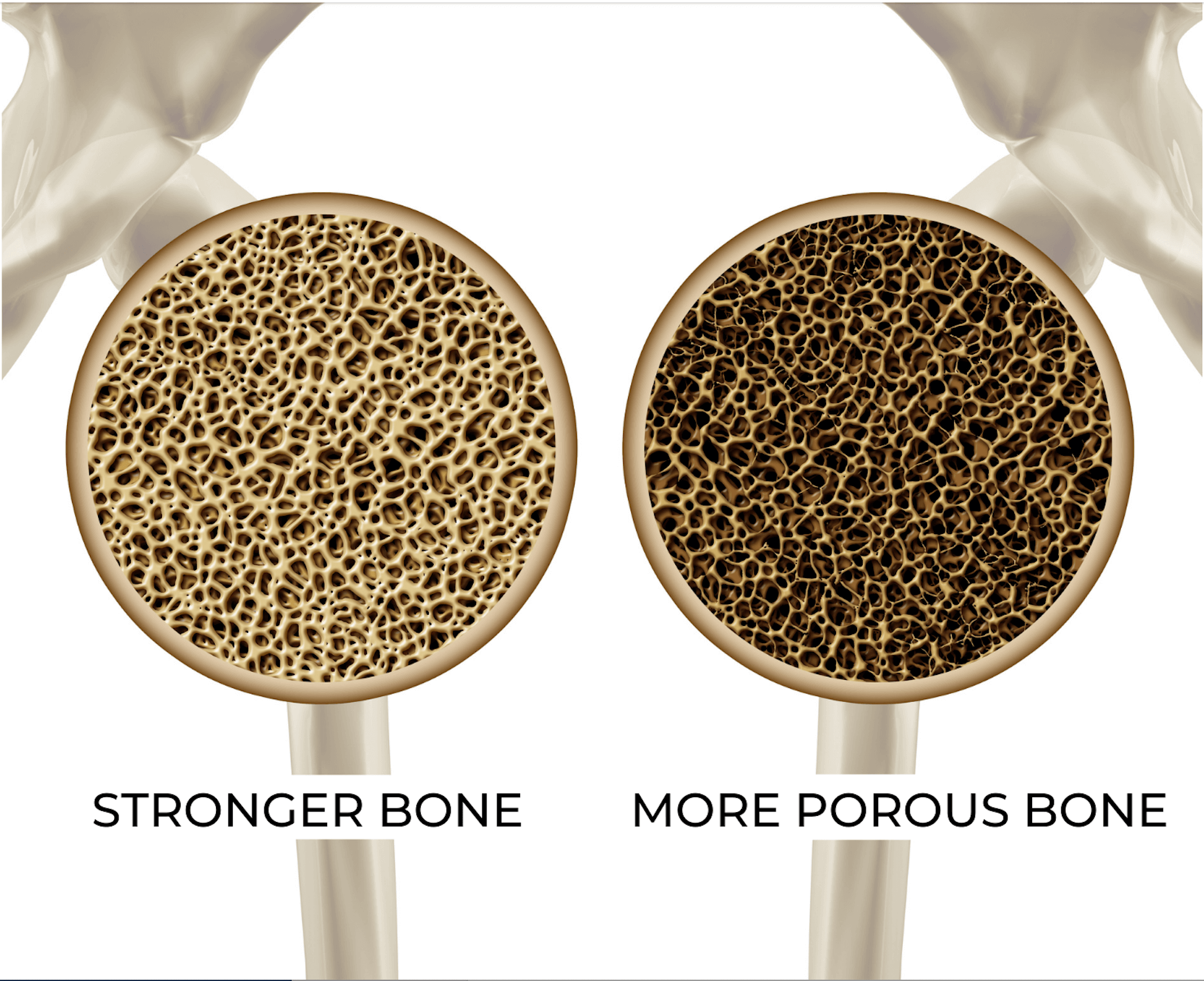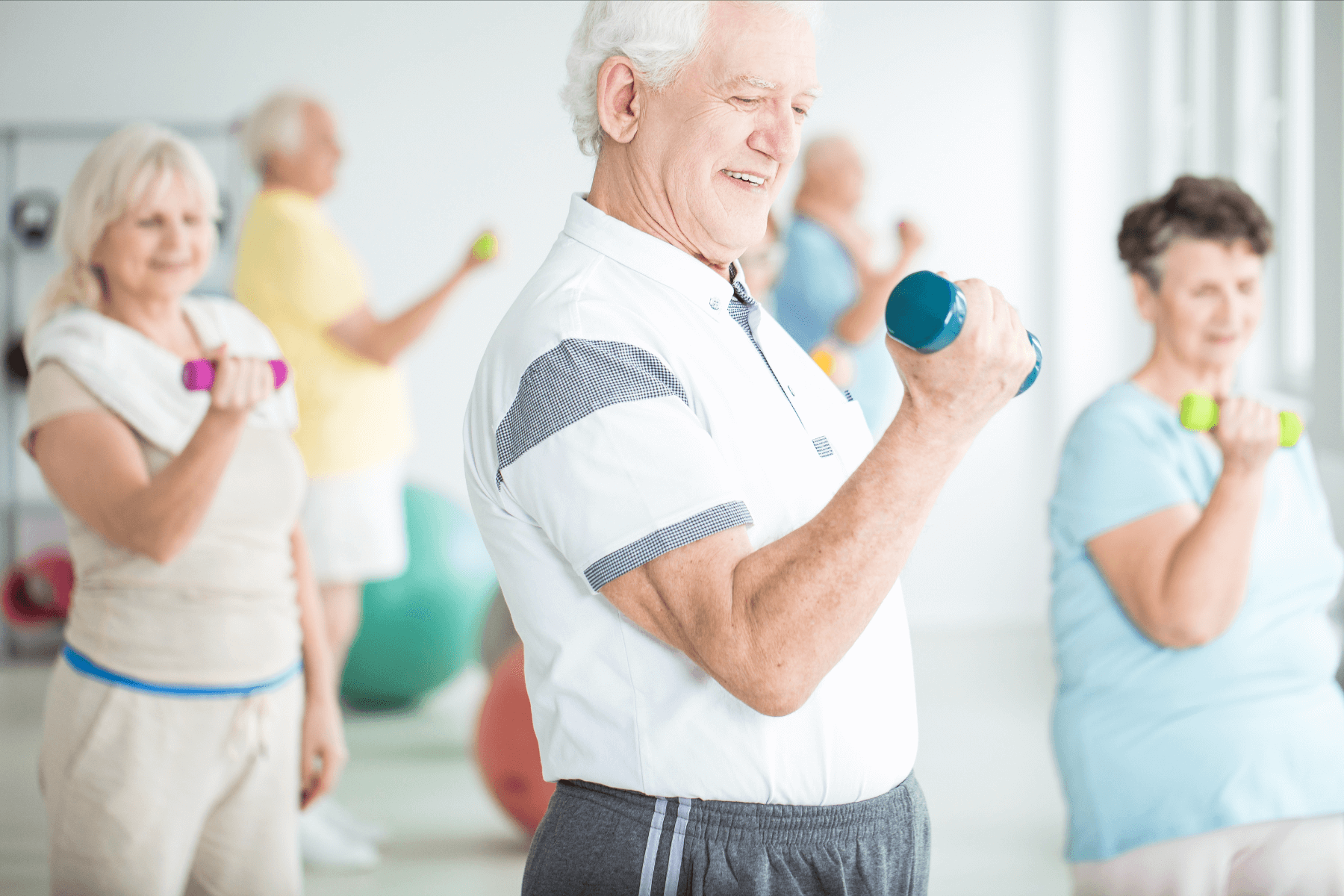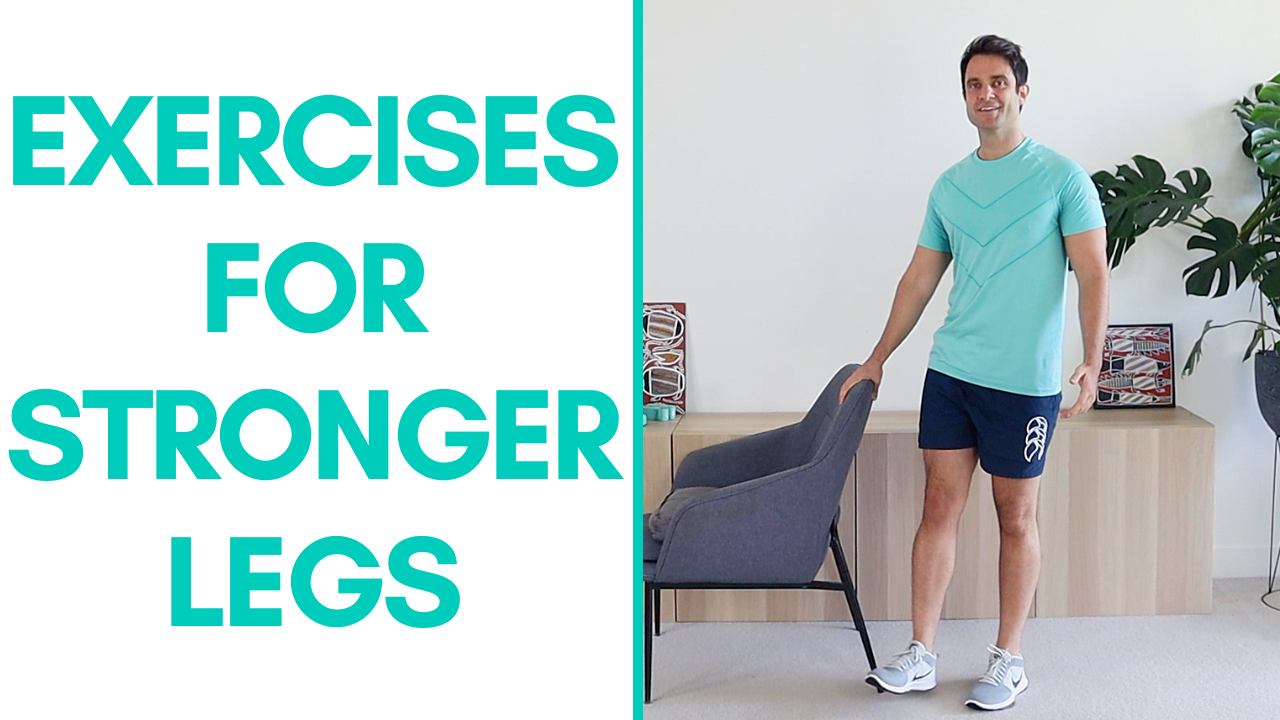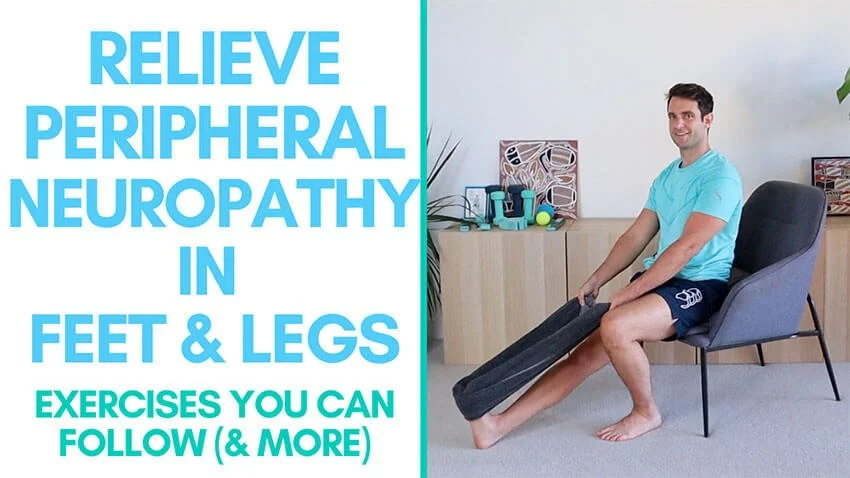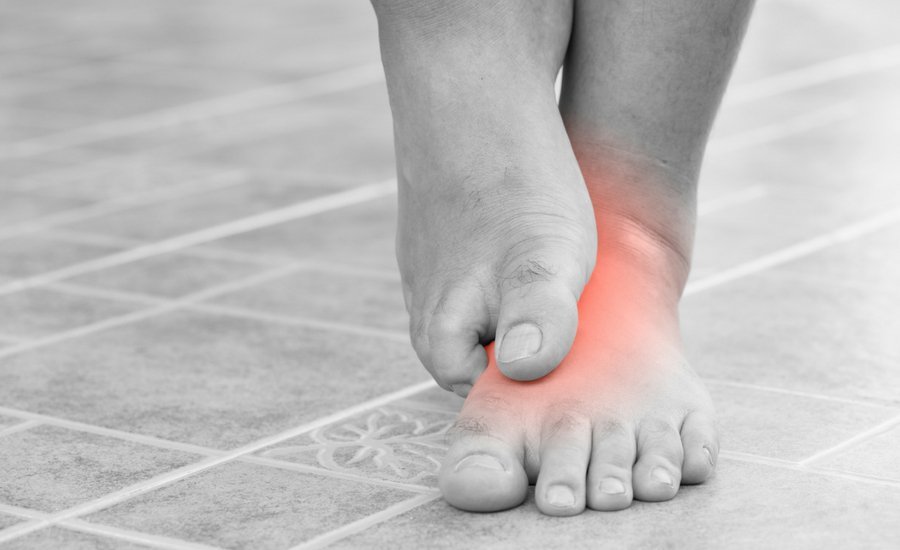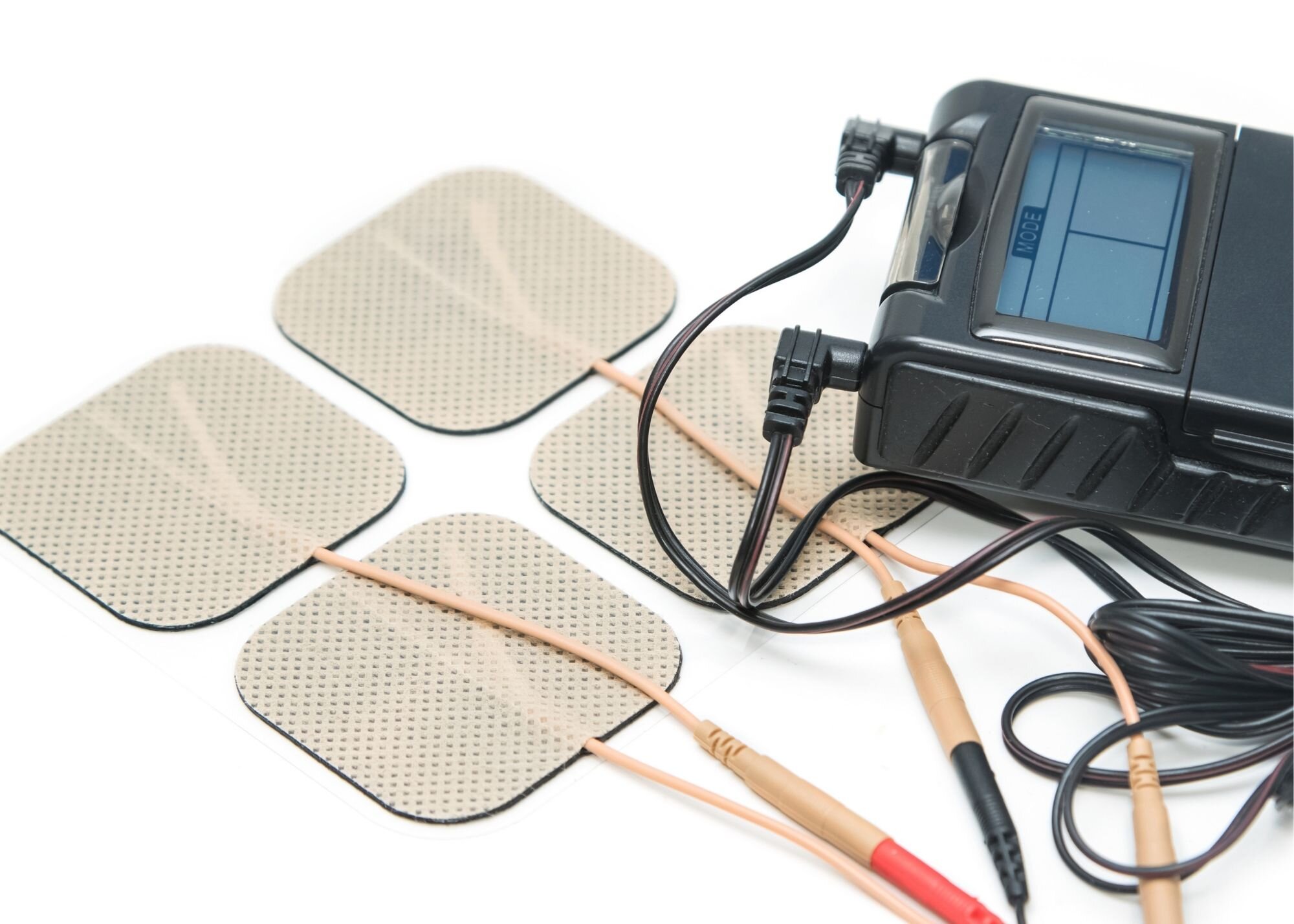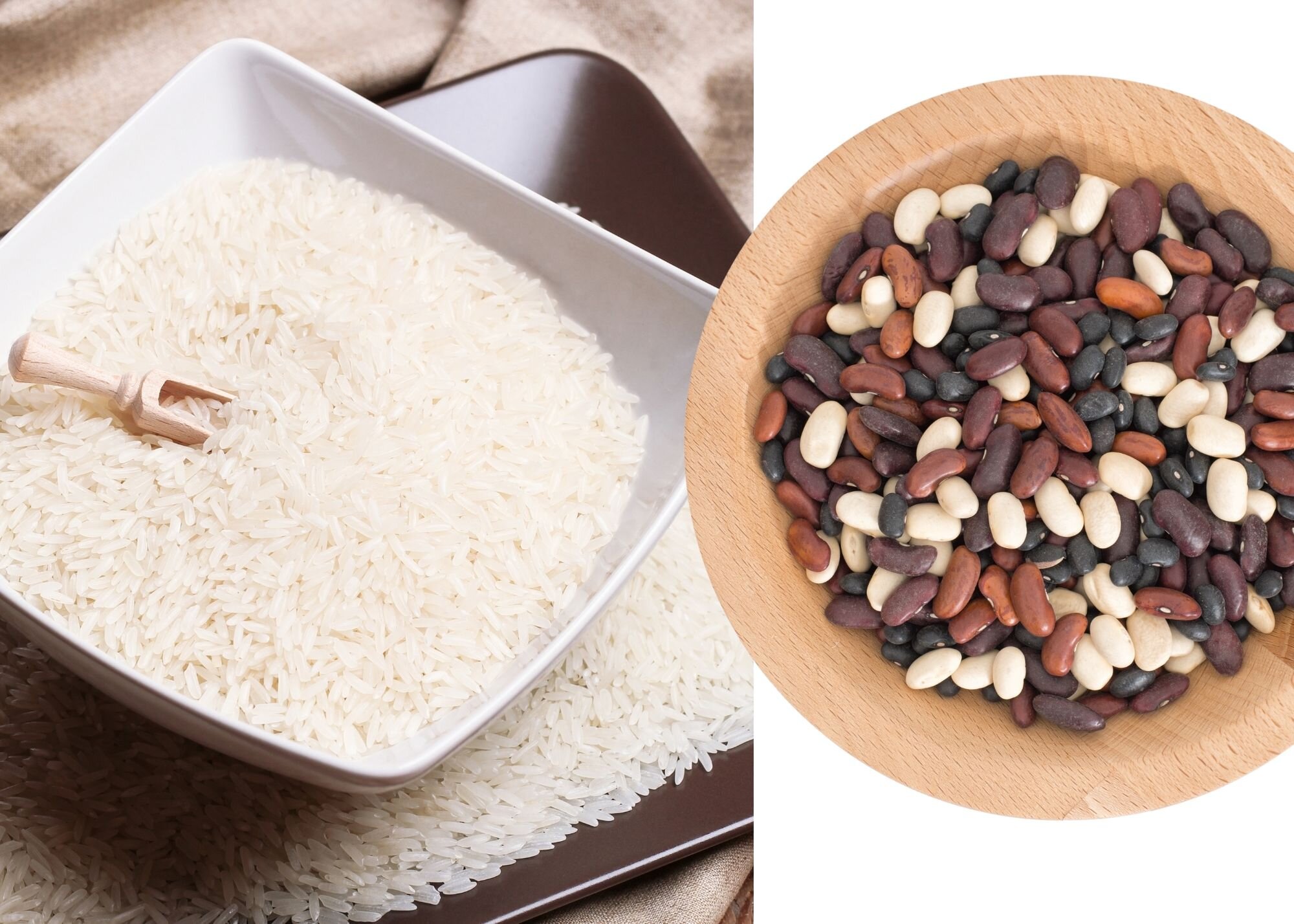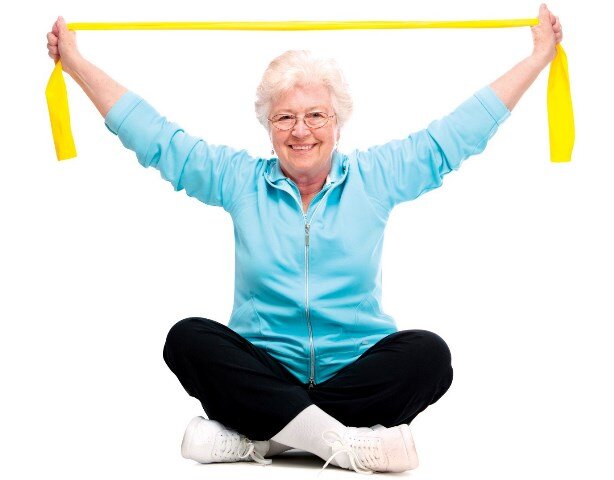
More Life Health Blog - Discussing Seniors' Exercise, Health, Fitness, & More!
Ease Peripheral Neuropathy Symptoms In Hands and Arms | Peripheral Neuropathy Exercise Routine
In this video, we go through some exercises and more to help relieve pain and symptoms in the hands and arms caused by peripheral neuropathy.
Peripheral Neuropathy Exercises For the Hands & Arms
Join me (Mike - Physiotherapist) for some exercises and more to help relieve pain and symptoms caused by peripheral neuropathy in the arms and hands.
This exercise video does not have to be done all at once. Learn what is contained within and go at your own pace, gradually building up the exercise. Use this video to help give relief from your symptoms and improve your upper body strength and mobility (important when dealing with peripheral neuropathy).
In this video we cover:
For Peripheral Neuropathy Exercises For the Feet & Legs, click here.
Do your best and any questions ask below!
- Mike
Intermediate Balance Exercises For Over 60s | Static & Dynamic Balance Exercises
In this video, we go through intermediate level balance exercises (both static and dynamic exercises) to help you improve your balance and strengthen your lower legs.
Balance Exercises For Seniors
Join me (Mike - Physiotherapist) for these intermediate balance exercises (both static and dynamic exercises).
You can go through this routine two or three times for an even better workout. Make sure you do it at least 3 times a week to start seeing improvements.
Remember to warm-up prior to doing this exercise:
Do your best and any questions ask below!
- Mike
Exercises For Stronger Bones (& Muscles) For Seniors - Beginner
In this video, we go through beginner level exercises to help you strengthen your bones (and muscles).
Stronger Bones and Muscles
Join me (Mike - Physiotherapist) for some beginner exercises to help strengthen your bones (and muscles).
Make sure to warm-up. Warm-up videos:
For more on strengthening your bones make sure to read THE COMPLETE GUIDE TO STRONG BONES OVER 60:
In this video we cover:
Do your best and any questions ask below!
- Mike
Exercises For Stronger Bones (& Muscles) For Seniors - Intermediate Level
In this video, we go through intermediate level exercises to help you strengthen your bones (and muscles).
Strengthen Your Bones and Muscles
Join me (Mike - Physiotherapist) for some exercises to help strengthen your bones (and muscles).
Make sure to warm-up. Warm-up videos:
For more on strengthening your bones make sure to read THE COMPLETE GUIDE TO STRONG BONES OVER 60:
In this video we cover:
Do your best and any questions ask below!
- Mike
The Complete Guide To Strong Bones Over 60 [Part 3]
I often get asked what exercises to do for stronger bones.
In this part, we will be covering all about exercise for strong bones. We will take a look at the best type of exercise for stronger bones, with evidence and recommended amounts of exercises
We will also finish off with some exercises (both pictures and videos) you can do, in your home to help promote bone and muscle strength.
PART 3: EXERCISE TO DO FOR STRONG BONES
(INCLUDES EXERCISE VIDEOS FOR STRONG BONES)
Along with good nutrition and cutting out factors that could be decreasing bone strength, exercise should be the first line of intervention in the management of osteopenia and osteoporosis. [1]
A proper exercise regime can improve bone strength and help you become more flexible, agile, and limber, which can help prevent falls and decrease any fractures that could occur.
This part of the article will look at the connection between exercise and stronger bones and the types of exercise most beneficial for healthy and strong bones and prevent falls and fractures.
At the end of the article, I'll share some exercise programs (with videos and pictures) for improving bone strength (and muscle strength) which you can follow along to in the comfort of your own home.
Before we get into part 3, however, if you are yet to read part 1 and part 2, it is a good idea to read part 1 and 2 first, which will give you a better understanding of your bones (and how to keep them strong) and will also help you understand this part more.
For PART 1: WHAT YOU NEED TO KNOW TO GET STRONGER BONES
For PART 2: HOW TO EAT FOR STRONGER BONES (AND OTHER FACTORS THAT IMPROVE BONE HEALTH)
Now, let's get into exercise for stronger bones.
WHAT WE’LL BE COVERING IN PART 3:
EXERCISE & BONE STRENGTH: HOW TO EXERCISE FOR STRONGER BONES
THE BEST TYPE OF EXERCISE FOR STRONGER BONES
HOW OFTEN SHOULD YOU EXERCISE FOR STRONGER BONES
EXERCISE PROGRAMS FOR STRONGER BONES/OSTEOPOROSIS
WHAT RESULTS SHOULD I EXPECT BY UNDERTAKING A BONE-STRENGTHENING PROGRAM?
EXERCISE AND BONE STRENGTH - HOW TO EXERCISE FOR STRONGER BONES
In part 1, we discovered that our bones are constantly changing—a constant breakdown of old bone and rebuilding of new bone.
These changes occur gradually in response to the pressure and forces required of them. When we get moving and exercise regularly, our body adapts to the exercise forces by creating denser and more resilient bones.
When we spend less time exercising and less time on our feet, the opposite can occur. Our bones can become weaker!
Any activity where you are putting weight through your feet is known as weight-bearing activity, and it is essential for stronger bones.
Weight-bearing activity puts needed pressure on your bones and challenges your muscle strength against gravity also.
Some examples of weight-bearing activity include walking, jogging, jumping, playing tennis and dancing. On the other hand, seated exercises or swimming are not weight-bearing activities.
The more you can get up, on your feet and active (making sure you are not overdoing it and also supporting your nutritional needs with the right type and amount of food), the more you stimulate your body to produce stronger bones.
GETTING STARTED WITH EXERCISE - BEFORE YOU START
When you've been told you have weaker bones, the thought of exercising can be a little scary. Taking up exercise for the first time can be daunting on its own, even more so if there is a genuine concern for falls and fractures.
For these reasons, seeing a Doctor and Physiotherapist is important before starting a workout routine. Your Doctor or Physio will give you clearance to begin exercise to ensure it's currently safe to go ahead and help clear out any doubts or questions you still might have about any specific activities or exercising in general.
Furthermore, a Physiotherapist can give you professional advice on how to safely and properly undertake exercise.
It's also important when starting a new workout routine to make sure to start slow and build up your exercise gradually, over time, to help avoid any issues. This is particularly important if you have been inactive for an extended period.
If you’re not sure if you are doing too much, the best thing you can do is listen to your body. If things seem off or you feel like you’re overdoing it. Stop and speak to your Physiotherapist.
With any new task, it is always harder in the beginning. After some time staying consistent with the exercises, you will eventually get the hang of everything, and it all becomes much easier.
THE BEST TYPE OF EXERCISE FOR STRONGER BONES
Once you’re ready to get into your exercises, the next step is doing the right type of exercise to produce the best results for strengthening your bones.
So what type of exercise is best for strengthening bones?
There are many types of exercise that can help strengthen bones, and to get the best effects from your exercise, it is more than just targeting the bones alone.
You want an exercise regime that takes into account the many components of fitness.
A regime that not only targets bone strength with weight-bearing exercise (which we will cover below) but also includes muscles strengthening exercises of your whole body. Stronger muscles mean better movement, greater ease of movement, less risk of falls and less strain on those bones.
You also want to improve your flexibility - again, when you are more flexible, you’re going to move much better and have less pain.
Then there are other components of fitness such as aerobic fitness and balance that should be included in your weekly exercise routine. Aerobic fitness and balance are not only weight-bearing activities good for your bones, but they are essential for a healthy body (with a healthy body comes healthier bones) and to decrease your risk of falls.
For stronger bones - exercises should incorporate a mix of the following categories:
Resistance training (using free weights such as dumbbells and barbells, elastic band resistance, body-weight resistance or weight-training machines)
Weight-bearing aerobics exercise (brisk walking, dancing, elliptical training machines)
Exercises to improve balance and posture (balance exercises, chair exercises, tai chi, yoga)
RESISTANCE TRAINING FOR STRONGER BONES
Resistance training, also commonly known as strength training, is a form of exercise focused on improving the strength and size of skeletal muscles.
Weight-bearing exercises are required for bone health, and strength training with relatively heavy weights is known to produce the most effective results.
Studies show that resistance training, either alone or combined with other exercises, could be the most optimal strategy to improve muscle and bone mass in postmenopausal women, middle-aged men, and the older population.
In one study, postmenopausal women with osteoporosis or osteopenia underwent 12 weeks of supervised strength training 3 times a week. The results confirmed that lumbar spine and femoral neck Bone Mineral Content increased by 2.9 and 4.9%.
These are just two of the many studies that show the benefits of resistance training for strengthening bones.
Now, for some of you reading this, you’re probably thinking: “Lifting weights? Is he out of his mind?”
I know the prospect of lifting something heavy, especially if your bones are already weaker, might seem scary, counterproductive... or just downright crazy. But this is the right way to strengthen your bones and is safe when done correctly.
As I already mentioned before, if you’re reluctant to start using weights, it is best to see a Physiotherapist in person to know you’re doing everything correctly, which will help give peace of mind.
You don’t have to jump straight into using weights also. If exercise is new to you, start with other exercises (like the beginner bone-strengthening exercises below), and once everything becomes easier, you can progress to using weights.
You’ll get the hang of this weight-lifting business in no time.
For a whole lot more information on strength training and how to do it right, make sure to read my article: HOW TO GET STRONG AND STAY STRONG AFTER 60 - THE COMPLETE GUIDE.
AEROBIC EXERCISE FOR STRONGER BONES
Combining resistance training with a form of weight-bearing aerobic exercise can further help strengthen those bones and increase the strength and endurance of your muscles, with the additional health benefit of improved cardiovascular fitness.
Weight-bearing aerobic exercise works the bones in your legs, hips, and spine, as they’re designed to support the whole weight of your body.
Examples of weight-bearing aerobic exercise include walking, dancing, jogging and running, among many other activities.
WALKING FOR STRONGER BONES
When we spend a lot of time seated or lying down, the body isn’t getting the signal to produce stronger bones. There is less of a need for it.
For stronger bones, it is important to get up and moving more so.
One way I recommend (especially if you’re just getting started) is by walking more.
As far as aerobic activities are concerned, walking is a great way to burn some extra calories, lower your blood sugar, strengthen the heart, and improve your mood. However, walking alone won’t do as much good when it comes to bones than when added with other exercise types.
Now, don’t get me wrong, everyone has to start somewhere - it could begin just by walking more around your home or a stroll around the neighbourhood. This is much better than spending most of your day seated.
But if you want to strengthen your bones more so, you’ll want to pick up the intensity a little. Instead of a leisurely walk, opting for something more challenging would be a much better choice.
When going out for a walk, consider not only the pace (brisk walking) but also the duration, as well as the difficulty of the terrain (stairs, hills, different surfaces) you’re walking on. Even though walking may not seem like much exercise, just like any exercise, it can be overdone, leading to pain and injury. It’s important you gradually build up the amount of walking you do and give rest days, especially if it has been some time since you have been out and about. Take your time to build a strong foundation.
Also, if you’re at risk of falling, please take appropriate precautions.
For more information on walking (and how to avoid pain and injuries), make sure to read my article: WALKING AND YOU: THE SENIORS GUIDE TO GETTING MORE OUT OF WALKING!
DOES VIBRATION THERAPY IMPROVE BONE STRENGTH?
As the name suggests, vibration therapy relies on transmitting mechanical vibrations through a device (which the user stands on), causing the vibrations to go through the user’s body.
These vibrations cause the muscles to contract and relax while also applying forces through the bones. It is suggested that the continuous vibrations increase bone strength by increasing bone formation and decreasing bone resorption. [2]
Whole-body Vibration Platform
Vibration therapy was first developed by scientists as a tool to potentially keep the bones strong of astronauts after spending some time in the zero-gravity, non-weight-bearing conditions of space. This time spent in space was causing accelerated muscle and bone loss.
The vibrating platform was designed to be used for 10-15 minutes per day and hoped to help regain some of the lost bone and muscle mass.
Today, there are two types of vibration therapy used to potentially strengthen bones: Whole Body Vibration (WBV) and Low-Intensity Vibration (LIV).
WHOLE-BODY VIBRATION uses a larger platform on which the user stands whilst holding onto handles. The vibration speed and intensity of the vibrations on this machine can be varied - up to high intensities.
Studies have shown mixed results on bone strength.
Many studies reporting beneficial effects on bone mineral density, muscle strength and falls prevention. [3, 4, 5].
Conversely, some studies also showed that WBV has little effect on bone mineral density and that weight-bearing physical exercise is superior for bone health [6, 7].
Depending on your level of osteoporosis, whole-body vibration, with its increased intensity of vibrations, may cause more harm than good and are not recommended in some cases.
There are also potential contraindications for using whole-body vibration. These include joint implants, retinal detachment, fresh surgical wounds, having a pacemaker or cochlear implants.
LOW-INTENSITY VIBRATION THERAPY, on the other hand, is a smaller platform that looks like digital weight scales and can be used by anyone and is much safer. These platforms are designed for this reason. It is still best to check with your Doctor or Physiotherapist first before using or purchasing a LIV platform.
Again research on both animal and human studies have shown mixed results with the use of LIV therapy, with some animal and human studies showing potential benefits, on bone and muscle mass and falls prevention.
Due to the fact, these platforms have fewer adverse effects than high-intensity vibration devices and have shown beneficial results, low-intensity vibration devices are recommended over whole-body vibration devices.
Although vibration therapy is still a relatively new and unexplored medium, and the definite dose of what’s best to stimulate bone growth has not been defined, there is evidence of its effectiveness in improving muscle and bone strength.
If you have difficulty undertaking weight-bearing exercise or are unable to do so, or would just like another way to help keep your bones stronger, you may want to trial vibration therapy. Vibration therapy, however, should not be used as the sole form of treatment for increasing bone and muscle strength.
As with any exercise, ensure you speak to your doctor before using a vibration device.
If your doctor has given you the all-clear to use one of these devices, speak to an appropriate professional who can help you get started and safely progress.
Build up the amount of time gradually (and the intensity of vibrations), and depending on your capabilities. This will allow your body to adapt without causing issues.
IS SWIMMING AND WATER EXERCISE GOOD FOR BONE STRENGTHENING?
A common question I get asked is, “does swimming help with stronger bones?”
Since water-based activities are performed in a low gravity environment (non-weight-bearing), they don’t put much stress on your bones, which means you are not getting the bone-building benefits.
Although with swimming and other water activities (hydrotherapy, aqua aerobics etc.), you are getting less of the forces needed to promote bone strengthening. These activities still make for good cardiovascular training, which is good for overall health.
They also help reduce stress on weight-bearing joints if you have painful joints, can help increase mobility, muscle strength and improve balance and posture. If this is a type of exercise you enjoy doing, it has many health benefits. So keep it up, but if your aim is for stronger bones, make sure to be doing other forms of weight-bearing exercise.
HOW OFTEN TO EXERCISE FOR STRONGER BONES
The goal is to implement more movement into your daily routine and to build this up over time.
An effective exercise program includes a combination of aerobic activity, resistance training, and balance and stretching exercises.
Below are suggested exercises to undertake weekly to help improve bone strength. However, if new to exercise, you should not begin with this much exercise.
Gradually build up the number of sessions you do (and time), and it’s also essential to fuel your body with the correct nutrition (as discussed in Part 2).
Resistance training - 3x per week (multi-joint exercises)
Aerobic activity - 2-3x per week - 45 min to 1 hour (E.G. walking, jogging, dancing)
Balance and stretching - 2 to 3x per week - 30 to 45 min
Ideally, weekly physical activity should include something from all three exercise groups.
EXERCISE PROGRAMS FOR STRONGER BONES/OSTEOPOROSIS
When exercising with osteoporosis (or for stronger bones), you must challenge the areas of your body commonly affected (E.G hips and spine).
Exercises should target both the lower body and the upper body and consist of weight-bearing exercises.
Exercises should be made up of compound movements (squats, lunges, push and pull movements) that load the bones of the legs, hip, spine and arms, target major muscle groups of the whole body and are functional for everyday life.
Below we will go through some exercises you can do to help promote bone strength.
EXERCISES TO PROMOTE BONE AND MUSCLE GROWTH BEGINNER EXERCISES
CHAIR DIPS
EXERCISE DESCRIPTION
Sitting forward in your chair, shuffle forward to the middle of the chair.
Place your hands on the side of the chair near your hips or on the armrests.
Lean slightly forward at the hips keeping your back straight.
Now press through your hands, straightening your elbows and lifting your buttocks off the chair, if you can.
Slowly lower your buttocks back to the chair by bending at your elbows.
Repeat for 10-12 Repetitions.
MUSCLES WORKED
Triceps (back of upper arms), Deltoids (shoulders), Chest
SEATED ROWS - WITH RESISTANCE BANDS
EXERCISE DESCRIPTION
Place the resistance band underneath your feet, and hold onto it at each end.
Now sit up tall in your chair and extend your arms out in front of you, at the same angle of the resistance band
Now pull your elbows back behind you, squeezing your shoulder blades together at the end of the movement.
Remember to keep your chest up throughout this exercise.
Return to the start position
Repeat for 10-12 repetitions.
MUSCLES WORKED
Arms, Shoulders & Back.
EXERCISE DESCRIPTION
Sitting up tall in your chair, with your feet shoulder-width apart.
Shuffle forward to the front of your chair.
From this position, bringing your feet back so your heels are behind your knees.
With your hands on the chair, on the arm-rests of the chair, or on your thighs, you’re going to lean forward at the hips, so your nose comes over your toes.
Now stand up, putting equal weight through both feet/legs.
Make sure you fully extend your legs at the knees and the hips.
And to sit down, hinging at the hips, reaching for the chair and sitting down.
Make sure to keep your chest up throughout the exercise.
Also, make sure that your knees remain in line with your toes, and they don’t move inwards when you sit down and stand up.
NOTE:
To further challenge yourself, trying placing your arms across your chest or using a lower chair.
To make this exercise easier, use a higher chair.
Repeat for 10-12 repetitions.
MUSCLES WORKED
Buttocks (glutes), thighs (quads), hips, calves, core and back.
PARTIAL LUNGES
EXERCISE DESCRIPTION
Start by standing up tall, holding onto your chair with one hand.
Step forward with one foot, and drop the back leg slightly towards the ground.
Stand up, putting weight through the front lunging leg and return to the starting position.
Make sure your front knee remains in line with your toes throughout the movement.
Repeat for 10-12 repetitions, each leg, alternating.
MUSCLES WORKED
Buttocks (glutes), thighs (quads), hips, calves, core and back.
EXERCISE DESCRIPTION
Standing up tall with your feet shoulder-width apart. Toes can be facing forward or slightly outwards.
Holding onto your chair with both hands or keep your arms out straight in front for balance.
Engage your core, hinge (bend) at the hips and sit back as you would if you were to sit on a chair.
As you sit back, keep your chest up and your core tight and go no lower than 45 degrees.
As you stand back up, put equal weight through both legs, ensuring your heels remain on the floor throughout.
Make sure your knees stay in the line of your toes, they don’t go forward past your toes, and they aren’t moving inward throughout the exercise.
Repeat for 10-12 repetitions.
MUSCLES WORKED
Buttocks (glutes), thighs (quads), hips, calves, core and back.
EXERCISE DESCRIPTION
Standing up tall with your feet about hip-width apart.
Keeping your knees straight and holding onto the chair with both hands.
Coming up onto the toes, raising your heels up off the floor, holding briefly and slowly lowering yourself back down.
Repeat for 10 -12 repetitions.
MUSCLES WORKED
Back of lower legs (Calves).
STOMPS
EXERCISE DESCRIPTION
Start by standing up tall, holding onto your chair with one hand.
Bring your knee up and stomp your foot, making sure your whole foot is in contact with the ground.
Imagine as if you are crushing an insect below your footRepeat for 8 repetitions.
BALANCE - SINGLE LEG STANCE - HOLDING
EXERCISE DESCRIPTION
Standing next to a chair for safety and stability.
Stand on one leg.
Hold this position for 45 seconds on each side. Improving every time you attempt this exercise.
When you have completed the set time, change feet.
BEGINNER EXERCISE PROGRAM TO PROMOTE BONE STRENGTH (VIDEO)
Beginner Exercise For Stronger Bones
EXERCISES TO PROMOTE BONE AND MUSCLE GROWTH - INTERMEDIATE EXERCISES
EXERCISE DESCRIPTION
Stand up tall, facing your chair
Place both hands on the chair, bringing your feet out about 1-2 feet from the chair.
Bend forward at the hips keeping your back straight and the core tight.
With a slight bend in the knees, bend your elbows, bringing your chest towards the chair.
Now straighten your arms bringing your chest away from the chair.
Make sure your chair is secure throughout.
To make the exercise harder, you can bring your feet further away from the chair.
For an easier variation, do the wall push-up.
For a more challenging variation, this exercise can be done on the floor. I.E. modified push-up on your knees or standard push-up (dependent on your capabilities).
MUSCLES WORKED
Chest, Arms, Shoulders, and Core
STANDING BENT OVER ROWS - WITH HAND WEIGHTS
EXERCISE DESCRIPTION
Stand up tall next to your chair, with one hand holding onto a light hand weight and the other hand holding onto the chair.
Now take a step back from the chair, with a slight bend in the knees, hinge at the hips, bend forward with your back straight and place your arm holding the hand weight by your side, keeping it straight.
Now bending at the elbow, pull your arm up, leading with the elbow, behind your back, and return to the start position.
Squeeze your shoulder blades together when lifting your arm up.
Repeat for the set repetitions and change arms.
MUSCLES WORKED
Back, Arms, Shoulders, and Core
SIT TO STANDS WITH HAND WEIGHTS
EXERCISE DESCRIPTION
Sitting up tall in your chair, with your feet shoulder-width apart.
Shuffle forward to the front of your chair.
From this position, bring your feet back so your heels are behind your knees.
With your hands by your sides, holding onto the hand weights, you’re going to lean forward at the hips so your nose comes over your toes. Keep your chest up and your back straight.
Now stand up, putting equal weight through both feet/legs.
Make sure you fully extend your legs at the knees and the hips.
Follow this in reverse to sit down, sticking your bum out before sitting down stand back up to the standing position.
Make sure to keep your chest up throughout the exercise.
Also, make sure that your knees remain in line with your toes, and they don’t move inwards when you sit down and stand up.
Repeat for 10-12 repetitions.
MARCHES WITH STOMPS - MORE INTENSITY
EXERCISE DESCRIPTION
Start by standing up tall, holding onto your chair with one hand.
Bring your knee up and stomp your foot, making sure your whole foot is in contact with the ground.
Imagine as if you are crushing an insect below your footRepeat for 10-12 repetitions, alternating legs.
CALF RAISES WITH HAND WEIGHTS
EXERCISE DESCRIPTION
Standing up tall with your feet about hip-width apart.
Holding onto some light hand weights with your arms by your side or onto the chair if you are unable to do the exercise with the hand weights.
Keeping your knees straight and holding onto the chair with both hands.
Coming up onto the toes, raising your heels up off the floor, holding briefly and slowly lowering yourself back down.
Repeat for 10 -12 repetitions.
If you do not have the required balance for this exercise, complete it by holding onto the chair or without the hand weights.
MUSCLES WORKED
Back of lower legs (Calves).
SQUATS WITH HAND WEIGHTS
EXERCISE DESCRIPTION
Standing up tall with your feet shoulder-width apart. Toes can be facing forward, or slightly outwards.
Holding onto some light hand weights with your arms by your side.
Engage your core, hinge (bend) at the hips and sit back as you would if you were to sit on a chair.
As you sit back, keep your chest up and your core tight and go no lower than 90 degrees.
As you stand back up, put equal weight through both legs, ensuring your heels remain on the floor throughout.
Make sure your knees stay in the line of your toes, they don’t go forward past your toes, and they aren’t moving inward throughout the exercise.
Repeat for 10-12 repetitions.
MUSCLES WORKED
Buttocks (glutes), thighs (quads), hips, calves, core and back.
EXERCISE DESCRIPTION
Standing up tall, holding on to your hand weights
Take a step forward and gently drop your knee down towards the floor, stopping just before the floor.
Stand up, putting weight through the front lunging leg and return to the starting position.
Come back up and repeat for the opposite leg.
Keep your body upright throughout the exercise, ensuring the knee of your front foot does not come past the line of your toes.
Make sure your front knee remains in line with your toes throughout the movement.
Repeat for 5 repetitions each leg.
MUSCLES WORKED
Buttocks (glutes), thighs (quads), hips, calves, core and back.
JUMPS
EXERCISE DESCRIPTION
Standing up tall or holding onto a chair or rail. Do not try and jump too high.
Jump and repeat for 10-12 repetitions.
BALANCE - SINGLE LEG STANCE
EXERCISE DESCRIPTION
Standing next to a chair for safety and stability.
Stand on one leg.
Hold this position for 45 seconds on each side. Improving every time you attempt this exercise.
When you have completed the set time, change feet.
CAT / COW STRETCH
A gentle stretch for the back
EXERCISE DESCRIPTION
Kneeling on the floor, legs at 90 degrees to your body and your hands underneath your shoulders.
Round your back, pulling your abdominals into your spine, gently pushing your midback toward the roof.
Now move your belly forward and gently arch your back, and gently look up to the ceiling.
Repeat for 5 repetitions - nice, slow and controlled feeling the stretch.
FOR OTHER EXERCISE VIDEOS TO HELP
MAKE SURE TO SUBSCRIBE TO THE MORE LIFE HEALTH YOUTUBE CHANNEL
CLICK FOR MORE EXERCISE VIDEOS FOR SENIORS
INTERMEDIATE EXERCISES FOR IMPROVING BONE STRENGTH (VIDEO)
Intermediate Bone Strengthening Exercises For Seniors
WHAT RESULTS SHOULD I EXPECT BY UNDERTAKING A BONE STRENGTHENING PROGRAM?
Stronger bones are not built in a night. The same goes for other aspects of fitness.
Our body reacts to consistent efforts - the more we exercise, the more our body changes and adapts. With gradual progressions (I.E., continuously challenging yourself as you get stronger and your fitness improves), your body will continue to change and adapt.
Completing one workout session is a step in the right direction, but only after some time staying consistent with the exercise, you start noticing the changes.
To know exactly what results to expect is difficult. Everyone is different, and as we have covered through this 3-part article, there are many factors that contribute to stronger bones.
Long-term commitment to exercise (combined with what was covered in part 2) is the way to build stronger bones and prevent fractures.
EXERCISES TO AVOID WITH OSTEOPOROSIS
By now, you'd understand the importance of exercise in the pursuit of stronger bones, but it's quite possible that you still hold some reservations toward the idea - and that's understandable. The thought of brittle bones, fractures, and injuries doesn't make it easy to get into exercise with a lot of confidence.
Having fears and apprehensions is normal, especially if exercise has never played a big part in your life, and especially if you have had past fractures.
However, avoiding exercise is not the answer.
Having low bone density, a previously broken bone, or a diagnosis of osteoporosis doesn't mean every move or activity will cause a fracture.
As touched on earlier, seeing a Physiotherapist can help out with an individualised exercise program, and they can take you through how to do the exercises correctly. They can also let you know when it is time for you to move forward with all your exercises, which allows for continued progress.
It's also imperative that you understand what exercises to avoid if you have osteoporosis which may put you at risk of fractures.
This section is here to guide you through some movements to avoid and some safe alternatives, which will hopefully help alleviate some of the fears and reservations you might have. What you're about to read aren't strict rules and shouldn't be treated as such; consider these words as recommendations.
Hopefully, by the end of this chapter, you'll feel more confident and prepared to tackle whatever comes next.
Increased spinal flexion
BENDING FORWARD
Bending forward (known as spinal flexion), for example - to tie your shoes or pick up a dropped object, is generally a safe movement. However, this action may be putting excess strain on your spine.
One of the most common causes of back issues is bending forward while holding a heavy object; this action puts an uneven weight on the spine and could increase the risk of fractures.
Like with any other movement, it's important to be conscious and aware of this movement and avoid rounding your back as much as possible.
You also want to avoid bending suddenly or repetitively in an uncontrollable manner and twisting in this position.
Keep your back straight, bend your knees, and do exercises to keep your back and core muscles as strong as possible.
COMMON BENDING FORWARD POSTURE - UNSAFE TOE TOUCH
If you’re flexible, standing toe touches are quite harmless, and you should have no issues.
However, if you are not flexible with weaker bones, this movement does put extra pressure on the spine and could over-stress the bones and other structures in this area. Avoid this movement where you can.
ALTERNATIVE TO TOE TOUCH
One way to put the stress off your spine when doing toe touches is to bend your knees. This will alleviate the tension not only in your back but in your hamstrings as well. Make sure to keep your back straight and your gaze forward. This will ensure a straight back, and you’ll be able to reach for your toes without compromising your back.
ALTERNATIVE HAMSTRING STRETCH
For an alternative, safe hamstring stretch, CLICK HERE.
POOR LIFTING TECHNIQUE VS PROPER LIFTING TECHNIQUE
It is very common for people to lift with poor technique, putting excessive strain on the spine, which can lead to fractures or other back injuries. Often, this movement is done many times during the day, which increases the strain on the spine. When weight is added, even more so.
Example- poor lifting technique
The safest way to pick up a load is to stand close to the load, keeping your arms close to your body, bend at the knees and hips, brace the core, look straight ahead and keep a straight back until the weight is off the ground.
Example - good lifting technique
SIT-UPS
One of the most common core-strengthening exercises and my least favourite of all exercises.
The problem with sit-ups is the repeated lumbar flexion which causes a massive strain on the lower back. Going back and forth and pulling your body against gravity puts a lot of compressive force on the spine, which is especially not good with weaker bones.
Sit-ups also require you to continuously pull on your neck, which can also cause strains.
And they’re not even that effective for a core exercise. There are better core exercises.
However, if you like sit-ups and have been doing this movement for a long time and can do this exercise without feeling any pain, it should be okay for you to continue.
Otherwise, there are much better exercises you can do that will provide the same results.
ALTERNATIVE EXERCISE - THE PLANK - KEEPING NEUTRAL SPINE
The plank exercise is a much more effective exercise for improving the strength of the core and much safer. It keeps the spine straight (neutral position) without the repeated bending (flexion).
Safer Core Alternative - Plank Exercise
Safer Core Alternative - Plank Exercise
If you find this exercise difficult, you can modify the plank to make it a little easier by resting on your knees, and you also can build up your time as you get stronger over time. Start with a small amount of time.
Seated core exercises can also work that core whilst keeping your spine in that neutral position.
Also, click HERE for more CORE EXERCISES.
PROLONGED EXERCISE/OVER-EXERCISING
It’s important to maintain a proper balance with exercise. Finding the motivation to start exercising is one thing, but having the patience and the wisdom to know when to take a break is something entirely different.
Over-exercising can be just as harmful as not exercising at all!
Working out too much or trying to tackle a more challenging exercise too soon can have detrimental effects on your bones and your whole body. Over-exercising can cause muscle fatigue, strains, stress fractures, joint strains, and a general decline in performance.
The best way to prevent over-exercising is to schedule rest days in advance. Make sure to alternate between the muscle groups you’re working with. For instance, if you worked your arms and upper body today, try to exercise your lower body the next day, so your upper body has a chance to recover.
Also, build up the amount of exercise or activity you are doing. If you have spent a lot of time being inactive, spending a whole day on your feet may cause issues.
When you’re pushing your postural muscles (the muscles that help you to stand) to their limits, other areas of your body (joints and bones) take on a more strain, which could put you at greater risk of pain, injury or fracture.
Break up your physical activity into smaller sessions (like you do with your exercise) and gradually progress it as you become fitter.
Finally, listen to our body! If your muscles are too sore, focus on stretching and flexibility exercises rather than strength training. If you feel like the weights are too heavy, switch them for lighter ones. Or take a rest! There’s no shame in taking things slowly and at your own pace.
Your body is constantly talking to you…. so make sure you listen.
PREVENTING FALLS TO AVOID FRACTURES
As we get older, the risk of falling and fracturing something gets significantly higher.
A nasty fall could easily result in broken bones or other serious injuries, especially when bones are weaker.
Preventing falls is very important, and there are many things you can do right now to help prevent them.
I have written an in-depth article on falls prevention, which will help prevent falls.
For a whole lot more information on Falls Prevention, make sure to read my article: THE ULTIMATE GUIDE TO FALLS PREVENTION FOR SENIORS.
So we have now come to the end of the complete guide to stronger bones over 60.
Implement what’s contained in this 3 part article, and you will be well on your way to improving bone strength.
It will take time and consistent effort to make improvements, but you can do it!
I wish you all the best on your journey to a healthier and stronger body and bones.
Do you have osteopenia and osteoporosis? Have you made improvements by following already what’s contained within this article? What exercise or food have you found to help? Let me know in the comments below.
SOURCES
CLICK HERE TO VIEW ALL SOURCES USED IN THIS ARTICLE.
The Complete Guide To Strong Bones Over 60 [Part 2]
Loss of bone strength is NEVER due to aging alone! There are always other factors beyond age contributing to weaker bones, which you take control over.]
In this part (part 2), we will cover factors that may be putting you at risk, what factors to do more of (or start doing) to improve your bone health, and we will cover nutrition in detail, which, as you'd know, is so important in good bone health.
PART 2: HOW TO EAT FOR STRONGER BONES (AND OTHER FACTORS THAT IMPROVE BONE HEALTH)
We are now into part 2 of The Complete Guide To Strong Bones.
In Part 1, we covered all about healthy bones, osteopenia and osteoporosis. From how our bones work to what comprises strong bones (density and quality), why bones become weaker and how to test bone strength. If you haven't already, make sure to check out Part 1: What You Need To Know To Get Stronger Bones before continuing with this section.
We also established that bones do get weaker and lose density as we get older. However, loss of bone strength is NEVER due to aging alone! There are always other factors beyond age contributing to weaker bones, which you can take control over. Meaning, there are many things you can do to improve your bone strength and prevent fractures.
In this part (part 2), we will cover factors that may be putting you at risk of weaker bones. What factors to do more of (or start doing) to improve your bone health, and we will cover all about nutrition for stronger bones (including all about the different vitamins and minerals), which, as you'd know, is so important in good bone health.
As with anything health-related, improving your bone strength does take some time and work. However, once you get the hang of what's required, it all becomes much easier.
Take your time going through this part and implement the strategies best you can to improve your bone strength and help prevent any fractures.
Now, let's get into it!
WHAT WE’LL BE COVERING IN PART 2:
WHAT YOU SHOULD CHANGE FOR STRONGER BONES STRENGTH
HOW TO GET STRONGER BONES - HOW TO PREVENT BONE LOSS AND FRACTURES NATURALLY
NUTRITION: EATING FOR STRONGER BONES
KEY NUTRIENTS FOR STRONGER BONES (MICRONUTRIENTS)
6 BEST FOODS FOR STRONGER BONES
WHAT YOU SHOULD CHANGE FOR STRONGER BONES
CAUSES OF WEAKER BONES
The first step towards improving your bone health (and your health) starts with making some necessary lifestyle changes.
Before we cover what healthy habits are beneficial for bones that you should be doing more of, let’s look at some factors that may need to be stopped (or limited) first that are putting your bones at risk.
Some of these factors are more obvious, such as smoking or excessive alcohol consumption, while others are less known, like caffeine, stress, and even certain foods.
Let’s now look at these factors to cut out or limit.
SMOKING (TOBACCO) & EXCESSIVE ALCOHOL CONSUMPTION
I’m sure it’s no surprise that there is a clear link between cigarette smoking and excessive alcohol consumption, and reduced bone density. There is also a clear link between these factors and an increase in fractures. [1 - 4]
If you do smoke or drink in excess, this step should be the first priority to improve your health and your bone strength.
Quitting these habits, especially after some time doing them, can be difficult, but it is not impossible. There are many successful plans out there that can help, which you can speak to your doctor about.
EXCESSIVE CAFFEINE
A daily cup of coffee is something enjoyed by many!
Coffee contains small amounts of many essential nutrients necessary for a healthy body, including B vitamins, magnesium and potassium.
Ask different doctors or nutritionists, or check the research, and you'll find people and studies on both sides on the "is it healthy?" debate. Some will say it's good for your health, and others will say it's not good.
Like alcohol, issues may arise if consumption is excessive. A study published in The American Journal of Clinical Nutrition claims that caffeine intake in amounts >300 mg/d (roughly three cups of coffee) accelerates bone loss at the spine in elderly postmenopausal women.
If you have an excessive intake of caffeine, or caffeine leaves you anxious and stressed out, or it affects your sleep, I think it's safe to say it's most probably not doing you any favours, and reducing it could improve your health.
STRESS
Another factor that contributes to bone loss is none other than stress.
When it comes to improving health, eating healthily and exercising is usually emphasised. On the other hand, reducing stress is less spoken about, even less for improving bone health.
Reducing stress, however, is just as important as healthy eating and exercising for our health and bone health.
When under stress, our body goes into survival mode.
In this state, we are in a higher state of arousal and alertness, and energy production is increased to deal with the threat or 'perceived' threat.
Our body gets this extra energy by promoting a catabolic state (breaking down) of fat, muscles and bones for fuel (energy) to deal with the threat. [5]. This increased fuel consumption highlights the importance of adequate nutrition, along with reducing stress for bone health.
The increased alertness also explains why people have a hard time sleeping when stressed or are worried about something.
Furthermore, when a stress response is triggered, our hormones change in response to this.
In part 1, we saw that an estrogen deficiency plays a role in osteoporosis, but other hormones, including progesterone, testosterone, dehydroepiandrosterone (DHEA), and estradiol, also play a role in our bone health.
Lack of these essential hormones triggers a decline in bone mineral density, which is often a result of high stress levels. [6, 7, 8]
Another hormone that plays a role in our bone health is one you may have heard the name of before, that being cortisol.
Cortisol is our body's primary stress hormone. It is a vital hormone that plays a critical role in dealing with threats to our body.
When a threat is detected, our nervous system will signal the adrenal glands to produce cortisol. It will then begin circulating our body (in our blood), doing what it has to do to help return everything to normal.
When the threat is gone, cortisol has done its job and levels in the blood will decrease.
What happens, however, when stress levels are always high? Cortisol levels remain high in your body.
Many studies link high cortisol levels to decreased bone density. [9, 10, 11]
When cortisol levels remain high, the hormones beneficial for strong bones are at lower levels.
Cortisol also blocks calcium, an essential nutrient in bone cell growth, from being absorbed. [11] (More on calcium in the next section of the article).
As you can see, getting your stress under control is a must for good bone health.
I have noticed that a lot of the time, most people don't even know they're under constant stress when they are. They've become accustomed to the higher stress state. It's usually not until they see the benefit of stress reduction techniques that they then realise the stress they were under.
We are all under stress in some form or another; even crossing a busy road, switching on the TV or getting on social media these days usually sparks a stress response.
Day-to-day stress is completely normal. The goal here isn't to strive towards an entirely stress-free life, that would be practically impossible! But learning how to manage high-stress situations will benefit your mind, body, and bones.
Regulating your sleeping habits, practising mindfulness, or taking a stroll in nature are some ways, of many, to reduce stress. It's about finding what works for you. We will touch on this more in the next section.
INFLAMMATION
Another factor that can contribute to weaker bones is inflammation.
Before we go into how to decrease the inflammation in your body, let’s take a quick look at what inflammation is.
Let’s say you catch a cold or unknowingly eat a peanut you’re allergic to. What happens next is that your body sounds the alarm to make it known that there are unwanted intruders in your system. This is the cue for white blood cells to attack the intruders and defend your body from potential harm.
So, basically, inflammation is your body fighting infections, toxins, injuries, and similar threats. When we eat certain foods, don’t get enough sleep or exercise, or suffer too much stress for long periods, our bodies become chronically inflamed.
Chronic (long term) inflammation can lead to many health issues, including poor bone health.
Evidence shows that inflammation, especially chronic inflammatory diseases, are closely linked to bone loss. Inflammation can decrease bone formation and increase bone resorption.
Further studies have found that pro-inflammatory cytokines (molecules in your body that favour inflammation) are implicated in bone remodelling and may play a significant role in the development of osteoporosis.
The good news is the inflammation can be successfully reduced by making a few conscious and healthy lifestyle changes. Introducing a healthy diet and cutting back on inflammatory foods (such as processed foods and trans fats) is a step in the right direction.
Other things you can do to fight inflammation include getting enough sleep, exercising regularly, and reducing stress.
We’ll talk more about proper nutrition, exercise, and stress reduction in the following sections.
POOR FOOD CHOICES
The next factor that plays a role in weakening bones is the type of food we eat.
We all know the 'junk' foods that taste good but are doing our health no favours. However, there are also compounds found in natural foods which you may not be aware of that make some healthy foods not the best choice for strongest bones.
In this section, we'll look at the junk food to avoid and what to be aware of in natural foods so you can make better food choices for better bone strength.
PROCESSED FOODS & REFINED VEGETABLE OILS: THEIR ROLE IN POOR BONE HEALTH
The first foods to avoid are … you probably know what I'm going to say here ... the processed, junk stuff.
Many studies have shown diets high in processed foods (common in western diets) are associated with decreased bone density and osteoporosis. [12-16]
These foods are high in vegetable oil which increases the inflammation in your body. As discussed in the previous section, there is a clear relationship between inflammation and bone degeneration. [17, 18]
Processed foods are full of sodium and other additives harmful to your health and are devoid of much-needed nutrients necessary for healthy bodily processes.
The are also full of refined sugar. Overconsumption of refined sugars potentially increases the risk of osteoporosis. [19].
Processed foods include confectionery, biscuits/cookies, soft drinks (soda), processed meat, french fries, mayonnaise and other condiments, pastries and other highly processed desserts.
Note: There are always healthier alternatives (or versions) of these foods with better ingredients, so it does not mean you have to live without them.
[To read more on processed foods, vegetable oils and choosing healthier alternatives - click here]
On the other hand, diets high in natural nutrient-dense foods improve bone density and are protective against fractures. [20, 21, 22, 23].
Higher adherence to diets comprised mainly of nutrient-dense foods (for example, the Mediterranean Diet) is associated with a lower risk of hip fractures. [22]
By cutting out processed foods from your diet (or limiting them the best you can) and switching to real, natural foods, you make a massive leap towards better bone health. We will discuss nutrition in greater detail in the next section of this article.
However, before we get deep into nutrition, there is something else you should be aware of to help you make better food choices for improved bone health. That is...
ANTI-NUTRIENTS
We’ve seen that a nutrient-rich diet is hugely important for strong bones.
When grown in healthy soil or when eating their natural diet (for animal-based foods) - natural foods are the most nutrient-dense foods you can eat.
However, some foods we eat have a natural built-in defence mechanism, which, when consumed, inhibits the absorption of essential nutrients. These compounds are known as anti-nutrients.
Mother Nature just had to make this all more confusing, didn’t she! :)
Anti-nutrients are mainly in plant foods (primarily leaves, grains, legumes, vegetables, seeds and nuts). These chemical compounds are a natural way plants defend themselves from predators (animals, insects, and fungi).
There are several anti-nutrients in foods we eat, including:
Phytates (Phytic Acid) - Present in whole grains, seeds, legumes and nuts. Phytates may decrease the absorption of iron, magnesium, zinc and calcium. [24, 25]
Lectins - Present in most plant foods, mainly legumes (beans, soybeans and peanuts) and grains (wheat/gluten) and even animal foods. Lectins may interfere with the absorption of certain minerals and may alter gut function and increase inflammation [26]
We can't avoid lectins because they are present in pretty much all foods. However, it is important to cook and prepare foods to decrease the lectin content.
Goitrogens - Found in cruciferous vegetables (E.G., broccoli, cauliflower and kale etc.). Goitrogens can prevent the absorption of iodine and can interfere with thyroid function. [26]
Oxalates - High in green leafy vegetables and tea. Oxalates can bind with calcium preventing it from being absorbed. [27]
Tannins - Tannins are found in tea, coffee and legumes. Tannins can bind with iron preventing it from being absorbed. [26, 28]
Now, you're probably reading this and are a bit concerned that many of these foods you knew to be healthy might not be the best for your bone health.
So, what's the deal? Should we try to avoid them?
Well, yes and no.
Anti-nutrients aren't inherently bad for us. Let's look at tannins as an example. Tannins are biomolecules found in fruits, legumes, tea, and coffee. They have been shown to have antioxidative properties, antibacterial effects and can protect against heart disease and cancer. [28]
Conversely, tannins are considered anti-nutrients because they can inhibit iron absorption. [28]
In regards to stronger bones, why is this important? Because some foods may not be the best choice to obtain needed nutrients.
Let's take calcium as an example. We know calcium is an essential nutrient for bone strength. Spinach is a food high in calcium. However, it also has a high oxalate content, inhibiting calcium absorption, making it not a good choice to increase calcium levels. We will discuss calcium in the following sections of this article.
It's good to be aware of (anti)nutrients in our foods, especially if following a restrictive diet, as certain food choices may not be giving you the required nutrients for best bone health (and overall health).
But we definitely shouldn't discard whole food groups, especially when there also proven health benefits. It is a good idea to eat a balanced diet (with all food groups) to ensure you are getting and absorbing adequate nutrients.
Furthermore, when these foods are cooked or prepared in other ways (e.g. fermentation or soaked) and not eaten raw, most anti-nutrients are removed.
We'll look at nutrition and what to eat for the best bone health in the following sections.
HOW TO GET STRONGER BONES
HEALTHY HABITS FOR STRONGER BONES
We've now gone through what to eliminate for better bone health.
It’s now time to look at what to be doing more of to improve your bone strength and help prevent any fractures.
The first is….
SUNLIGHT
One of the most instrumental things you can do to protect your bones is to.….. go outside!
Sunlight is the absolute best source of vitamin D, and we all know how vital vitamin D is for our health and strong and healthy bones!
A deficiency in vitamin D is strongly associated with osteoporosis. [31]
Without this crucial vitamin, our bodies wouldn't be able to absorb the calcium we so desperately need to build strong bones.
Do your best to get more sunlight each day, avoiding the hottest part of the day during the summer months. Studies show that sensible sun exposure (even just 5-10 minutes of exposure on the arms and legs or the hands, arms, and face, 2 or 3 times per week) and increased vitamin D in the diet (or through supplements) is a reasonable approach to guarantee adequate vitamin D.
Remember supplements are not to substitute natural sunlight and diet, so if possible, try to use what Mother Nature has provided us.
We'll discuss the importance of vitamin D and other nutrients needed for bone health later in this article.
SLEEP
Lack of sleep can weaken your bones. [30, 31]
One study, published in the Journal of Bone and Mineral Research, found that getting five or fewer hours of sleep at night can cause lower bone mineral density and increase the risk of osteoporosis.
Other research has shown, any disruption in our circadian rhythm (the process that regulates our sleep-wake cycle) can impair bone formation. It looks like the main culprit behind this is what's often called the sleep hormone - melatonin.
Melatonin is an endogenous hormone produced by the pineal gland and is responsible for controlling our sleep-wake cycle. Our body produces melatonin during the night, alerting our brains that it's time to go to sleep.
Melatonin has many functions aside from regulating our sleep. Studies show that melatonin is in charge of regulating our bone metabolism and improving bone formation by promoting osteoblast activity (remembering back to part 1 - the cells that build bone up) and decreasing bone resorption.
In simpler terms, melatonin helps develop bone tissue (and teeth), and the less we have of it, the more we are at risk of suffering issues with our bones.
So, start improving your sleep each night. Make it another priority. Click here for some tips on how to get a better night's sleep.
REDUCING STRESS
Reducing stress is one of the best ways to fight inflammation and protect your bones. As I mentioned earlier, avoiding stress altogether is downright impossible; however, finding healthier ways to respond to stressful situations is something you can do!
Making a conscious effort to cut out stress in your life or to make sure to take some time out of your day to reduce your stress, which could be as simple as taking a bath, reading a book, going for a walk in nature or along the beach, will help improve your bone health.
There are also many great techniques, programs and books that can help you get on top of your stress. Some proven and popular techniques are Meditation, Yoga and Tai Chi.
These techniques may not be for you, and that's ok! Decreasing stress is all about finding what feels good to you personally. Explore other avenues and see what works for you.
If you're still stuck, ask yourself, "What makes me happy and relaxed?" Whether it's gardening, baking, journaling, or just basking in the sunlight on your front porch - do what feels right to you, and do more of it!
Another way to reduce stress is through breathing exercises.
Breathing exercises are an easy and quick way to reduce stress.
There are various breathing techniques available, and you can try different ones until you find one that suits your needs best.
Here is one breathing technique you can use.
Lie flat on your back with your knees bent (you can lie on a bed or use pillows for more support and comfort). Or sit in a comfortable chair.
Place your left hand on your chest and your right hand on your belly.
Start to slowly inhale through your nose, allowing your breath to flow to your belly (you should feel your stomach rise as it fills up with air).
Hold your breath for a couple of seconds and then pucker your lips and exhale until your belly is flat.
Practice a few times a day for 5 - 10 minutes.
Additionally, this meditation technique which when done once a day for only ten minutes, can vastly improve your mental health and help you reduce stress.
NUTRITION: EATING FOR STRONGER BONES
GETTING THE RIGHT NUTRITION
What we eat has a significant impact on our body as a whole; healthy food provides energy, fuels our brains, builds DNA, repairs muscles, and keeps our bones healthy.
Proper nutrition is crucial to improving bone strength and preventing bone diseases.
In this section, we'll discuss the basics of nutrition for better bone health.
We'll focus on how much and what you should be eating. We will also look at the key nutrients for stronger bones in detail. I'll also let you know six foods that I have chosen to add to your diet for better bone health and the best supplements for bone health.
So let's get started with the first step for eating better for stronger bones.
GETTING ENOUGH CALORIES
When it comes to maintaining an ideal weight, the focus is usually on weight loss and the prevention of obesity. This usually includes limiting portion sizes, reducing calorie intake, and being more physically active.
However, when it comes to bone loss, the problem is more so undereating.
Supplying your body with adequate calories from nutrient-dense foods is instrumental for your health and your bones.
To get through each day, our body needs fuel (energy) for the running of normal bodily processes. Everything your body can do.
If we don't eat enough, we don't supply our body with the nutrients it needs to function at its best.
In Part 1, we established that our bones are constantly being broken down and rebuilt. This process exerts a lot of energy, and it's up to us to refuel our bodies to restore the energy we lost. The bones in our bodies are made up of minerals, and do you know where those minerals come from?
They come from eating high-quality, nutrient-dense foods.
Suppose you are not replenishing your body with adequate energy and nutrients (Eg calcium). In that case, the body will respond by releasing the nutrients from other areas of your body (fat, muscles and bones).
When you are overworking yourself, overexercising, or under stress, the effects are compounded. Your body is burning up more of this fuel.
As you are starting to see, it's imperative to be eating adequate amounts of the right type of food.
Using an example, a meal consisting of some biscuits and soft drink is vastly different from a meal made up of vegetables, rice and some fatty fish in terms of total calories and nutrients.
Which one of these two meals do you think will supply your body with more energy and the proper nutrients to thrive?
If you chose the latter, then you're right. The most nutrient-dense foods are found in nature and by eating more of the right foods, you're doing a great deal in helping your body thrive.
So, how many calories should you be getting each day?
According to the Dietary Guidelines for Americans, older adults generally have lower calorie needs but similar or even increased nutrient needs compared to younger adults.
The amount of calories you need differs a bit between men and women and depends on physical activity levels (ranging from sedentary to active.)
Females older than 60 require about 1600-2200 calories per day depending on the level of physical activity
Males older than 60 require 2000-2600 calories per day depending on the level of physical activity
The general consensus is to never allow your calories to go below 1400 calories per day.
If you're not sure you're making up the right amount of calories or you're having trouble eating better, let your doctor know or organise to see a nutritionist.
MACRONUTRIENTS (PROTEINS, FATS & CARBS)
When we hear the words protein, fats or carbohydrates, these are macronutrients.
These nutrients are what our bodies use in the largest amounts, and they're responsible for providing us with calories, or in other words - energy.
PROTEIN
When it comes to protein, several studies point to a positive effect of high protein intake on bone mineral density or content.
Protein makes up about 50% of bone volume, making it a crucial component for bone health. This absolutely makes sense when you consider that bones are mostly made out of collagen, the most abundant protein in our bodies.
Recent epidemiological data demonstrate reduced bone density and increased rates of bone loss in those who follow a low-protein diet.
Furthermore, a meta-analysis found that in older people with osteoporosis, higher protein intake is associated with higher bone mineral density, a slower rate of bone loss, and a reduced risk of hip fracture.
How much protein should you eat?
In one of my previous articles, we went in-depth about protein, the importance of eating enough protein, and how to add enough protein-rich foods into your diet.
We also mentioned that the Australian Dietary Guidelines recommend that 15-25% of our total energy intake should come from protein.
The recommended daily intake (RDI) of protein for older adults according to Australian Dietary Guidelines is as follows:
Women over 70 should have at least 57g of protein per day
Men over 70 should have at least 81g of protein per day
A study conducted by the European Society for Clinical and Economic Aspects of Osteoporosis and Osteoarthritis (ESCEO) suggests an optimal dietary protein intake of 1.0-1.2g/kg body weight with at least 20-25g of high-quality protein at each main meal.
Furthermore, the European Society for Clinical Nutrition and Metabolism (ESPEN) offers practical guidance for optimal dietary protein intake and exercise for older adults over 65. According to their research, healthy older adults should get at least 1.0 to 1.2g protein/kg body weight/day.
Older adults who have acute or chronic illnesses should aim at 1.2 to 1.5g protein/kg body weight/day, while individuals with severe illness or injury should possibly get even more than that.
Ensure you are getting adequate protein in each meal, each day.
FATS
Fats are an essential part of our diet and not to be feared. But all fats are not created equal!
The best way to ensure you’re choosing the right fats for your health and bones is to learn to differentiate between good fats and bad fats.
I've talked in previous articles about vegetable oils and the dangers they pose to our health and also our bone health.
Refined vegetable oils, including (but not limited to) sunflower, corn, peanut, canola, and grapeseed oil, are made from predominantly polyunsaturated fats.
There are two main types of polyunsaturated fats: omega-3 fatty acids and omega-6 fatty acids.
To maintain good health, our bodies require an optimal balance of both of these essential fats. According to research, the optimal ratio of omega-6 to omega-3 fats is 4:1 or less. However, Western diets typically contain much more omega-6 fatty acids compared to what our bodies need.
Excess consumption of omega-6 fats leads to an inflammatory state in the body, which we have already discussed is detrimental to overall health and bone health. [32]
The easiest way to restore the disrupted balance is to cut back on omega-6 fatty acids, mainly vegetable oil and processed foods and consume more omega-3 rich foods while.
[To read more on this - CLICK HERE]
There are four types of dietary fats:
Saturated fats - beef, lamb, pork, whole milk, cream, butter, cheese
Monounsaturated fats - olive oil, nuts (almonds, cashews, pecans etc.), avocados, nut butter, olives.
Polyunsaturated fats - walnuts, fish (salmon, mackerel, herring, trout), seeds
Trans fats - cakes, cookies, crackers, icings, margarine, and microwave popcorn. The bad fats.
Stay away from trans and make sure to get plenty of healthy unsaturated and saturated fats in your diet and you’ll be improving both your health and your bone health.
CARBOHYDRATES
Just like fats, carbohydrates are often misconstrued as something terrible to be avoided at all cost. This, of course, again is far from the truth.
Carbohydrates are the primary source of energy in our bodies. They're found mostly in plant-based foods in the form of sugar, starches, and dietary fibre.
The carbohydrates to be limited are again the refined, processed carbohydrates found mainly in processed foods including lollies, soft drinks, cereals and cakes.
There are many healthy sources of carbohydrates that are an excellent addition to any diet. These being:
Vegetables. leafy greens, root vegetables and tubers etc
Fruits. citrus, tropical, berries etc.
Tubers. Potatoes, sweet potatoes, yams etc.
Nuts & Seeds. Macadamias, brazil nuts, almonds, pumpkin seeds etc
Whole grains. Oats, rice, quinoa etc
Legumes. Beans, lentils etc.
Studies show a positive link between carbohydrates such as fruits and vegetables and bone health.
The Australian Dietary Guidelines recommends 5-6 servings of vegetables a day for people 65+ and 2 servings of fruit.
As you can see, proteins, fats and carbohydrates make up a healthy, well-balanced diet, and they all play a role in improving our bone health.
The aim is to eat adequate calories filled with good sources of healthy protein, fats and carbohydrates.
We’ll now look at the key micronutrients important for health, which will give you a better understanding of what foods to add in to your diet.
KEY NUTRIENTS FOR STRONGER BONES (MICRONUTRIENTS)
As the name suggests, micronutrients (in contrast to macronutrients) are the nutrients our body requires in smaller amounts.
Micronutrients refer to the vitamins and minerals we need that are essential to keep our whole body healthy and, yes, of course, our bones.
So, why are vitamins and minerals so essential for our bones?
Any deficiency of certain essential nutrients can cause bone issues.
Multiple studies have confirmed that calcium and vitamin D are vital to fracture prevention. At the same time, further research emphasises the importance of magnesium, potassium, vitamin C, vitamin K for optimal bone health.
Evidence suggests that intake of phosphorus, a component of bones responsible for providing structure, is positively associated with both bone mineral content (BMC) and bone mineral density (BMD,) as well as reduced risks of osteoporosis in adults.
Several other nutrients, namely iron, zinc, and vitamin C, have been known to aid enzymes in regulating optimal bone structure for bone health. Research is clear that vitamin C deficiency is linked to the development of osteoporosis and increased risks of fractures. Similarly, reduced iron intake has been associated with an emerging threat for bone disease, while zinc has been used as a therapeutic agent in bone regeneration.
Micronutrients are crucial for maintaining optimal skeletal health, and their role should not be underestimated.
Below we will cover the micronutrients required for optimal bone health, their role, and what foods they are contained in.
CALCIUM
The most abundant mineral found in our bodies, calcium, plays the most significant role in bone health.
It is estimated that 99% of the body's calcium is found in the bones and teeth. Unfortunately, our bodies are unable to produce this essential micronutrient on their own, so we need to rely on other sources of calcium to keep our bones strong.
If you remember from Part 1, bone remodelling is a continuous process heavily influenced by two types of cells: osteoblasts and osteoclasts.
Once the osteoclasts break down the tissue in bones, the minerals found in those bones, namely calcium, are then released and transferred into the blood. Before the remodelling process is finished, our bones are not the sturdy and rigid structures we expect them to be, and that's where calcium comes in.
As the osteoblasts rebuild (or mineralise) the bone, calcium phosphates are deposited. This calcium crystallises into what's known as hydroxyapatite. Hydroxyapatite makes up about 65 per cent of bone tissue and is the main component that provides rigidity to the bones.
As you can see, having adequate amounts of calcium in the body is necessary for optimal bone formation. If the body experiences a calcium deficiency, our bones become fragile and more brittle.
One study claims that chronic calcium deficiency resulting from inadequate intake or poor intestinal absorption is one of several important causes of reduced bone mass and osteoporosis. The study concludes that adequate dietary calcium should be consumed in all stages of life. In early life so that genetically programmed peak bone mass can be reached, and in later adulthood so that the skeletal mass can be maintained and age-related bone loss minimised.
Another article, by The American Journal of Clinical Nutrition, suggests that the average elderly person is in negative calcium balance and accordingly losing bone mass.
Calcium is readily available in many different foods, including dairy products (milk, cheese, and yogurt) and plant-based foods (leafy greens, edamame, broccoli, Brussel sprouts). However, not all sources are created equally.
To understand this better, we need to look beyond just the calcium content in each food and focus on calcium bioavailability. The bioavailability of calcium refers to the actual amount of calcium that is absorbed by the body and into the areas it is meant to go - in this case, the bones. Basically, not all calcium we ingest gets absorbed by the body!
Even though certain foods might have a higher calcium level, depending on their calcium bioavailability, they might not be a great source of this essential micronutrient. To put things into perspective, cow's milk has a bioavailability of about 30% absorption. One cup (250ml) of cow's milk contains approximately 300 mg of calcium, so by drinking one cup of milk, you'll be getting somewhere around 100 mg of calcium altogether.
Each food item has a different calcium bioavailability.
A big reason affecting the bioavailability of certain foods lies in what we discussed above - anti-nutrients.
Although plant foods are sources of calcium, they also have compounds that will bind themselves to the calcium and prevent it from getting absorbed.
Not to worry though, there are many ways to get your required amounts of calcium.
HOW MUCH CALCIUM SHOULD YOU BE GETTING EACH DAY
According to the National Institutes of Health, the recommended daily intake (RDI) of calcium for men and women over 70 is 1200mg per day.
BEST SOURCES OF CALCIUM:
Dairy
Cheese
Parmesan = 330mg calcium per 28.4g (Oz),
Swiss Cheese = 225mg calcium per 28.4g (Oz)
Cottage cheese 23.5mg per 28.4g (Oz)
Milk (305mg Calcium per cup)
Yoghurt & Kefir (Yoghurt = 110mg calcium per 100g), Kefir
Sardines & Canned Salmon (both have soft edible bones)
(sardines canned with bones = 325mg calcium per 85g (3 oz) can)
Leafy greens* and legumes
Collard Greens (270mg calcium per cup cooked)
Bone Broth
Nuts and Seeds - (almonds, poppy, and sesame seeds)
*Please note: Some greens (e.g. spinach) are high in the anti-nutrient oxalate, which means the calcium is less available and not absorbed by your body.
SHOULD I TAKE A CALCIUM SUPPLEMENT?
It is always best to get your nutrients from food. However, it could be possible you are not getting enough calcium.
If you are having trouble reaching your recommended daily calcium intake, your doctor may recommend taking a calcium supplement to increase your calcium levels.
An effective way to supplement calcium could be eggshell calcium.
TOO MUCH CALCIUM IN YOUR BODY
Another concern is having too much calcium in your body (known as hypercalcemia).
Depending on the severity of the condition, hypercalcemia affects kidney function, digestive health, brain and heart health, and bone and muscle weakness.
Hypercalcemia usually occurs in those who are ingesting a lot of calcium through food and on top of this supplementing calcium.
As we will discuss in the next section, vitamin D deficiency is common. Vitamin D aids the absorption of calcium (and phosphorus). If you're not getting adequate amounts of vitamin D and other minerals (e.g. magnesium), your calcium may not be going to the places where it should, leading to increased calcium levels.
Your doctor will measure your calcium and other vitamin levels on your regular doctor's visits.
VITAMIN D
As touched on briefly above, along with calcium, vitamin D is by far the most important micronutrient for bone health. Even if you're getting enough calcium, it could be going to waste if you're deficient in vitamin D.
Without this essential micronutrient, our bodies wouldn't be able to absorb calcium, magnesium, or phosphate effectively.
According to research, vitamin D insufficiency and deficiency are now recognised as a major cause of metabolic bone disease in the elderly.
Further evidence indicates that vitamin D not only improves bone mineral density but also enhances muscle function leading to a decreased number of falls.
So, what are the best sources of vitamin D?
Sunlight is by far the best source of vitamin D, and most people are not getting adequate amounts.
In food and supplements, vitamin D has two main forms, D2 (ergocalciferol) and D3 (cholecalciferol). Vitamin D3 is only found in animal foods.
The best food sources of vitamin D include:
Fatty fish (salmon, mackerel, herring, sardines) - Vitamin D3
Egg yolks - Vitamin D3
Cod liver oil - Vitamin D3
Mushrooms - Vitamin D2
Certain foods are also fortified with vitamin D.
Vitamin D supplements are a good alternative for those who don't get enough sunlight or can't get it from food.
Aim to get around 15-20 minutes of sun daily, avoiding the hottest parts of the day in the summer months.
If you're following a vegan diet, as vitamin D3 is only found in animal products (which means supplements are derived from animal foods), it's important to get adequate sun exposure.
MAGNESIUM
When it comes to improving bone strength, we usually hear less about magnesium than we do with vitamin D and calcium. It can be argued, however, that magnesium is the most important component for bone health as it aids in the absorption of both calcium and vitamin D.
Studies show that magnesium deficiency is linked to low-grade inflammation and endothelial dysfunction, which are significant for bone remodelling.
It’s also been shown that lower magnesium intake is associated with lower bone mineral density of the hip and whole body.
Getting adequate magnesium is a must.
The recommended dietary allowance of magnesium is 320mg for women over 51, and for men over 51, it is 420mg. [33]
The best sources of magnesium:
Fish (salmon, mackerel, pollock, halibut)
Vegetables (spinach, swiss chard, edamame, okra, potatoes)
Whole grains (quinoa, wheat germ, bran cereal, buckwheat)
Nuts and legumes (beans, peas, tofu, flaxseed, peanut butter, cashews, almonds)
Dark chocolate (woohoo!)
Magnesium can also be safely supplemented, and soaking in a bath of Epsom salts is also an effective way to increase magnesium levels.
VITAMIN K
Vitamin K is another nutrient necessary for bone health.
Several studies have demonstrated that vitamin K deficiency is linked to low bone mineral density or increased fractures.
Human intervention studies have shown that vitamin K can increase bone mineral density in those with osteoporosis and reduce fracture rates. The same studies show that vitamin K may benefit bone health, especially when co-administered with vitamin D.
There are two main forms of vitamin K found in our diet: vitamin K1 and vitamin K2.
Vitamin K1 is mainly found in leafy green vegetables, while K2 is found in fermented foods and animal products.
To get adequate amounts of vitamin K, we must incorporate a mix of foods containing both vitamin K1 and K2 in our diet.
Best sources of vitamin K:
VITAMIN K1 SOURCES
Leafy greens - kale, mustard and collard greens, swiss chard, spinach
Vegetables - broccoli, Brussel sprouts, green beans, peas
Fruits - prunes, kiwi, avocado, dry figs, berries, grapes, pomegranate
VITAMIN K2 SOURCES
Natto - A Japanese dish made from fermented soybeans
Dairy - hard and soft cheese, whole milk, butter
Meat - beef liver, goose liver, chicken liver, chicken, pork
Egg yolks - Pasture-raised eggs
Sauerkraut
POTASSIUM
Potassium is responsible for a lot of key processes in our bodies.
Potassium is most notable for its relation to sodium, as the two electrolytes are in charge of maintaining fluid balance in our cells. It is also believed that potassium may have a favourable effect on bone mineral density.
A study investigating the association of potassium intake and BMD among older Korean adults shows that higher dietary potassium levels can improve bone health and reduce the risk of osteoporosis.
A similar study found that dietary potassium intake was positively associated with BMD in postmenopausal women and men over 50.
Best sources of potassium:
Fruit and fruit juice (bananas, honeydew, apricots, grapefruit, dried fruit)
Vegetables (spinach, broccoli, potatoes and sweet potatoes, mushrooms)
Fat-free dairy products (milk, yogurt)
Fish (tuna, cod, trout, halibut, rockfish)
Beans and nuts (pinto, kidney, soybeans, almonds, hazelnuts, Brazil nuts)
ZINC
Zinc is necessary for the development and maintenance of healthy bones by stimulating bone formation and mineralisation. [34]
Best sources of zinc:
Seafood (oysters, crab, lobster)
Meat (organ meat, red meat and poultry)
Beans and nuts (pumpkin seeds, cashews, chickpeas, almonds, peas)
Dairy products (yogurt and cheese)
Oysters contain more zinc per serve than any other food.
Some breakfast cereals are fortified with zinc.
Some plant foods are good sources of zinc, others not so much as they contain phytates which inhibit its absorption.
An article published by the Laboratory of Endocrinology and Molecular Metabolism in Japan concludes that zinc supplementation has a potent effect in the prevention and therapy for osteoporosis.
The recommended dietary allowance of zinc is 8-11mg [35]
BORON
Boron is a little known micronutrient that has shown to have some powerful effects on our health. It has shown benefits in improving wound healing, cognitive performance and has demonstrated therapeutic effects in cancer. [36]
Boron has also demonstrated to be essential for healthy bones and joints. [36, 37]
Although the full extent of boron’s mechanisms is widely unexplored, research suggests that its role is most likely to be associated with its interactions with other nutrients such as calcium, magnesium and vitamin D.
Boron is mainly found in plant-based foods such as prunes, raisins, avocados, peaches and apples. Other good sources of boron include peanuts and peanut butter, and broccoli. The World Health Organization estimates that an “acceptable safe range” of boron intakes for adults is 1–13 mg/day [38].
COPPER
Found in almost all body tissues, copper is another essential mineral our body needs to function properly.
Similar to boron, the role of copper in bone health is not fully explored, but findings point to a positive relationship between the micronutrient and bone health.
Studies show that lower serum copper levels are significantly associated with decreased bone mineral density in the total femur and femoral neck.
Different studies on animals and humans have found that rats fed a copper-deficient diet had reduced bone mineral content and reduced bone strength, whilst severe copper deficiency in humans caused various skeletal abnormalities.
Copper is found in various foods such as beef liver, oysters, mushrooms, cashews, potatoes, tofu, sunflower seeds, and dark chocolate.
VITAMIN B
There are different types of B vitamins, and they all play a role in bone health.
Best sources of vitamin B-6
Fish and shellfish, liver, meat, poultry, nuts, green leafy vegetables, whole grains, fruit, legumes, green leafy vegetables.
Best sources of vitamin B-9
Green leafy vegetables (asparagus, brussel sprouts, broccoli), citrus fruits, legumes, seeds, liver, poultry, eggs.
Best sources of vitamin B-12
Organ meats, seafood (shellfish, fish, sardines), meat, dairy, eggs.
Vitamin B-12 is only found in animal foods unless a food has been fortified with it.
PHOSPHORUS
Second to calcium, phosphorus is the most abundant mineral found in our bodies.
When combined with oxygen, the two micronutrients form what is called hydroxyapatite, the main inorganic constituent of tooth enamel and bones. As such, phosphorus plays an essential role in the formation of bones and teeth.
Phosphorus deficiencies are rare unless due to a malabsorption issue or if following a vegan diet.
The problem more so if a high level of phosphorus, which can occur when eating a diet high in processed foods. This mineral is found in a lot of processed foods as an additive.
As the evidence points out, adverse effects of high dietary phosphorus on bone health have been observed in animal and human studies. This is because excess phosphorus levels cause the body to pull the calcium out of the bones, subsequently weakening them.
One way to limit the intake of dietary phosphorus, and ensure you’re maintaining a good balance of the mineral in your body, is to limit the consumption of processed foods and soft drinks (sodas) that contain phosphates.
Again, making healthier food choices is the key.
Micronutrients are essential elements that play a significant role in bone health. I could have covered more of these nutrients, as many play a role in bone health, however, we have covered the main ones involved in bone health and tracking every nutrient in your diet is difficult.
The best way to get the nutrients your body needs for optimal bone health, covering all the nutrient bases, is by eating a diet full of real, nutrient-dense foods from various fruits, vegetables, AND animal foods.
Opt for organic foods when you can, choose grass-fed meat, and wild-caught seafood and pasture-raised eggs over other options.
There are websites that can help you track calories and nutrients. Although they are not completely accurate, they can help give you a better idea of your eating patterns. One such website is cronometer.com.
BONE HEALTH AND PLANT-BASED/VEGAN DIETS
Here are some things to take note of if following a vegan diet:
Eating only plant-based foods makes it more difficult to get all the necessary vitamins and minerals required for optimal bone health.
It is also more difficult to do get the necessary calories and adequate protein and fats to support your body’s needs. Some examples:
Vitamin B12 is critical for bone health, and it's primarily found in animal products. May need to supplement B12 if following a plant-based diet.
Vitamin D is essential for calcium absorption, which is crucial for bone health. Again, supplementing may be necessary if following a plant-based diet.
Calcium can be found in leafy greens like kale, bok choy, and broccoli, but it's more difficult to get enough calcium from plants alone.
Make sure you are not undereating and also getting the recommended amounts of all macronutrients (and micronutrients) in your diet. A nutritionist can help with this.
You may not be absorbing nutrients due to the anti-nutrients in the food. Keep this in mind when choosing food types.
I recommend seeing a nutritionist before jumping into a plant-based diet (or any diet).
BEST FOODS FOR STRONGER BONES
Remember to improve our diet we want to be eating enough calories, but we want to ensure those calories are not foods with limited nutritional value. We want these foods to be nutrient-dense foods.
Below are 6 foods, which I have chosen, as the best foods you can include in your diet to help support bone health (and your health).
1. HARD CHEESES (E.g. Parmesan)
A great source of protein, healthy fats and filled with many healthy nutrients important in bone health. Including calcium, phosphorus, magnesium and vitamin K2.
Hard cheeses are an easier source of dairy to digest for those with dairy intolerances. This is due to the minimal amount of lactose compared to other forms of dairy and the aging/fermentation process the cheese undergoes that helps break down the casein.
2. PASTURE-RAISED EGGS
Pasture-raised eggs are known as nature’s multivitamin and for good reason.
Eggs are abundant in vitamins, minerals and other healthy nutrients. Including, quality protein, omega-3 fatty acids, vitamins A, D, E, K2 and B-12, antioxidants and choline. All essential for health and strong bones.
3. BONE BROTH
Full of essential amino acids and collagen important for strong bones.
Also full of much-needed vitamins and minerals including calcium, phosphorus, magnesium, potassium, zinc, vitamin k2, boron selenium and manganese.
For a healthy bone broth recipe - CLICK HERE.
4. SARDINES
A good source of protein and omega-3 fatty acids. Omega-3 fatty acids are important in decreasing inflammation in the body.
Also a great source of calcium due to their soft, edible bones and a great source of vitamin B-12 and D.
They also contain many minerals important for optimal health, including iron, magnesium, niacin, phosphorus, potassium and zinc.
Ensure you choose sardines packed in a healthy oil (olive oil) or spring water.
5. PRUNES
Several studies have shown eating prunes has been linked to reduced risk of osteoporosis and osteopenia.
Prunes contain several vitamins and minerals that have bone-protective effects, most notably - boron, and also magnesium, phosphorus, vitamin K and potassium.
6. DARK CHOCOLATE
A big reason I chose this was that it tastes great!
But along with the taste, a good quality bar of dark chocolate with a higher percentage of cocoa is packed full of healthy minerals, including magnesium, copper, manganese, potassium, phosphorus, zinc, selenium and iron.
It is said that a chocolate craving is indicative of a magnesium deficiency.
7. SUNLIGHT
Don’t eat the sun, but make sure to get some sun each day. :)
BEST SUPPLEMENTS FOR STRONGER BONES
It's always best to get your nutrients from the food that you eat.
However, there may be times you're not getting the necessary nutrient requirements for healthy and strong bones.
Speak to your doctor before supplementing, and your doctor can advise you on what supplements may be a good idea for you to take.
Not all supplements are created equally, so make sure you're buying the best quality ones.
Here are some supplements that may aid in improving your bone health.
A MULTIVITAMIN
A good quality multivitamin containing magnesium, vitamin D (if required) and other essential nutrients such as B-vitamins, zinc, boron and copper may be beneficial for you.
Make sure to speak to your doctor before choosing a multivitamin.
CALCIUM
If you're low on calcium, your doctor may recommend you take a calcium supplement.
Eggshell calcium may be a better source of calcium.
WHEY PROTEIN AND MILK BASIC PROTEIN
A protein deficiency is a clear cause of osteoporosis (and muscle loss).
Studies have shown that milk whey protein, especially its basic protein fraction (milk basic protein), contains components capable of promoting bone formation and inhibiting bone resorption.
Additionally, whey protein is filled with other essential nutrients beneficial for healthy bones.
If you have a hard time getting adequate protein and nutrients, this may be something that could assist.
If thinking about supplementing this, make sure to get a high-quality powder. One sourced from grass-fed cows and not filled with harmful additives.
COLLAGEN
I recommend bone broth to help get your collagen needs. However, supplementing collagen may also be beneficial to your bones.
Our bones are comprised largely of collagen (around 25-30% of the dry weight of bone is collagen).
Collagen supplementation has been shown to have a positive therapeutic effect on osteoporosis and osteoarthritis. [39]
One study in particular by the Department of Nutrition, Food and Exercise Sciences links calcium and collagen to a reduced risk of bone loss in osteopenic, postmenopausal women - decreasing the risk of osteoporosis.
Another study on collagen supplementation in 131 women (average age 63 years) was "associated with a favourable shift in bone markers, indicating increased bone formation and reduced bone degradation".
Again, if thinking of supplementing this, make sure to get a high-quality powder. One sourced from grass-fed cows and not filled with harmful additives.
OTHER FACTORS OF NOTE
We have now discussed many factors that can cause bone loss and how you can improve your bone strength through nutrition.
Before we get onto Part 3 (which will be out soon), where we cover exercise for stronger bones, there are two other factors, gut health and aspirin, that have also shown to play a role in bone health and treatment.
THE IMPORTANCE OF GUT HEALTH FOR STRONGER BONES
Having a healthy gut plays a role in improving bone health.
Our body contains millions of tiny living organisms, which, all together, are called the human microbiota.
The microorganisms live all over our body, including the skin, the nose, the mouth and ... in the gut.
As unsettling as it may sound, it is nothing to be concerned about. Sometimes microorganisms do cause illness, but predominately, they provide essential functions required for human survival.
Our gut is where most of these tiny microbes live. As a result, the gut microbiome, also known as gut microflora, has a vast influence on the whole body. Contrary to popular belief, the microbiome isn't just in charge of digestion; it impacts our immunity, nutrition, diseases, and even behaviour.
There's been plenty of research on this topic over the years. Evidence shows that an unbalanced gut microbiome is linked to various conditions such as heart disease, diabetes, obesity, asthma, cancer, eczema, and...yes, you've guessed it - bone health.
Research shows that modulation of the gut and its microbiome can affect bone density and strength.
Emerging evidence suggests that introducing probiotics might have a favourable effect on reducing the risk of osteoporosis. .
This shows that maintaining optimal gut health could significantly help avert bone conditions, and other health conditions.
Optimising these microbes to work in our favour starts with implementing healthy eating habits and boosting our immune system through exercise
ASPIRIN
Aspirin can be found in just about any home. We use it to treat headaches, mild fevers, and inflammation. Aspirin has also found use in the prevention of heart disease due to its blood-thinning properties. However, emerging evidence speculates that aspirin might be a helpful tool in the fight against osteoporosis and fractures too.
An exploratory meta-analysis of observational studies found that aspirin use was associated with 17% lower odds for any fracture and a higher total hip bone mineral density for women.
Similar results were observed for lumbar spine bone mineral density in women and men. A review on the relationship between aspirin and bone health suggests that aspirin possesses bone protective effects.
Another study confirmed that regular use of aspirin or non-steroidal anti-inflammatory drugs (NSAIDs) may have a modest beneficial effect on bone mineral density in postmenopausal women.
Obviously, this doesn’t imply you should start popping aspirin every day. I am simply highlighting that aspirin has shown promising results in improving bone strength and preventing fractures.
Again speak to your doctor to know if this could be something trialled for you and ALWAYS speak to your doctor before taking any medication.
In part 3, we will cover all there is to know about exercise and bone health, including what you should be doing for improved bone health and what movements to avoid with osteoporosis that may be putting you at risk of a fracture. And, we will also go through some exercise programs (with videos) that you can follow to help promote bone strength.
PART 3: EXERCISE AND STRONGER BONES
SOURCES
CLICK HERE TO VIEW ALL SOURCES USED IN THIS ARTICLE.
The Complete Guide To Strong Bones Over 60 [Part 1]
To find out the structures of your body that hold you up, help you to move and to go about your daily activities are failing, and potentially going to get progressively worse over time, can be quite unsettling to say the least.
Maybe you’ve been diagnosed with osteopenia or osteoporosis; maybe you’ve had fractures yourself, or maybe you want to make sure you’re doing all that you can to keep your bones at their strongest, which everyone should be doing.
In this article, we are going to be covering everything you need to know for healthiest bones.
PART 1: WHAT YOU NEED TO KNOW TO GET STRONGER BONES
In early life, keeping our bones strong is something we don’t think too much about!
We know our bones keep us standing.
We know that we can break our bones.
We know it’s important to have strong bones.
But…… that’s all we usually know about our bones most of our life. They just do their thing in the background and we get on with it.
It’s not until later in life that most people start to think more about keeping their bones healthy. This is usually because there is more talk about the effects of weaker bones, or a fracture occurs somewhere in the body, or, after tests, a doctor brings the news that your bones are weaker (which can come as quite a shock).
If you’re reading this article, having strong bones has most probably become important to you. Maybe you’ve been diagnosed with osteopenia or osteoporosis; maybe you’ve had fractures yourself, or maybe you want to make sure you’re doing all that you can to keep your bones at their strongest, which everyone should be doing.
In this article, we are going to be covering everything you need to know for healthiest bones.
In Part 1, we’ll learn about bones and how they work because having a better understanding of your body helps you to be healthier.
We’ll discuss osteopenia and osteoporosis, what is happening in these conditions and why they occur.
We will go through the testing procedures for determining bone strength and how often you should be getting your bone strength tested. We’ll also discuss the factors that contribute to bone strength (which goes beyond bone density).
In Part 2, we will go through all treatment approaches for improving bone strength and preventing fractures, from habits to cut out to nutrition (including vitamins and minerals for bone strength).
And in Part 3, we will cover all about exercise techniques for stronger bones, including some exercise programs (which include videos) that you can do to help promote bone strength.
After reading this article, you’ll have everything you need to make a difference in your bone health.
So read through it all, make the changes required and you’re on your way to better bone health.
Now…. Let’s get into it.
WHAT WE’LL BE COVERING IN PART 1:
ALL ABOUT YOUR BONES & BONE LOSS
WHAT HAPPENS TO OUR BONES AS WE GET OLDER - WHY DO OUR BONES BECOME WEAKER
OSTEOPENIA vs OSTEOPOROSIS: WHAT CAN HAPPEN WHEN BONES BECOME WEAKER
ALL ABOUT BONES AND BONE LOSS
EASING YOUR FEARS AROUND ‘BRITTLE BONES’ AND FRACTURES
To find out the structures of your body that hold you up, help you to move and to go about your daily activities are failing, and potentially going to get progressively worse over time, can be quite unsettling to say the least.
To think that your bones are now what’s commonly described as ‘brittle’ would not give anyone confidence in going about their day in fear of breaking a bone.
There are also some frightening statistics about hip fractures and the outcomes if this was to happen over a certain age that you may have heard (I.E. requiring permanent nursing care or even death not long after the fracture).
It makes the thought of getting older and the possibility of this occurring a terrifying and somewhat helpless situation.
But let’s look at this all from a different view.
Firstly, (I want to get this out of the way first), in regards to those statistics following a hip fracture, those who die following a hip fracture are usually very frail with serious health conditions prior to the fracture. Full recoveries can be made.
Secondly, it’s important to know that bone health is graded from normal (healthy bone levels) to mild bone loss and to osteoporosis (which has graded levels also).
Whatever your bone health is at this current time, you can prevent bone loss and loss in bone strength and it is possible to get them stronger.
As with many factors that are typically put down to ageing like muscle loss and strength, decreased fitness, and poor balance, weaker bones are also NOT due to ageing alone.
Yes, your bones will not be like they were when you were younger, but there are many other factors that contribute to loss of bone strength beyond ageing that can be changed.
Thirdly, being diagnosed with osteoporosis does not mean you’re definitely going to get fractures. Although osteoporosis does increase fracture risk and fractures are common with osteoporosis, there are many who get diagnosed with this condition that do not get fractures.
And finally, falls, which can lead to fractures, can be prevented.
There are always things you can do to improve your bone health and your situation.
Let’s focus now on what can be done to improve bone health and decrease fracture risk, starting with learning about our bones.
ABOUT YOUR BONES
Throughout life, the bones of our body are constantly being broken down (by cells known as osteoclasts) and then built up with new bone (by cells known as osteoblasts).
This process is called bone remodelling and it ensures that your body is well-adjusted to the ever-changing mechanical forces placed on it.
Basically, your body is continuously doing renovations to make sure that the whole structure maintains its integrity for the demands of life.
As children, our bones go through rapid periods of growth in both size and density where more bone is added than being taken away.
This increase in bone size and density continues into our late twenties when our skeleton reaches full maturation, and we reach what’s known as peak bone mass.
From this point, although our skeletal structure has now reached full maturation, bone remodelling continues to take place (now at a slower rate, however, in comparison to childhood).
To put it simply, as long as your body continues to create good quality bone tissue at the same (or similar rate) as it resorbs the old bone, your skeletal system remains strong and healthy.
WHAT HAPPENS TO OUR BONES AS WE GET OLDER - WHY DO OUR BONES GET WEAKER
As our body ages, the rate at which the new bone replaces the old bone slows down.
In other words, the resorption exceeds the formation of new bone tissue, leading to less bone mass.
Additionally, there is deterioration in the structure of the newly laid bone leading to poorer bone quality. [1]
This decline in quantity (density) and quality commonly results in conditions such as osteopenia and osteoporosis, predisposing one to the risk of fractures.
However, as touched on earlier, age-related bone loss is a complex disorder that occurs due to numerous factors and not just ageing alone. These factors include genetics, hormonal changes, as well as biochemical, lifestyle and environmental factors. We will cover this more later in this article.
OSTEOPENIA vs OSTEOPOROSIS: WHAT CAN HAPPEN WHEN BONES BECOME WEAKER
So when the rate of bone breakdown exceeds the rate of new bone formation, our bone mass decreases and becomes less dense (more porous).
When there is a loss in bone density, the first stage is what’s known as osteopenia.
If this loss in bone density was to progress further, we get into the ranges of osteoporosis.
Image: Healthy Hip Bone vs Porous Bone (Osteoporosis)
Osteoporosis is derived from Greek “osteon” (bone) and “poros” (little hole). Osteoporosis meaning ‘porous bone’. [2]
When bones become weaker, it can lead to secondary issues, the most common being fragility fractures.
As osteoporosis can affect any bone in the body, they are all at increased risk of fracture. However, fractures most commonly occur in bones that undertake more strain (such as the spine) or sites most at risk if one was to fall (wrists or hips).
Fractures can be painful and can lead to further problems, such as changes in posture, height loss, decreased quality of life, fear of further fractures, depression and social isolation.
HOW TO KNOW IF YOU HAVE BONE LOSS OR OSTEOPOROSIS
Osteoporosis can be present with no symptoms. Most of the time it usually goes undetected until a fracture occurs. For this reason, osteoporosis has been named the ‘silent disease’.
Osteoporosis can only be diagnosed by certain tests. If you are at risk of osteoporosis, your doctor will recommend and organise bone testing.
Let’s now look at the risk factors for osteoporosis.
RISK FACTORS FOR OSTEOPOROSIS
It’s important for you to be aware of the risk factors for bone loss and osteoporosis to know if you’re at risk and so you can get tested and take action if need be.
The following factors are risk factors for bone loss:
GENDER. Women are generally at higher risk of osteoporosis and osteopenia due to naturally having less bone mass than men.
Bone loss in women is most rapid following menopause with studies showing osteoporosis is related to estrogen deficiency.
By the age of 65-70, both men and women start losing bone at the same rate. [3]
AGE: Your risk for osteoporosis increases with age. Women over 65 and men over 70 are at greater risk.
BONE STRUCTURE & BODY WEIGHT: Thin people usually have a greater risk of developing osteoporosis due to having less bone mass to begin with. Additionally, those that have had major weight loss could also be at risk.
FAMILY HISTORY: Fracture risk secondary to osteoporosis is increased if a parent experiences a hip fracture, particularly if that fracture occurred at a younger age.
NUTRITION: Eating an inadequate amount of calories and consuming a poor diet limited, or devoid, of vital nutrients increases the risk of osteoporosis.
SEDENTARY LIFESTYLE: Lack of exercise and physical activity increases the risk of osteoporosis.
SMOKING AND EXCESSIVE ALCOHOL CONSUMPTION: Smoking decreases bone density and bone quality and increases the risk of fractures [4]. And the same goes for excessive alcohol consumption. [5]
HEALTH CONDITIONS: Certain conditions can put one at risk of developing osteoporosis. The diseases include thyroid disease or an overactive thyroid gland (hyperthyroidism), parathyroid disease or an overactive parathyroid (hyperparathyroidism), chronic kidney and liver disease, and rheumatoid arthritis, plus conditions that affect the body’s ability to absorb nutrients (e.g. Crohn’s disease, coeliac disease, and other inflammatory bowel conditions).
MEDICATIONS: Certain medications (e.g. corticosteroids or thyroid medications) can result in side effects that may damage bone and lead to osteoporosis.
Other possible signs of bone loss or osteoporosis:
Height Loss: 1/2 inch or more within one year. Or 1½ inches from your original height overall.
Past history of Fractures: - Fracture after age 50, fragility fracture at any age, or a spinal X-ray showing a fracture or bone loss in your spine
Pain: Back pain with potential spinal fracture
TESTING FOR BONE LOSS
HOW BONE LOSS IS COMMONLY TESTED
Firstly, a doctor will examine your medical history and ask questions to determine what risk factors (as discussed above) are present that could be putting you at risk of bone loss.
The doctor will also recommend a bone mineral density (BMD) test which is the primary and most commonly used test for bone loss.
Dual-energy X-ray absorptiometry (DEXA or DXA) is considered the gold standard for measuring bone mineral density.
Image: DEXA/DXA machine
The DEXA machine scans your body to measure bone mineral density at the hip and spine.
It measures the amount of minerals, namely calcium, in your bones and is a non-invasive and painless test that usually takes around 10 - 20 minutes.
Lab tests (blood and urine) may also be ordered which can help give more of a picture of what is going on with your bone health.
Lab tests can confirm or eliminate the existence of certain diseases or health problems that could contribute to bone loss or osteoporosis.
UNDERSTANDING BONE MINERAL DENSITY (DEXA) SCAN RESULTS
Once the DEXA scan is completed, the doctor will analyse the results using a T-score. A T-score compares a patient's bone density to the bone density of a healthy, young adult.
The bone density results are typically classified according to the following scores:
Normal Bone Density: between 1 and -1
Low Bone Density (Osteopenia): -1 to -2.5
Osteoporosis: -2.5 or lower
Severe Osteoporosis: -2.5 or lower with a history of bone fractures.
The DEXA test provides an important piece of information regarding your bone health. However, one DEXA scan can only give a snapshot of your bone at that point in time. It is not a definitive test to determine if you are losing bone.
IS BONE DENSITY THE ONLY FACTOR IN STRONG BONES?: INTRODUCING BONE QUALITY
Bone mineral density testing (DEXA) is the most widely used clinical tool by doctors to evaluate bone strength and risk of fracture due to its low radiation exposure and ease of use.
While this test is a considerably easy way to give an idea of bone strength and can help in making decisions for treatment and to determine treatment effectiveness, it is limited, however, to only measuring the mineral components of the bone, without any details regarding the structure of the bone.
This is important as bone density alone is not the only factor involved in bone strength and risk of fractures. Yes, lower bone density does correlate to increased fracture risk. [6, 7] However, bone density is only one component of bone strength. [8]
As discussed earlier in this article, as we get older we not only lose bone density (mass), we also get a change in the structure of the bone (or the quality).
A measurement of bone mineral density alone neglects other important contributors to bone strength and fracture risk reduction. Hence additional data is needed for predicting bone strength.
So…… What’s going on here?
As you’re starting to see, BONE DENSITY ALONE DOES NOT EQUAL BONE STRENGTH.
Bone strength is a combination of bone quantity (density and size) and bone quality, consisting of structure (micro and macro architecture), material properties, and bone turnover (remodelling). [9]
In simple terms, bone quality is related to what the bone is made up of and where this material is in regards to its structure, not just how dense the bone is, which is important to uphold the mechanical forces of the body.
BONE STRENGTH = BONE QUANTITY (DENSITY) + BONE QUALITY
This is important as the gold standard and most commonly utilised method for testing bone strength is bone mineral density. However, there is more evidence to show that bone quality is more important in predicting bone strength. [10]
HOW TO GET BONE QUALITY TESTED
At this point, you can see that bone density tests, the most commonly used test to determine bone strength, do not give a complete picture of your overall bone health.
You’re most probably thinking at this stage, “then how do I get my bone quality tested?” And, unfortunately, it’s not that simple.
Although there are methods to measure bone quality that can give a better idea about bone strength and risk of fracture (in comparison to bone density testing), bone quality testing methods are less readily available, invasive, or more expensive than a bone density test. Hence the reason bone density tests are commonly used by doctors over bone quality tests.
Bone density is still an important measurement of bone health. However, we must understand a bone density measurement is only one piece of the puzzle; it is giving you a snapshot of your bone strength at the point in time that test was taken. It is also not telling you if you are losing bone.
You may have a low bone density reading and are not currently losing bone.
Your doctor will require at least two tests over a period of time (and a lab test) to understand if you are losing bone.
HOW OFTEN SHOULD I HAVE MY BONE DENSITY TESTED? - WHEN TO GET YOUR BONES TESTED
If you are a woman over the age of 65 and a man over 70, or if you have any of the risk factors discussed above, it is recommended you get a bone mineral density test.
A follow-up BMD test is recommended at least every two years.
To improve the accuracy of your testing results, make sure you use the exact same machine for each measurement, as different machines may lead to different results.
If you feel you are at risk for osteoporosis or fractures, do not hesitate to speak to your doctor about getting bone density tested.
CAN BONE DENSITY BE IMPROVED OVER 60?
With bone loss and osteoporosis, the best thing that can be done is to prevent it from occurring in the first place. Or preventing further loss in bone mass and strength, and this most certainly can be done.
The question now is, “is it possible to go beyond this and get the bones stronger rather than just preventing them from getting weaker?”
To answer this question, we look back to the components of bone strength that we discussed earlier, that being: bone strength = bone quantity (density) + bone quality.
Studies have shown that when it comes to exercise, exercise programs either show no benefit or only minor benefit when it comes to improving bone mineral density in those with osteoporosis. [11, 12]
On the other hand, however, osteoporosis treatments and exercise have been shown to have beneficial effects on other determinants of bone strength (more specifically bone quality and bone turnover), which can help to strengthen those bones and reduce fracture risk beyond bone mineral density. [13]
By undertaking the right steps, you can improve your bone strength and decrease your risk of fractures.
It’s important now to switch your focus to improving your bone health and being healthy overall.
OSTEOPOROSIS AND MEDICATIONS
I am going to be brief with this section because this is not my area of expertise and something which is best discussed with your doctor.
There are two categories of osteoporosis medications, these being:
Antiresorptive medications - These stop bone loss by suppressing the action of osteoclasts (the cells which break down bone).
Antiresorptive medications include bisphosphonates, denosumab (Prolia), estrogen and hormone therapy, and raloxifene.
Anabolic medications - These increase the rate of bone formation by boosting the activity of osteoblasts (the cells which re-build bone).
The most commonly used anabolic medication for osteoporosis is teriparatide.
Medications do have a place in the treatment of osteoporosis and it will be determined by your doctor if you require them.
The foundation of any bone-strengthening plan, however, should always be nutrition, exercise and other lifestyle factors (which we will cover in part 2).
With everything medical-related that could potentially have long-term effects, it is ok to get a second doctor’s opinion, or even a third if you want to. This way you can hear different perspectives and get a better idea about what is best for you.
Now, let’s get into what you can do to improve your bone health beyond medication.
PART 2: HOW TO EAT FOR STRONGER BONES (AND OTHER FACTORS THAT IMPROVE BONE HEALTH)
SOURCES
CLICK HERE TO VIEW ALL SOURCES USED IN THIS ARTICLE.
Heart Rate and Weightloss in Seniors
Does heart rate have an effect on weight loss in Seniors?
Read more to find out out more about heart rate and its effect on weight loss.
Does the heart rate determine weight loss for seniors?
“I go to my local health club and walk on the treadmill. Is there a certain heart beat rate that I should try to get to in order to lose weight? I have been losing a pound (0.5kg) a week but I think that is more due to eating less. Also anything to help to flatten a stomach?”
There are a few things I want to touch on with Jan's questions.
Number 1) Jan made comment about her weight loss may be from eating less.
My comment: 80% of losing weight is about the food you are putting into your body.
If you’re eating too much food (too many calories), you’re going to find it very, very difficult to lose weight just with exercise.
Make sure you’re eating healthy food and not overeating and, like Jan, you’ll see results.
(In the future I plan on giving information and videos on nutrition for seniors so keep an eye out for this)
Number 2) Jan asked if there is a certain heartbeat rate she should be exercising at to lose weight.
My comment: A great question. Many fitness trainers would say that you want to keep your heart rate in a “FAT BURNING” zone, but I disagree with this. There is no “FAT BURNING” zone you need to stick to when exercising.
However… When exercising we DO want to elevate our heart rate to get the health benefits and burn calories, which will help lose weight.
So what do we elevate our heart rate to?
I recommend exercising in the zone of 60-80% of your max heart rate for the duration of your exercise session.
This may sound complicated, but it actually isn't.
To get your max heart rate, you’re going to put your age into the following formula.
Max Heart Rate = 208 – 0.7(age)
Let take a look at an example: I'm going to pick the age of 70.
Putting Joe's age into the formula: Max Heart Rate = 208 – 0.7(70)
We get 159.
Now when we find 60-80% of this we get the following:
60% = 95 beats per minute
80% = 127 beats per minute
For someone aged 70, they will aim to keep their heart rate between 95 beats to 127 beats per minute for the duration of their exercise session.
When we exercise at 60-80% intensity and combine our exercise with healthy eating we will lose fat and get many health benefits.
Also to touch on the question of flattened stomach's when we lose fat from our body overall, eventually our stomachs will flatten.
As you can see Jan combined her exercising with “eating less” and she is seeing results. Great work Jan!
Now, if you’re like Jan (or me) and like to track and follow numbers when exercising, it’s easy to track if you have a heart rate monitor or you use a treadmill (or other exercise equipment) that tracks your heart rate.
If you don’t have this equipment however, I have created a table known as a Rating of Perceived Exertion (RPE) table which can be printed off and makes it easy for you to track how hard you are exercising.
From this RPE table you can determine the effort (or exertion) you are putting in when exercising by matching up how you feel during exercise and your % of Max Heart Rate.
This table gives you an easy way to determine how much effort you are putting into the exercise and it is worth printing off, familiarising yourself with, and using during your exercise sessions.
To know if you are at 60% of your max heart rate it basically means you are sweating minimally and can easily hold a conversation. As the effort of the exercise increases your heart rate will begin to climb until you get to 80% max heart rate. At 80% of your max heart rate you'll be sweating, can still hold a conversation but with difficulty.
Anything below 60% is still exercise and it has its place for the health benefits. Anything above 80% is not required for seniors.
Well, I hope the above made sense to you. It can be confusing until you get used to it.
Enter your age into the formula and work out 60-80% of your max heart rate and try to stick to this next time you go for a walk, cycle, etc.
If tracking numbers is not something you are interested in, that’s fine also. Just get moving! Get out there and enjoy it. Be happy and if you’re ready to think about different ways of exercising you can do the above also.
- Mike
How Heavy Should Weights be For Seniors? (Strength Training)
You have most probably heard me say before that sooner or later it’s a good idea to add in resistance to your exercises in some form (whether weights or a resistance band). This is so you continue to challenge yourself and get further strength gains. When you’re stronger, you’re going to notice a big difference.
A question I often get asked is “how heavy should my weights be?”
This is a question I cannot give a direct answer to. Everyone has different capabilities, however, this is what you should do:
Choosing the right weights for strength training
You have most probably heard me say before that sooner or later it’s a good idea to add in resistance to your exercises in some form (whether weights or a resistance band). This is so you continue to challenge yourself and get further strength gains. When you’re stronger, you’re going to notice a big difference.
A question I often get asked is “how heavy should my weights be?”
This is a question I cannot give a direct answer to. Everyone has different capabilities, however, this is what you should do:
Step 1 - Practice First
Once you’re ready to begin using weights, choose a light weight to begin with. A weight that you can still do the exercises with no trouble. Say 1kg. If you don’t have weights, you can also use cans of food to begin with, or water bottles.
Don’t rush this. This is so you can practice the exercise with using weights, which will ensure you avoid any injuries and get the most out of your exercise.
Do this whenever completing a new exercise with weights for the first time.
Only when you feel you are doing the exercise correctly is it time to increase the weight.
Step 2 - Find Your Sweet Spot
Now you've got the exercise down, choose a weight that when completing the exercises it challenges you, yet you are still completing the exercises with correct exercise technique.
You want to feel your muscles being worked.
If you feel it is too easy, that’s ok, continue the workout and next time increase the weight a little. Note this down if you need to.
If you feel you are not able to lift the weight or are losing the correct exercise technique the weight is too heavy, put the weight down. Lower the weight.
For some exercises, you will find the weight too easy, for others too heavy. So you'll most probably be using different weights for different exercises.
This is why I recommend a weight set.
Step 3 - Stay Consistent and Progress
By doing the above (step 2) consistently AND ensuring you’re eating adequately, you WILL get stronger, you WILL get fitter.. It’s going to happen. 💪
So now it’s time for you to increase the resistance you’re using.
Use a slightly heavier weight, or a different loop on the resistance band, or double up your band. Or, use a thicker resistance band. If you’re using a resistance machine, you can increase it up a notch. Follow again as per step 2.
This is what I'd do (or any trainer would do) If training you. Working out your safe starting strength and over time increasing the resistance (or progressing the exercises in other ways).
And this is how you do it yourself. 🙂
For more on this you can check out my comprehensive article on strength training here: The Strong Senior
If you have any questions, ask them below (Many questions are answered in the article above)! 👇
Leg Exercises For Seniors | Leg, Knee & Hip Exercises For Seniors | (Includes Single-Leg Exercises)
In this video, we through both double-leg and single-leg exercises to help get your legs stronger.
Leg Exercises For Seniors
Join me (Mike - Physiotherapist) for this lower body exercise video which includes both double-leg and single-leg exercises to get your legs stronger.
It's important to include single-leg exercises to strengthen up both legs-equally, with only double leg exercises you could be using one side more than the other.
In this video we cover:
Do your best and any questions ask below!
- Mike
Ease Peripheral Neuropathy Symptoms In Feet and Legs | Peripheral Neuropathy Exercise Routine
In this video, we go through some exercises and more to help relieve pain and symptoms in the feet and legs caused by peripheral neuropathy.
Peripheral Neuropathy Exercises For The Feet & Legs
Join me (Mike - Physiotherapist) for some exercises and more to help relieve pain and symptoms caused by peripheral neuropathy.
This exercise video does not have to be done all at once. Learn what is contained within and go at your own pace, gradually building up the exercise.
Use this video to help give relief from your symptoms and improve your lower body strength and balance (important when dealing with peripheral neuropathy).
In this video we cover:
Do your best and any questions ask below!
- Mike
Easing Peripheral Neuropathy
Peripheral neuropathy is a condition that affects and damages the nerves of the peripheral nervous system, causing them to malfunction.
Symptoms of peripheral neuropathy may range from mild to severe, depending on the type of the affected nerves, as well as the gravity of the damage.
Sometimes, the symptoms occur suddenly, but in most cases, the symptoms develop gradually over a longer period.
INCLUDES Exercises for Peripheral NEUROPATHY
Over the years, having helped many patients with peripheral neuropathy experience relief from their symptoms, I have witnessed how uncomfortable this condition can be, and I want to do my bit in helping bring relief to as many as I can.
I have written this in-depth article to help bring you a better understanding of peripheral neuropathy and what you can do to ease the uncomfortable symptoms that come along with it.
I have also included an exercise program in video and pictures that you can follow to help you improve your strength and flexibility, relax your body and muscles and help reduce the symptoms.
So, let’s get into it!
This article covers the following:
WHAT IS PERIPHERAL NEUROPATHY?
Peripheral neuropathy is a condition that affects and damages the nerves of the peripheral nervous system, causing them to malfunction.
To understand this condition a little better, we’ll need to get a grasp on the function of the nervous system, and more specifically, the peripheral nervous system itself.
The nervous system of our body is made up of two major components, both the central nervous system (CNS) and the peripheral nervous system (PNS).
The central nervous system comprises the brain and the spinal cord. This part of the nervous system is the processing centre of the body.
It controls both our body’s voluntary functions (functions we consciously control) and involuntary functions (automatic functions). The CNS is responsible for interpreting information from the PNS and responding to this information.
The peripheral nervous system on the other hand, is a complex network of nerves that connects your brain and spinal cord to, as you might have guessed from the name, the peripheral areas of your body. It’s the parts of the nervous system outside the brain and spinal cord.
To put it simply, the peripheral nervous system allows your brain and spinal cord (the CNS) to communicate with your body parts (your limbs, skin, muscles, and internal organs). It communicates to your CNS, for example letting your brain know you’ve touched something hot. And it also carries messages from the CNS to different parts of your body (E.G. moving your hand off the hot item).
In the case of peripheral neuropathy, the nerves outside your brain and spinal cord are damaged leading to unpleasant symptoms usually in the lower legs and feet, or the hands.
TYPES OF PERIPHERAL NEUROPATHY
There are different kinds of peripheral neuropathy and they’re generally categorised based on the number of affected nerves. As such, we recognise mononeuropathy and polyneuropathy.
Mononeuropathy is a type of neuropathy that affects only a single peripheral nerve. The most common cause of mononeuropathy is physical injury to the affected area or prolonged pressure on the specific nerve. Mononeuropathy is often observed in patients who lead an overly sedentary lifestyle or are involved in activities that cause repetitive motions in specific areas of the body.
One such example is carpal tunnel syndrome. This condition is caused by prolonged pressure on the nerve which passes through the wrists and ends in the hands. People who work office jobs or assembly lines in factories are often affected due to the overuse of their wrists. This condition is characterised by numbness, tingling, and pain in the hands, usually in the first three fingers starting from the thumb.
Polyneuropathy, on the other hand, is a type of neuropathy that affects multiple peripheral nerves at once. Most of the cases of peripheral neuropathy are, in fact, polyneuropathies. The condition results in weakness, numbness, and burning pain, which usually starts in the hands and feet and often progresses throughout the body, affecting other areas as well.
Polyneuropathy occurs due to a multitude of reasons, although the most common form of polyneuropathy is diabetic neuropathy, generally observed in patients suffering from diabetes or those with irregular blood sugar levels.
The condition can be acute or chronic in nature.
Acute polyneuropathy is often a result of an infection or an autoimmune reaction. It occurs suddenly and poses a higher risk with more severe symptoms. Guillain-Barré syndrome is one of the most serious forms of acute polyneuropathy where the immune system attacks the nerves in the body. This disorder spreads quickly and if left untreated, it can lead to permanent damage and even paralysis.
Chronic polyneuropathy is when the neuropathy is longer lasting and is generally difficult to treat. There are different causes of this condition and some are a direct result of underlying disorders such as diabetes.
SYMPTOMS OF PERIPHERAL NEUROPATHY
Symptoms of peripheral neuropathy may range from mild to severe, depending on the type of the affected nerves, as well as the gravity of the damage.
Sometimes, the symptoms occur suddenly, but in most cases, the symptoms develop gradually over a longer period.
In certain cases, symptoms may go away on their own, without any intervention. Other cases may require medical attention, but it’s important to keep in mind that treatments are available and can greatly alleviate the symptoms of these disorders.
The symptoms of peripheral neuropathy can vary and depend on the type of damaged nerves. These types can be motor, autonomic, and sensory nerves.
Motor Nerves
Motor nerves are in charge of the muscle movements in the body. They control how we walk, how we talk and when we undertake certain actions, like holding a cup of coffee. When your motor nerves are affected you may experience symptoms such as muscle loss (atrophy), muscle weakness and spasms, coordination loss and falling. Loss of reflexes, difficulty moving your arms and legs or paralysis.
Autonomic Nerves
These nerves are responsible for bodily functions that people can't control consciously. This includes breathing, digestion, bladder function, as well as heart rate. Damaged autonomic nerves can result in nausea, vomiting, sweating, dizziness, abnormal heartbeat, as well as gastrointestinal issues.
Sensory Nerves
When you get a paper cut or burn your mouth with some scolding coffee, it’s your sensory nerves that are alerting the brain of these sensations. If the peripheral neuropathy has damaged your sensory nerves, you may experience either a heightened or a decreased sensitivity to touch. Burning, sharp or throbbing pains. Other symptoms include tingling and numbness, and decreased reflexes. Many people also report a feeling as if they are wearing tight gloves or socks.
Nerves have the responsibility to send signals to your brain. When those nerves are damaged, the signals may be interrupted or misinterpreted.
In some cases, your nerves may alert your brain of pain sensations that aren’t even there; similarly, they might not send the signals when the pain does occur.
Peripheral neuropathy can be caused by several factors and can often be a result of underlying conditions. It’s essential to determine the underlying causes to your neuropathy, as it’s important to treat the root of the problem, rather than just the symptoms.
COMMON CAUSES OF PERIPHERAL NEUROPATHY
Peripheral neuropathy isn’t caused by a single factor and it can be a result of different medical conditions, traumatic injuries, infections, alcoholism, and even certain medicines. By far the most common cause of peripheral neuropathy is diabetes.
Diabetic polyneuropathy is progressive nerve damage caused by type 1 and type 2 diabetes. Studies show that peripheral neuropathy affects nearly 50% of adults with diabetes. There is no available cure for diabetic neuropathy, but it is possible to slow the progression with certain lifestyle changes.
Aside from diabetes, several other health conditions can cause peripheral neuropathy. These conditions include:
Inherited disorders
Also called hereditary motor and sensory neuropathy, Charcot–Marie–Tooth disease (CMT) is a type of disorder that causes nerve damage, mostly in the arms and legs. It is known to be one of the most common inherited neurological disorders.
Bone marrow disorders
Certain conditions characterised by abnormal levels of protein in the blood are also known to cause peripheral neuropathy.
Autoimmune diseases
Guillain-Barre syndrome is one of the most severe types of peripheral neuropathy caused by an autoimmune disease.
Other medical conditions caused by an abnormal immune system response that are linked to neuropathy are Sjogren’s syndrome, rheumatoid arthritis, lupus, vasculitis, and chronic inflammatory demyelinating polyneuropathy (CIDP).
Infections
Peripheral neuropathy can also be a result of certain bacterial and viral infections. Lyme disease, leprosy, diphtheria, and HIV are some of the infections known to cause neuropathy.
Other diseases
Several other diseases such as kidney and liver disease, certain cancers, hypothyroidism, and connective tissue disorders are also linked to potential peripheral neuropathy.
Peripheral neuropathy can also be caused by other factors, such as:
Traumatic injuries
Physical injuries, including sports injuries, falls, automobile accidents, or complications during surgery are some of the most common causes of mononeuropathy. Such injuries can compress and stretch the nerves, or even cause them to detach from the spinal cord.
Medications
Peripheral neuropathy sometimes occurs as a side effect of certain medications. Research suggests that drug-induced peripheral neuropathy is commonly observed in chemotherapeutic agents, antimicrobials, cardiovascular drugs, psychotropic, and anticonvulsant drugs.
Toxins
Prolonged exposure to poisons and toxic substances such as lead, arsenic, thallium, and mercury can also cause neuropathy.
Vitamin deficiencies
Vitamins play a big role in regulating our nervous system. A deficiency in certain vitamins, (especially B vitamins) have been linked to a higher risk of peripheral neuropathy.
Certain studies show that patients undergoing bariatric surgery should especially pay attention to possible deficiencies in their systems.
Alcoholism
Excessive alcohol usage is also associated with neuropathy due to several risk factors.
Research shows that thiamin deficiency, malnutrition, and direct alcohol toxicity could be the main reasons behind alcoholic neuropathy.
Sometimes it’s not possible to determine the exact cause of peripheral neuropathy. When this happens, it is called idiopathic neuropathy.
TREATMENT OPTIONS FOR PERIPHERAL NEUROPATHY
Now that we’ve explained what peripheral neuropathy is, how it develops and the way it manifests itself, you’re probably wondering - is it treatable?
Unfortunately, there isn’t an easy answer to this question. Certain types of peripheral neuropathy can be effectively treated and even reversed in some cases.
This is especially true when it comes to neuropathy caused by alcoholism, vitamin deficiency, toxins, and certain medications. Implementing certain lifestyle changes can significantly improve the chances of recovery.
Of course, this isn’t always possible.
The good news is that our nerves (have amazing regenerative abilities, meaning, they are able to heal themselves. However, there is a limit to this power, and sometimes, if the damage is too severe, the nerves aren’t able to fully repair themselves. When this happens, it’s possible to slow down the progression of the disorder, but not completely reverse it.
The earlier you manage to diagnose your condition and seek treatment, the better chance you’ll have at recovery, however, the body is capable of many miraculous things, so always, I repeat…. always, remain hopeful.
Treatments for peripheral neuropathy depends on the cause of the condition. Some types of neuropathy may require medical intervention like surgery or injections, while others can be effectively treated through physical therapy and lifestyle modifications.
MEDICAL TREATMENTS
Surgery
Peripheral neuropathy caused by physical injury or nerve compression often requires surgical treatments. These procedures are called nerve decompression surgeries and their aim is to relieve the pressure caused by a pinched or entrapped nerve. This type of surgery is not overly invasive and is believed to be successful in 80% to 90% of cases.
Therapy
Several therapies can help ease the symptoms of neuropathy.
Physical therapy aims at treatments to reduce symptoms and improve muscle strength and mobility issues.
However, other, therapies like transcutaneous electrical nerve stimulation (TENS) plasma exchange (PE) and intravenous immune globulin (IVIg) have also proven to be effective tools for relieving the symptoms and signs of neuropathy.
TENS unit.
TENS therapy relies on electrical currents to stimulate the nerves. Studies show that TENS therapy can significantly decrease pain in patients suffering from neuropathy as well as other painful conditions. These devices are small units that can be self-administered and are not difficult to use. TENS units can be easily purchased online. I recommend you see your Doctor or Physiotherapist to determine if a TENS unit is suitable for you and they can also help show you how to use it appropriately
Medication
Easing the symptoms of peripheral neuropathy can also be achieved through the use of certain medications. Depending on the severity of the symptoms, your doctor may prescribe pain relievers, anti-seizure medications, and even antidepressants.
NATURAL TREATMENTS
Quitting Harmful Habits
The first step in improving your health and the symptoms associated with peripheral neuropathy is minimising exposure to, or stopping, substances that can be causing harm to your health.
We all know the damage smoking does to our health and it can limit the blood flow to your nerve cells, impairing your blood circulation in the process.
Additionally, alcohol abuse is linked to nerve damage and can even cause permanent disability in some cases.
The first step towards a successful recovery starts with making small, but effective modifications that can change your life for the better.
If this is an issue for you, speak to your doctor about the options you have available for this.
Diet
Get your Diet right! Start eating healthier.
Move away from processed food and do your best to start eating the best quality natural foods.
Eat foods that are high in nutrients and decrease or cut out anything that can be detrimental to your health.
This will help decrease the inflammation in your body and ensure you are getting all nutrients you need to support good health.(For more on healthy eating, check out more of my healthy eating articles HERE)
As mentioned earlier, certain types of neuropathy are directly caused by vitamin deficiencies, particularly certain vitamin B deficiency (mainly vitamin B-12).
Meat and dairy products are some of the best sources of B vitamins, which is why those following a plant-based diet are commonly at risk for deficiency.
It is possible to increase the intake of B vitamins through supplements, although it is necessary to consult with your doctor first to determine the right dosage and it is always best to get your nutrients from real food and only supplement if necessary.
Relaxation Technique
Anxiety, depression, chronic stress and worry all lead to a sensitised nervous system.
When you’re in a state of chronic stress (even mild) you are going to experience more pain and other symptoms.
Make lowering stress a priority in your life. When we are more relaxed, our nervous system is less sensitive, and symptoms will be reduced.
Lowering stress is a very important step towards recovery not only with peripheral neuropathy symptoms but your health in general, which is why it’s crucial to find a suitable way to decrease your stress levels.
Several techniques have proven to be effective in relieving stress and also pain caused by neuropathy.
Most of these methods rely on a body-mind connection, allowing you to ease symptoms of pain, but also help you cope with the condition.
Meditation, is very effective in reducing symptoms in not only peripheral neuropathy but also many other painful conditions.
Desensitisation Techniques
When sensation is increased in the hands or feet a light massage with moisturiser or cream of your choice can help reduce the symptoms.
Not only is massage good for sensitivity it will reduce pain, improve balance and improve range of motion also.
Another technique that may sound a bit crazy but is used frequently by Physiotherapists (which you can do yourself), is gently moving your hands or feet in a bucket of dry rice or dry beans. The texture of these items stimulates the nervous system and calms down the nerves.
Acupuncture
Another type of alternative medicine that relies on stimulating pressure points on the body. Through stimulation of the nervous system, the body releases endorphins, which act as natural painkillers.
Although not many people believe in the effectiveness of this technique, certain studies have confirmed the successfulness of acupuncture in treating neuropathic pain.
Exercise
Increasing activity levels can help combat the symptoms of neuropathy.
Regular exercise is beneficial for blood sugar control, as well as stress relief, both of which can greatly improve neuropathic pain.
Multiple studies have confirmed that routine exercise can prevent, and in some cases delay, the onset of neuropathic symptoms.
In the next section, we’ll go through some helpful exercises for peripheral neuropathy in some of the following chapters.
EXERCISE TO IMPROVE PERIPHERAL NEUROPATHY SYMPTOMS
Dealing with neuropathic pain can be uncomfortable, to say the least. When you’re dealing with these symptoms, exercise may feel like the last thing you feel like doing. And that’s ok. Sometimes you will just have to wait for symptoms to ease. However, maintaining a regular exercise schedule will do a great deal in managing and improving neuropathy symptoms.
It’s necessary to consult with your doctor before starting any type of exercise, and it is highly recommended you see a Physiotherapist to get a full assessment and an individualised exercise plan for you.
When exercising, if you notice that certain activities make your pain and symptoms worse, you should communicate this with your doctor or Physiotherapist.
Easing the symptoms of neuropathy can be achieved through an exercise program including aerobic exercise, exercises for flexibility and joint range of motion, balance and strengthening exercises, and exercises for pain management.
Aerobic exercises
Walking, swimming or cycling are some examples of great light aerobic exercises that can help you with neuropathic pain.
Undertaking aerobic exercises three times a week will improve your blood flow, work your muscles, and increase your heart and breathing rate. Improved fitness will help with pain and other symptoms.
Aim for 20-30 minutes of aerobic exercise per day. Always work your way up to this amount. Start with a few days per week at a smaller time frame and gradually building your way up.
If you’re able, a great place to go walking is on a beach or on soft grass. Being out in nature combined with the different textures of the sand or grass on your feet will help with symptoms whilst also getting the additional benefits of walking.
Stretching exercises
Flexibility exercises can help keep your joints flexible, which can, in return, improve your balance and minimise the risk of falls.
These types of exercises are also instrumental in preventing injuries during other activities. Incorporating static and dynamic stretches into your workout routines is the best way to ensure a safe and successful exercise outcome.
Balance exercises
Muscle weakness and numbness are common symptoms of peripheral neuropathy. This can greatly interfere with everyday life and can cause issues with balance and coordination.
Balancing exercises can help you improve your balance and proprioception and by doing this decrease your falls risk.
SPECIFIC EXERCISES FOR PERIPHERAL NEUROPATHY
The exercises below can help reduce your neuropathy symptoms by moving the area, improving blood flow to the area and relaxing the area.
Additionally, when range of motion/flexibility and strength are improved - pain and other symptoms (numbness/tingling etc.) will be reduced.
In the below exercises, we start with lower repetitions to ensure symptoms are not aggravated. Stay patient, and work your way up to more repetitions and sets over time.
WE START WITH LOWER REPETITIONS TO ENSURE WE DO NOT AGGRAVATE SYMPTOMS. STAY PATIENT.
SEATED PERIPHERAL NEUROPATHY EXERCISES FOR THE LOWER LEGS AND FEET.
TOE RAISES
Toe Raise Exercise
How To:
Place your feet flat on the floor.
Whilst the balls of your foot remains on the floor throughout, gently lift up your toes.
Hold for a few seconds and lower back to the ground.
Repeat for 5 Repetitions.
TOE SPLAYS
Toe Splays - Spreading Toes Apart - (I am not a good toe splayer :)
How To:
Place your feet flat on the floor
Now do your best to splay your toes (moving them apart).
Hold for a few seconds and relax your toes again.
Repeat for 5 repetitions.
TOE RAISES
Toes Raises
How To:
Place your feet flat on the floor.
Whilst only the heels of your foot remain on the floor throughout, gently lift up your toes and the rest of your foot.
Hold for a few seconds and lower back to the ground.
Repeat for 5 Repetitions.
HEEL RAISES
Heel Raises
ANKLE PUMPS
How To:
Place your feet flat on the floor.
Whilst only the balls of your feet and toes remain on the floor throughout, gently lift up your heels, and the rest of your foot.
Hold for a few seconds and lower back to the ground.
Repeat for 5 Repetitions.
Ankle Pumps
How To:
Sitting in your chair.
Pull your toes up toward you.
Now point your toes away from you.
Repeat for time/set repetitions.
KNEE EXTENSIONS
Knee Extensions
How To:
Sitting up tall with your shoulders back and down.
Lifting one leg up, extend at the knee.
Hold briefly at the top of the movement, squeezing the muscles at the front of the thigh before lowering your leg back down.
Ensure the movement is slow and controlled.
Repeat for 5 repetitions and repeat on the opposite leg.
SEATED HAMSTRING STRETCH
Hamstring Stretch
How To:
Shuffle to the front of your chair, place one leg in front of you, and sit up tall.
Now keep your leg straight and point your toes towards the ceiling
Ensure you remain upright with a straight back and lean slightly forward at the hips until you can feel a stretch in the back of your legs.
Hold for the set time and change legs.
SEATED CALF STRETCH (WiTH TOWEL)
Seated Calf Stretch
How To:
Shuffle to the front of your chair, place one leg in front of you, and sit up tall.
Now keep your leg straight and point your toes towards the ceiling.
Using a rolled-up towel, wrap the towel around the ball of your foot just below your toes.
Gently pull the towel towards you, allowing your foot to bend up slowly towards you. Keep your leg straight. You should feel a slight stretching feeling in the back of your lower leg.
Hold for the set time and change legs.
SEATED SOLEUS STRETCH (WITH TOWEL)
Seated Soleus Stretch
How To:
Shuffle to the front of your chair, place one leg in front of you, and sit up tall.
Now with a bend in your leg, point your toes towards the ceiling.
Using a rolled-up towel, wrap the towel around the ball of your foot just below your toes.
Gently pull the towel towards you, allowing your foot to bend up slowly towards you. You should feel a slight stretching feeling in the back of your lower leg.
Hold for the set time and change legs.
DESENSITISATION MASSAGE WITH MASSAGE BALL OR TENNIS BALL
Self Foot Massage
How To:
Place a massage ball (click here to purchase) or a tennis ball on the floor and whilst seated in a chair gently rub the sole of your foot over the ball. Make sure you get all areas.
This will help massage the foot muscles and stimulate the nervous system, calming the nerves.
Do this for 1-5 minutes and you can repeat this during the day.
STANDING PERIPHERAL NEUROPATHY EXERCISES FOR THE LOWER LEGS AND FEET.
CALF RAISES
Calf Raises
How To:
Stand up tall with your feet about hip-width apart.
Keep your knees straight and hold onto the chair with both hands.
Come up onto the toes, raise your heels up off the floor, hold briefly and slowly lower yourself back down.
Repeat for 5 repetitions.
TOE RAISES
Heel Raises
How To:
Stand up tall with your feet about hip-width apart.
Keep your knees straight and hold onto the chair with both hands.
Come up onto the heels, raise your toes up off the floor, hold briefly and slowly lower yourself back down.
Repeat for 5 repetitions.
HIP EXTENSIONS
How To:
Place both hands on your chair and stand up tall.
Keep your legs straight, slowly bring your leg back behind you, hold briefly and then bring your leg back to the start position.
Repeat for 5 repetitions and change legs.
HIP ABDUCTIONS
Hip Abductions
How To:
Stand tall holding on to your chair.
Slowly bring your leg out to the side and in a controlled motion bring your feet back together.
Ensure you keep your toes facing the front throughout this exercise.
Repeat for 5 repetitions and change legs.
KNEE FLEXIONS
Knee Flexion
How To:
Stand up tall, holding onto your chair.
Bend your leg at the knee, lifting your foot up towards your buttocks, to about 90 degrees, hold briefly and return your foot back to the start position.
Repeat for 5 repetitions and do the same on the opposite leg.
STANDING CALF STRETCH
Calf Stretch
How To:
Stand up tall, holding on to your chair with both hands.
Step one foot back, ensuring your toes are facing forward throughout the exercise.
Now bring your front knee towards the chair ensuring that your heels remain in contact with the floor at all times.
Hold this position for 30-60 seconds and change legs.
BALANCE - SEMI TANDEM STANCE, TANDEM STANCE OR SINGLE-LEG STANCE
Single Leg Stance Balance
How To:
Standing next to a chair for safety and stability.
Stand on one leg.
Hold this position for 30-60 seconds.
If you need to you can hold on with one or two hands on the chair.
You can make this exercise a little easier by standing in a semi-tandem or tandem stance position. Click here for balance positions.
Aim to increase your time in this position, without coming out of position, over time.
Relaxation - of the body - 2 Minutes
Spend at least two minutes a day focusing on relaxing your body. Sitting in silence. You can find relaxation videos in the app store on your phone or on YouTube. Also at the end of the video below, we go through a short relaxation sequence.
PERIPHERAL NEUROPATHY EXERCISE VIDEO FOR THE FEET & LEGS
A video you can follow to help with symptoms of peripheral neuropathy.
In this video, we go through seated and standing exercises including range of motion/flexibility/movement for pain relief, strengthening and balance. Plus it also covers self-massage/desensitisation and relaxation.
Exercises for neuropathy in feet and legs
PERIPHERAL NEUROPATHY EXERCISES FOR THE HANDS & ARMS
Exercises for neuropathy in hands and arms
MANAGING PERIPHERAL NEUROPATHY - TAKING PRECAUTIONS AT HOME
Peripheral neuropathy can have a great impact on your everyday life.
If you are suffering from this condition you are at a greater risk of accidents and injuries, when undertaking daily tasks.
There are certain precautions you can take to make your life safer while undergoing possible treatments for your condition.
Stop smoking and drinking alcohol, cut out unhealthy foods, and reduce stress.
Stay Active. You might be inclined to limit your activity levels due to muscle weakness and pain, but it’s important to keep active (without overdoing it). Aim to get moving more.
If symptoms of peripheral neuropathy are affecting your mobility and/or balance make sure you speak to your doctor or see a Physiotherapist so appropriate measures can be taken. You may need a walking aid.
If your balance is affected when walking, make sure to take your walking aid with you to reduce your risk of falls
Make sure to clear the paths around your house, to avoid tripping.
Wear well-fitted shoes at all times to help protect your feet from any injury, and make sure to regularly check your feet for cuts or sores that you may not have felt, especially after walking barefoot.
Take good care of your feet, trim your nails and see your Podiatrist as needed.
Avoid prolonged pressure on areas with nerve damage.
Keep your skin in good condition with a good moisturiser.
Shower and bath with caution. Avoid slips and falls by installing handrails in your bathroom and adding a non-slip mat on your bathroom floor. If you have a decreased sensitivity to touch, be careful when adjusting the water temperature when showering. Use your elbow to check the bathwater temperature before getting in.
Cook with caution. Again, if you have decreased sensitivity to touch, be mindful when dealing with hot objects in the kitchen at all times.
Pain and other symptoms associated with peripheral neuropathy are usually worse in colder climates. Keeping your hands and feet warm with a good set of gloves and socks can help reduce pain symptoms.
Upper Body Exercises for Seniors | Arm, Shoulder and Back Exercises For Seniors | More Life Health
In this video, we work the arms, shoulders, upper back and chest, assisting you in improving your strength and range of movement.
Upper Body Exercises For Seniors
Join me (Mike - Physiotherapist) for this upper body exercise video working the arms, shoulders, upper back and chest. Improve your strength and range of movement.
In this video we cover:
Do your best and any questions ask below!
- Mike
Full Body Workout For Seniors - 60 Minutes (Seated & Standing)
Get stronger, fitter, improve your balance, flexibility and more with this 60-minute, full seated and standing workout for seniors, working every area of the body.
FULL BODY WORKOUT FOR SENIORS (SEATED & STANDING)
Join me (Mike - Physiotherapist) for this 60 minute - seated and standing workout for seniors covering everything you need to get stronger, fitter, improve your balance, flexibility and more!
We get straight into it again today and cover the following:
Do your best and any questions ask below!
- Mike
Easy And Delicious Beetroot Dip For A Healthy Snack
Here is an easy beetroot dip recipe that you can use as a condiment, as a snack with veggies or crackers or as a spread on a sandwich or toast. I hope you enjoy it.
Easy and Delicious Beetroot Dip Recipe
For those new to the group, I’m Mike’s sister, Lexie. I’ve been helping Mike over the years with More Life Health and this year, with my youngest having started school, I have a bit more time on my hands so you will see me here more often.
At the end of last year, Mike wrote a fantastic article on blood pressure, “Everything you need to know about Hypertension”. (You can find it here: EVERYTHING YOU NEED TO KNOW ABOUT HYPERTENSION)
For those who have read it, you may recall the one vegetable that stood out among all for its effects in helping to reduce blood pressure and that is the humble beetroot. Well today, I want to share with you some ways to add more beetroot to your diet…
Roasted- Beetroot is wonderful when roasted. Cut it up and add some to your other veggies next time you have a roast dinner.
In salads- Simply grate it and add it to your salad for vibrant colour and added nutrients.
In Spaghetti Bolognese- I know it’s going against tradition, but beetroot adds a delicious sweetness to Spaghetti Bolognese. Simply grate it (I usually use about 1 cup for a serving for 4 people) and add it when you add your tomato passata.
As a snack, condiment or spread- Here is an easy beetroot dip recipe that you can use as a condiment, as a snack with veggies or crackers or as a spread on a sandwich or toast. I hope you enjoy it.
Do you eat beetroot? What are some ways you enjoy eating it?
Lexie
Full Standing Workout For Seniors - 60 Minutes, Intermediate
Get stronger, fitter, improve your balance, flexibility and more with this 60-minute, intermediate, full standing workout for seniors, working every area of the body.
SENIORS’ FULL STANDING WORKOUT - GET STRONGER OVER 60
Join me (Mike - Physiotherapist) for this 60 minute - intermediate, standing workout for seniors covering everything you need to get stronger, fitter, improve your balance, flexibility and more!
In this Workout we cover:
You can use light hand weights or ankle weights with these exercises.
Do your best and any questions ask below!
- Mike
Whole Body Seated Exercises For Seniors - 55 Minutes, Beginner - Exercise Every Area Your Body
Get stronger, improve your flexibility and fitness, move better and feel better with this 55-minute, seated, full chair workout for seniors, working every area of the body.
SENIORS’ 55-MINUTE CHAIR WORKOUT - GET STRONGER OVER 60
Today’s workout is one that I feel is the best completely seated exercise video I have put together to date (without equipment).
Why do I think this? Because it is the most comprehensive, covering almost every exercise one can do whilst seated in a chair.
We cover the following:
Warm Up
Neck Exercises
Shoulder Exercises
Upper Back Exercises
Arm Exercises
Core Exercises
Hip Exercises
Knee Exercises
Stretches for the Whole Body
Relaxation
As you can see, ALL areas of the body are targeted. It is also the longest we have done to date, going for just under 1 hour.
If you are new to exercise this is the video to start at.
If you can only only do exercise whilst seated, this is the one to start at.
If you’re in charge of a class where everyone has different capabilities, this is the video to put on.
If someone you know is losing strength and mobility, this is the one for them to start at. (Make sure to share it with them).
It’s the ultimate seated workout.
And… If you have been exercising for some time, you can do the exercises standing and/or add in hand weights or ankle weights to make it more challenging.
To get moving with me click the video below.
If 55-minutes is too long for you, I have also uploaded a 35-minute version which covers the main exercises. You can find this here.
I hope you enjoy today’s workout!
Full Chair Workout For Seniors (Seated) - 35 Minutes - Exercise Every Area of Your Body
Get stronger, improve your flexibility and fitness, move better and feel better with this 35-minute, seated, full chair workout for seniors, working every area of the body.
Seniors’ 35-minute Chair Workout - Chair Exercises For Seniors - Get stronger over 60
Join me (Mike - Physiotherapist) for this workout covering exercises for every area of your body.
It is a seated beginner workout, it’s a gentle workout, great if you have limited mobility or at risk of falling with standing exercises and a perfect exercise program to get you started with exercise.
Get stronger, improve your flexibility and fitness. Move better, feel better.
This session goes for 35 minutes.
In this workout we cover the following chair exercises for seniors:
Do your best and any questions ask below!
For more exercise videos, including standing exercise videos, click HERE.
- Mike
Seated Stretches For Seniors | 8 Stretches - Every Area (11 Minutes)
In this video, we go through a new seated stretch routine for seniors that includes a stretch for each area of the body.
Seated Stretches For Seniors - Improve Flexibility Over 60
Join me (Mike - Physiotherapist) for this exercise video where we go through a stretch for each area of the body.
In this video we cover:
Do your best and any questions ask below!
- Mike
*NEW* STANDING Warm Up For Seniors (New) | More Life Health
In this video, we go through a new standing warm up routine for seniors to do before undertaking any exercise video or before performing an exercise or physical activity.
Seniors’ Standing Warm Up Routine
Join me (Mike - Physiotherapist) in this simple warm-up routine you can follow before undertaking any exercise video or before performing an exercise or physical activity.
Before undertaking any exercise routine, it's important to ensure our bodies are adequately warmed-up.
By doing this we can get ourselves ready for the exercise, prevent any injuries and also get more out of the exercise we do.
Perform this warm-up each time you perform a workout video or get out and moving!
Do your best and any questions ask below!
- Mike







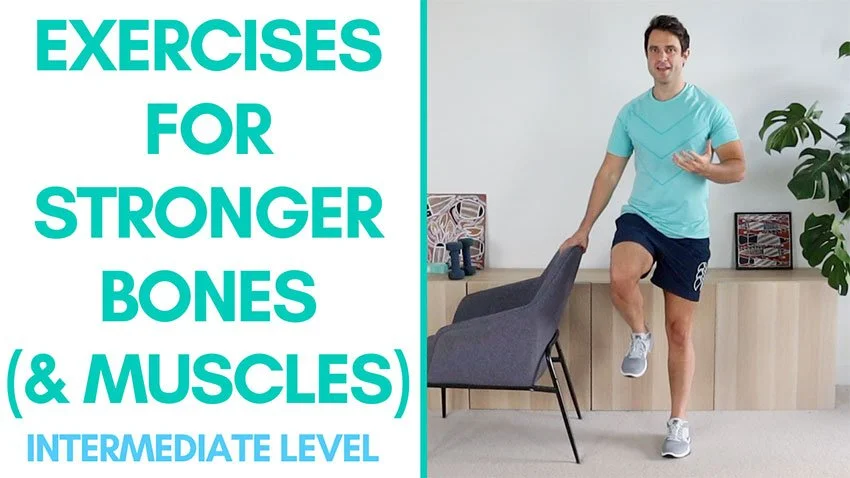
![The Complete Guide To Strong Bones Over 60 [Part 3]](https://images.squarespace-cdn.com/content/v1/5652f717e4b0070eb05c2f63/1623860232100-I1SN5F9BO6NE4XYU8PRZ/strong+healthy+bones+Osteoporosis+Osteoarthritis.png)

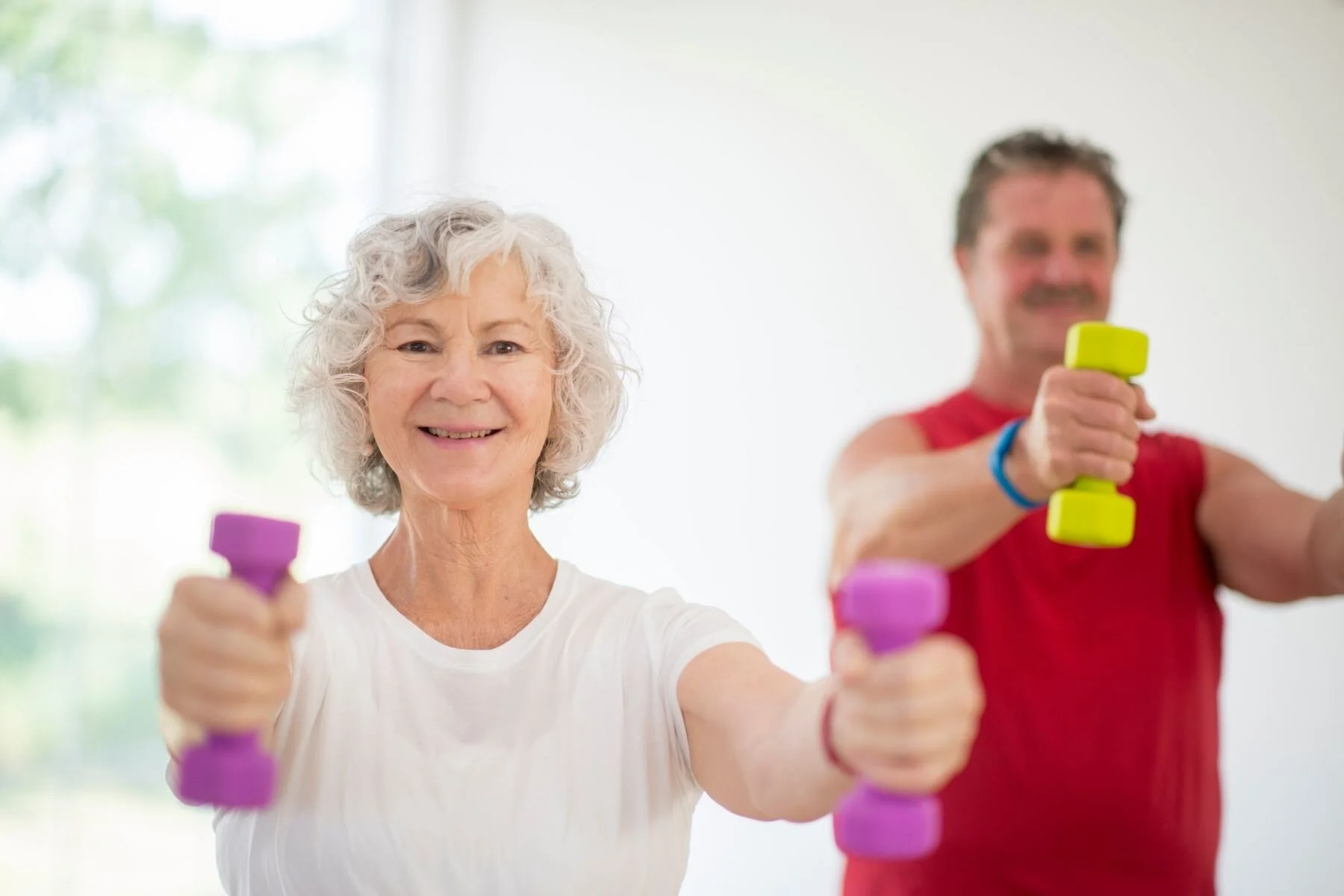
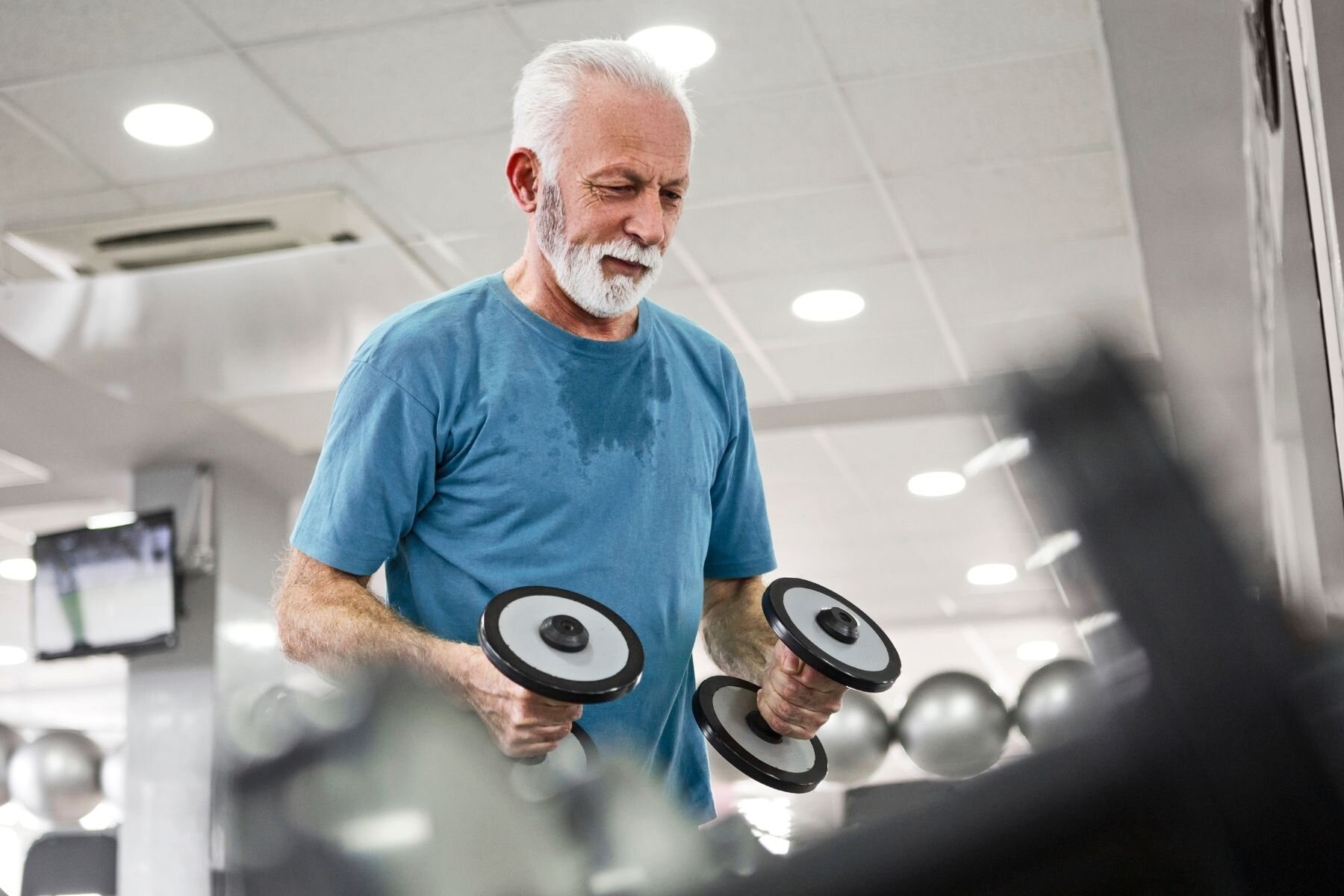
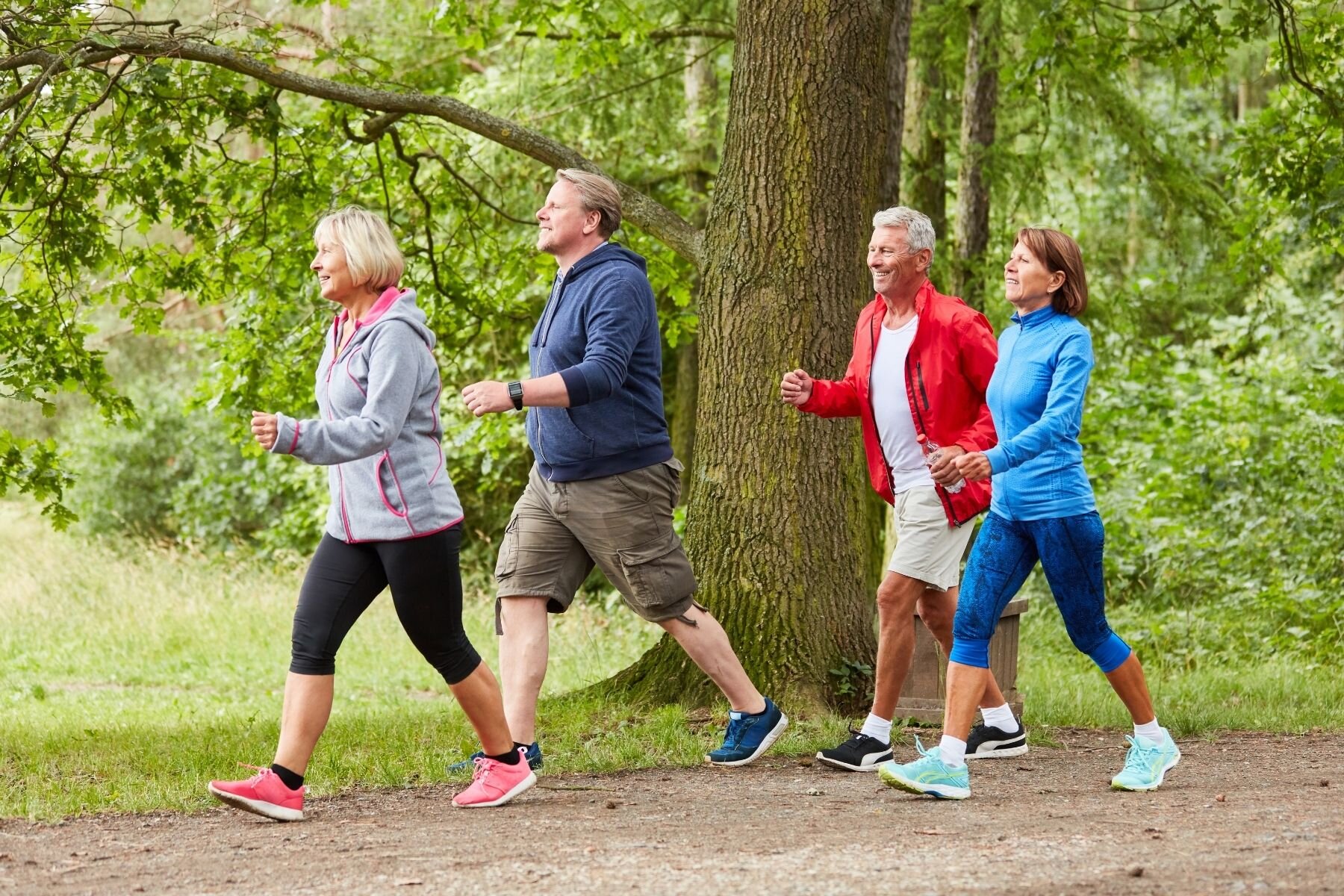
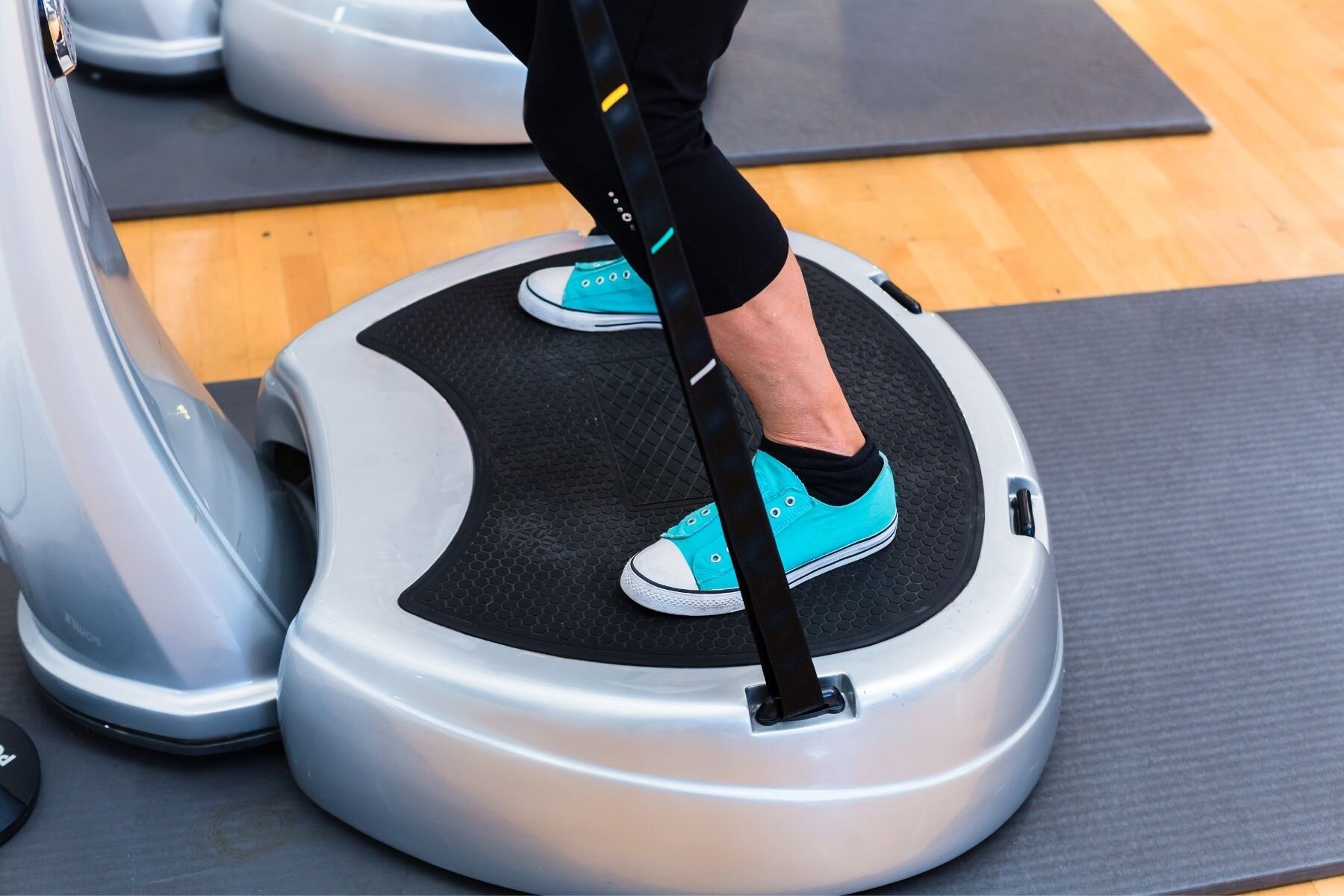
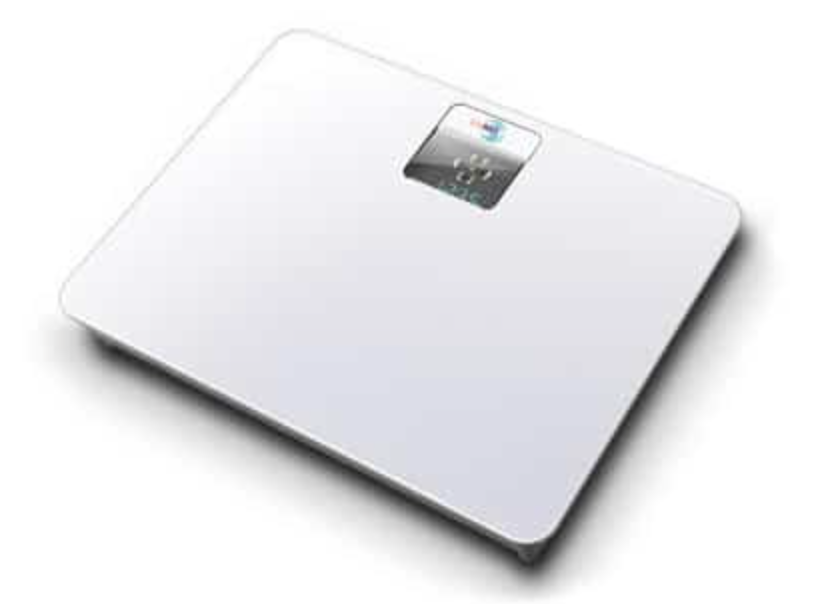


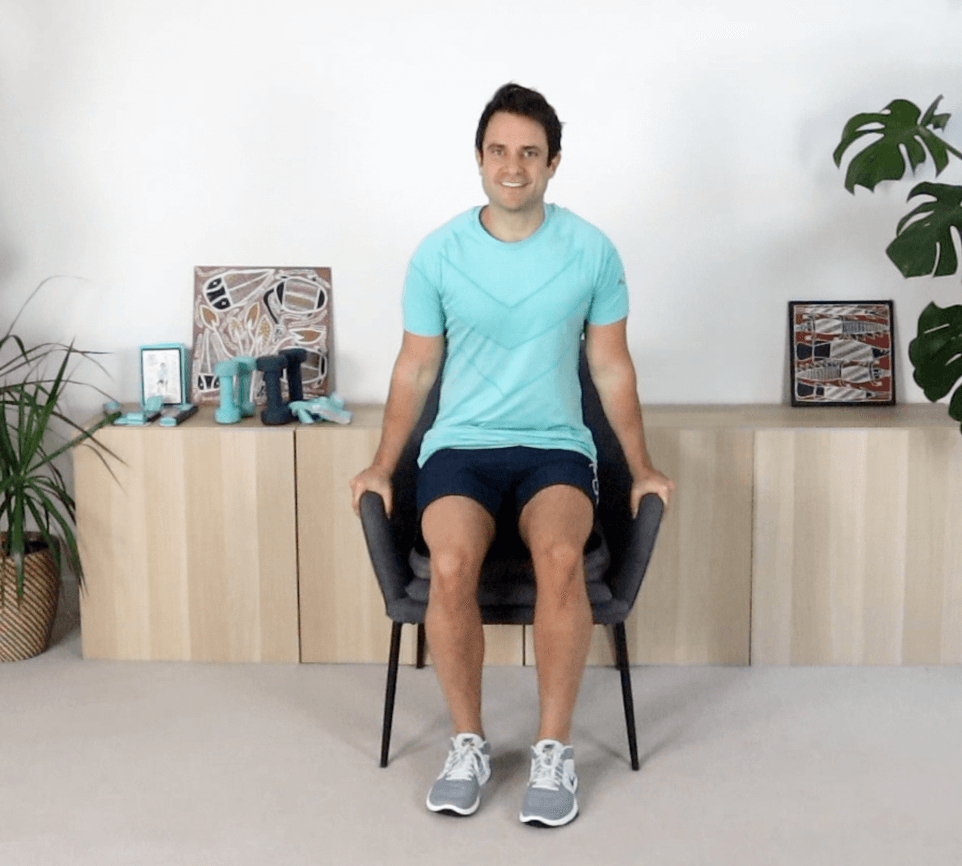

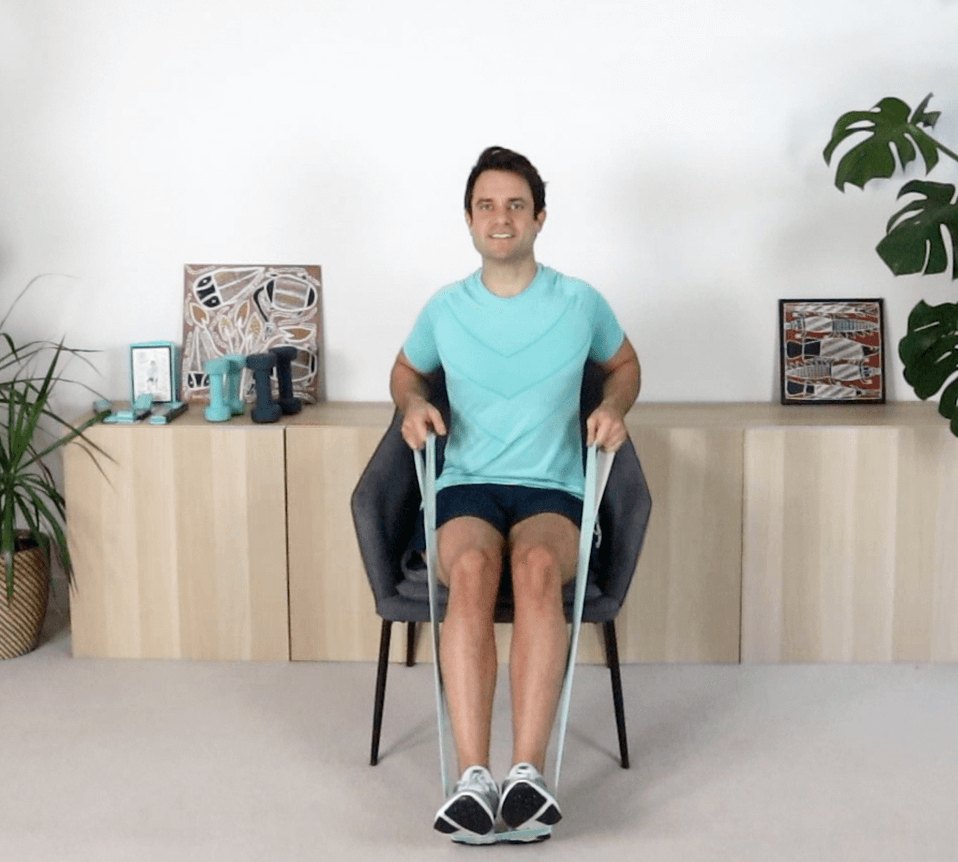



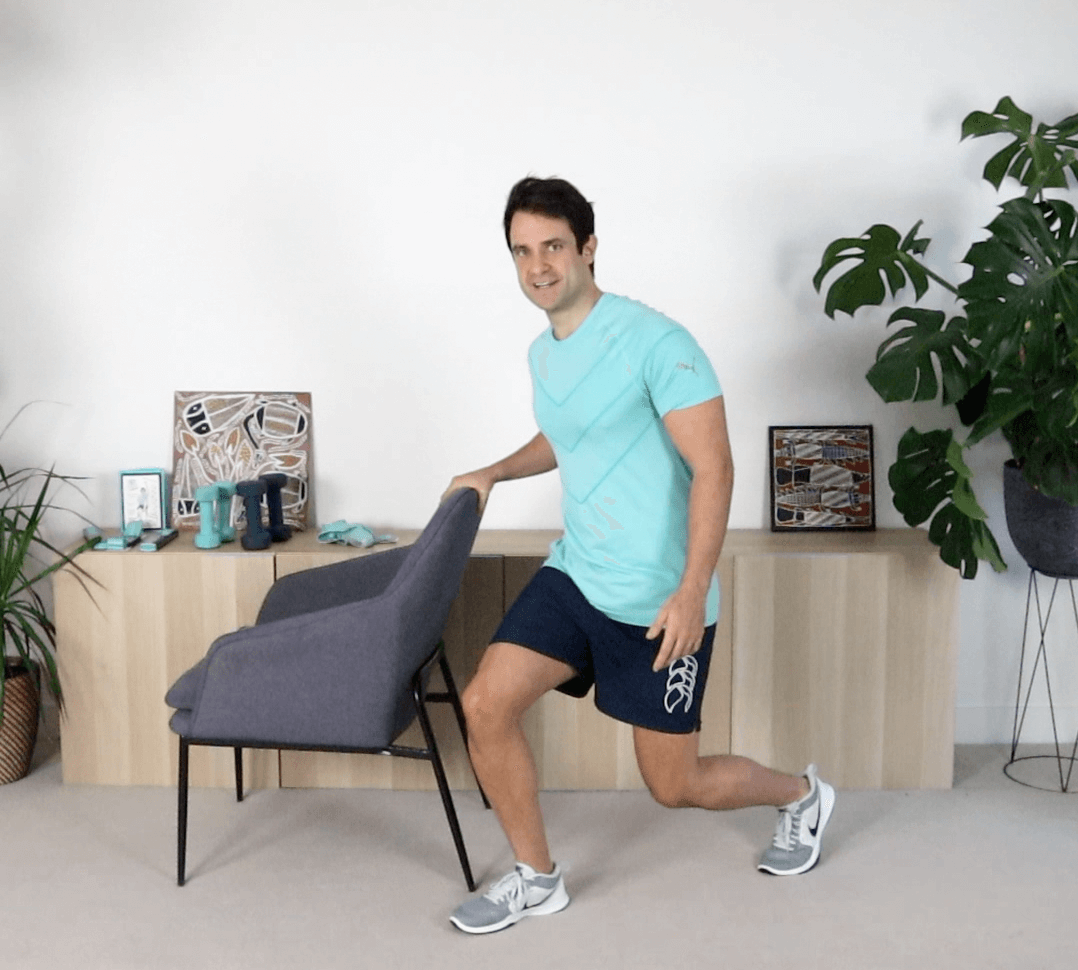
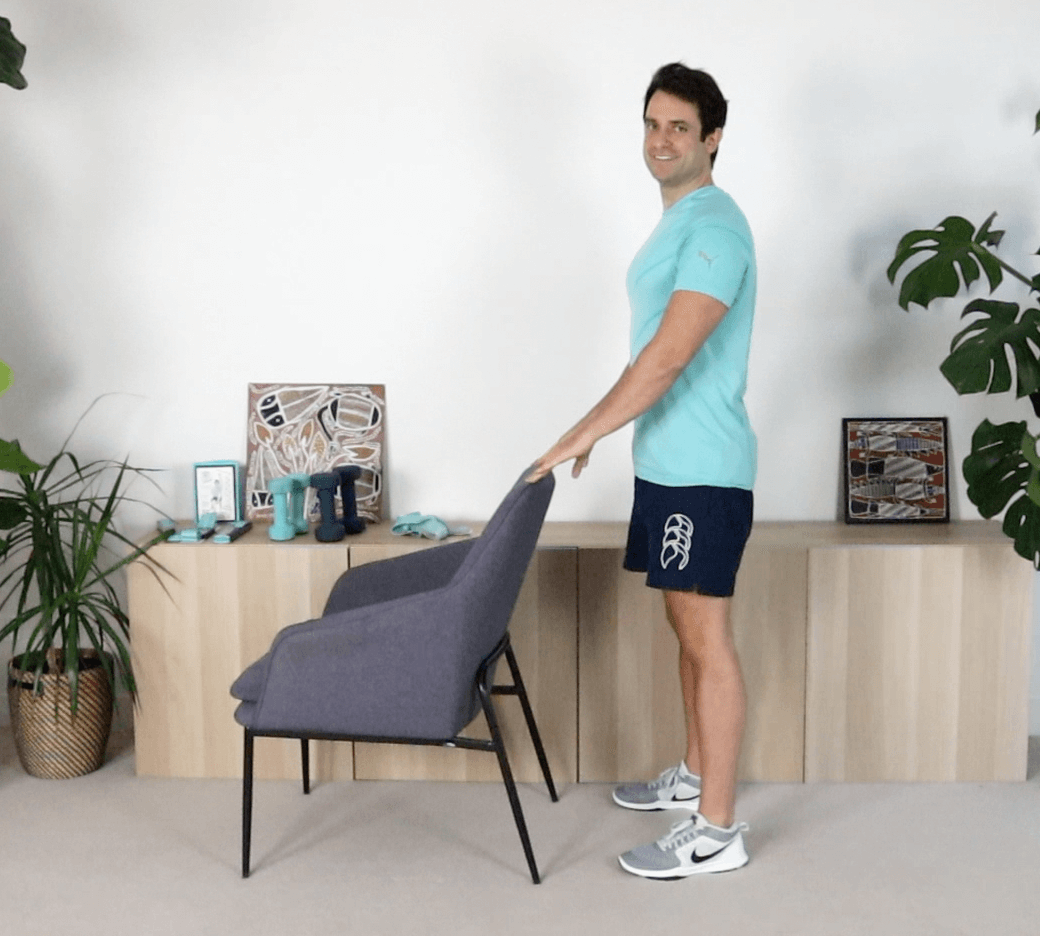
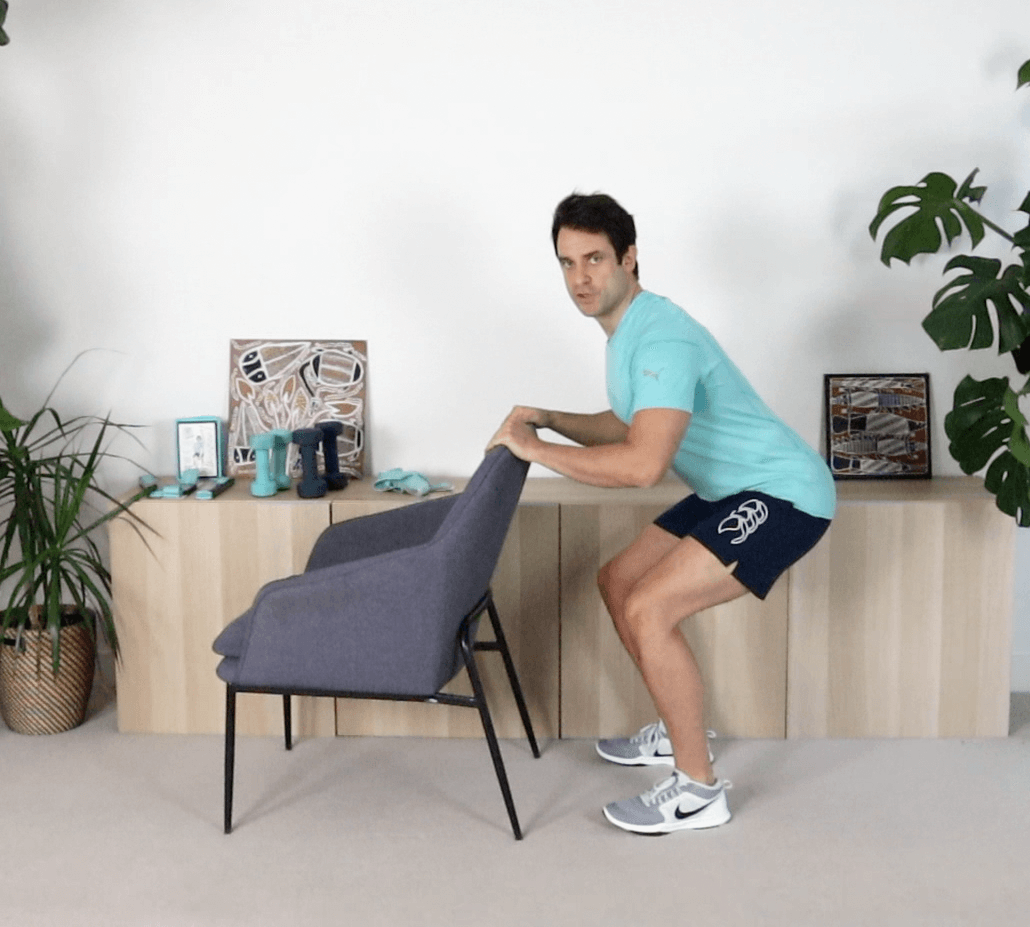

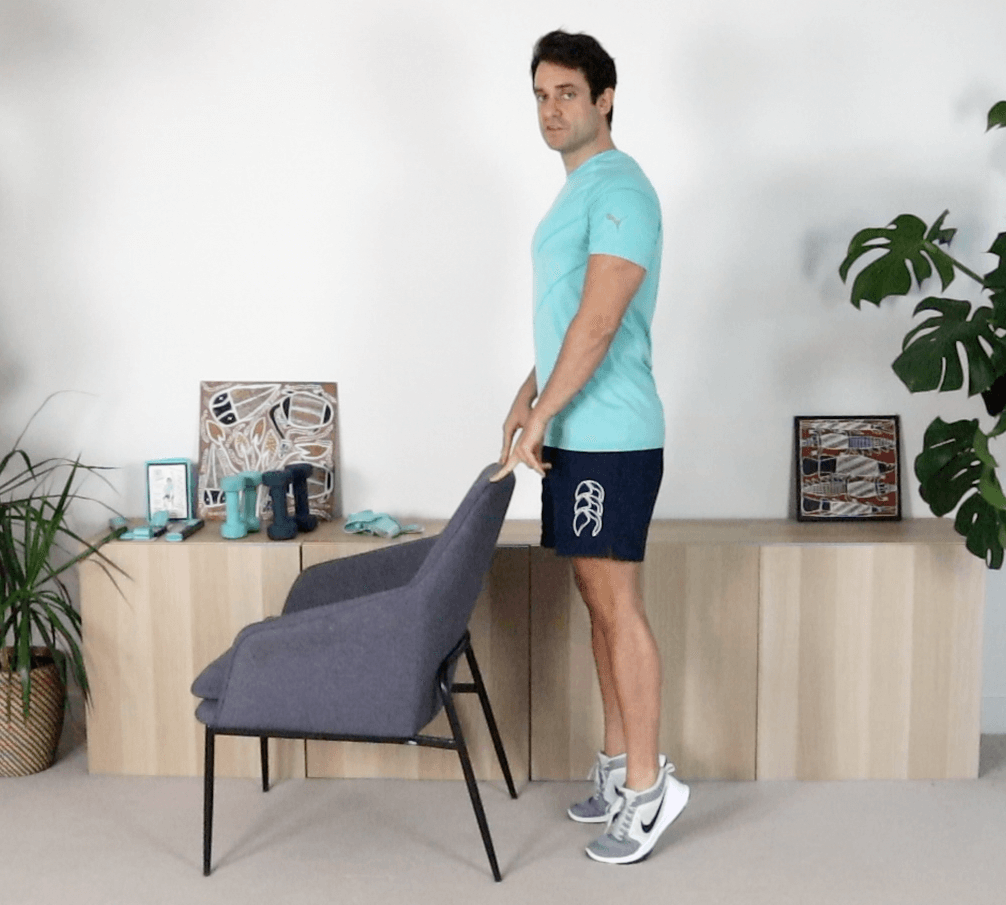



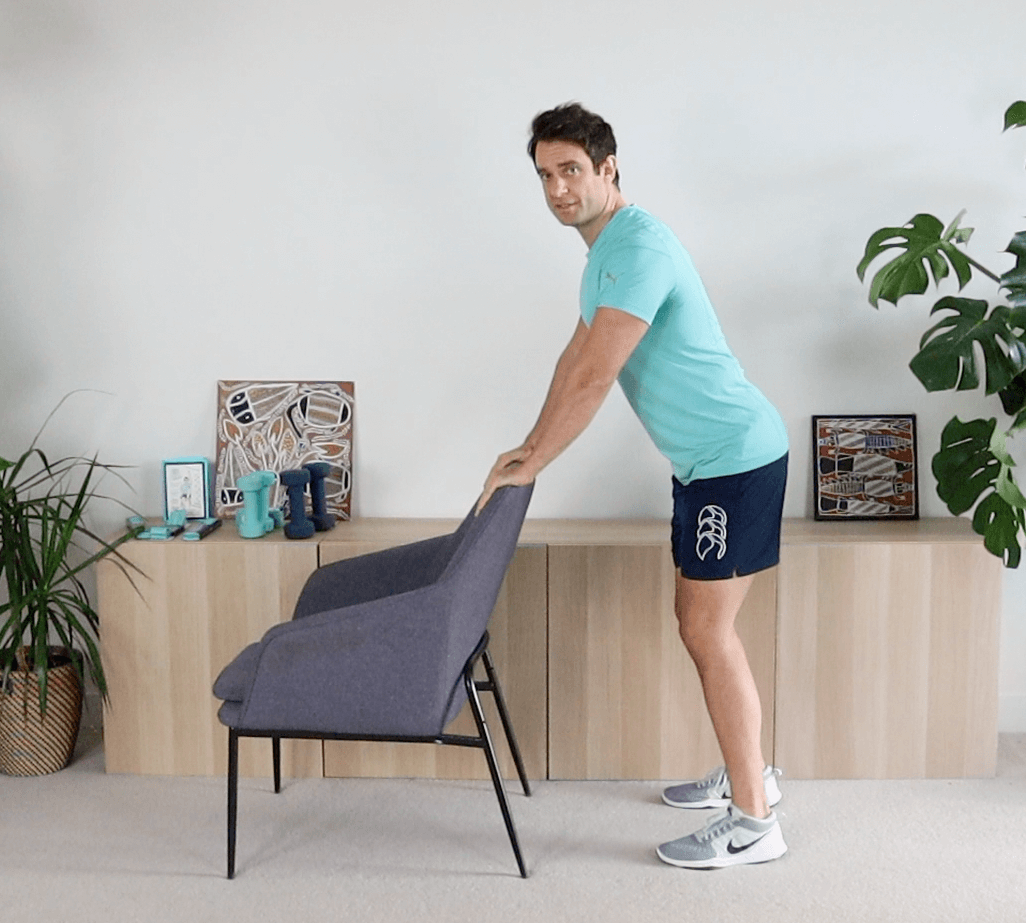






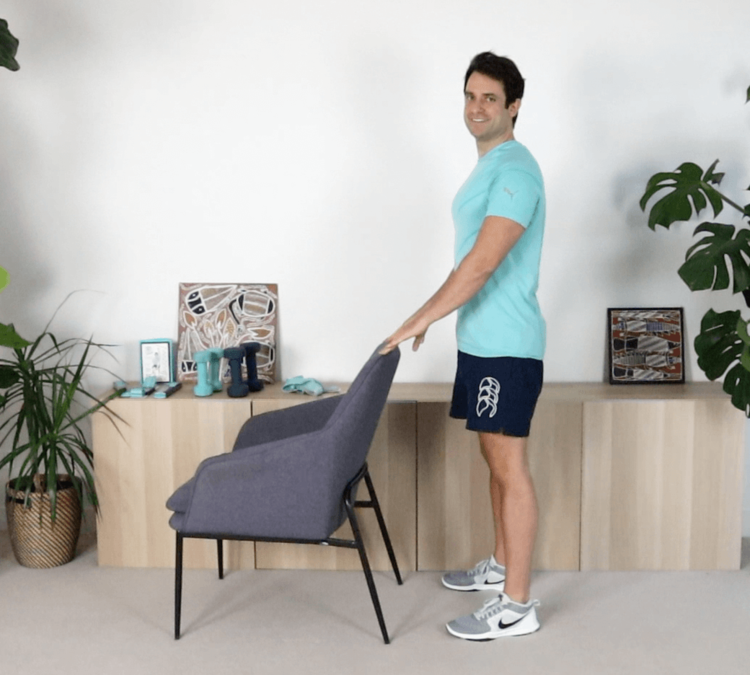
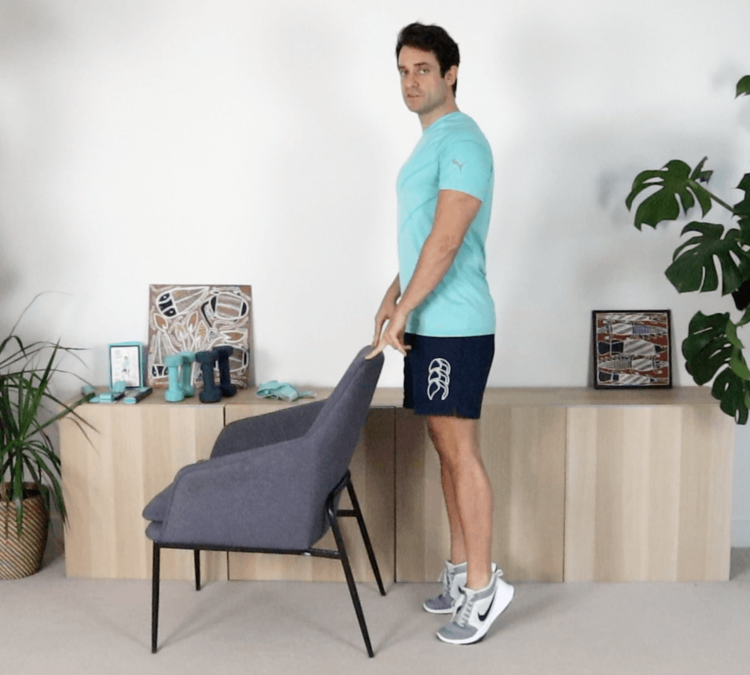
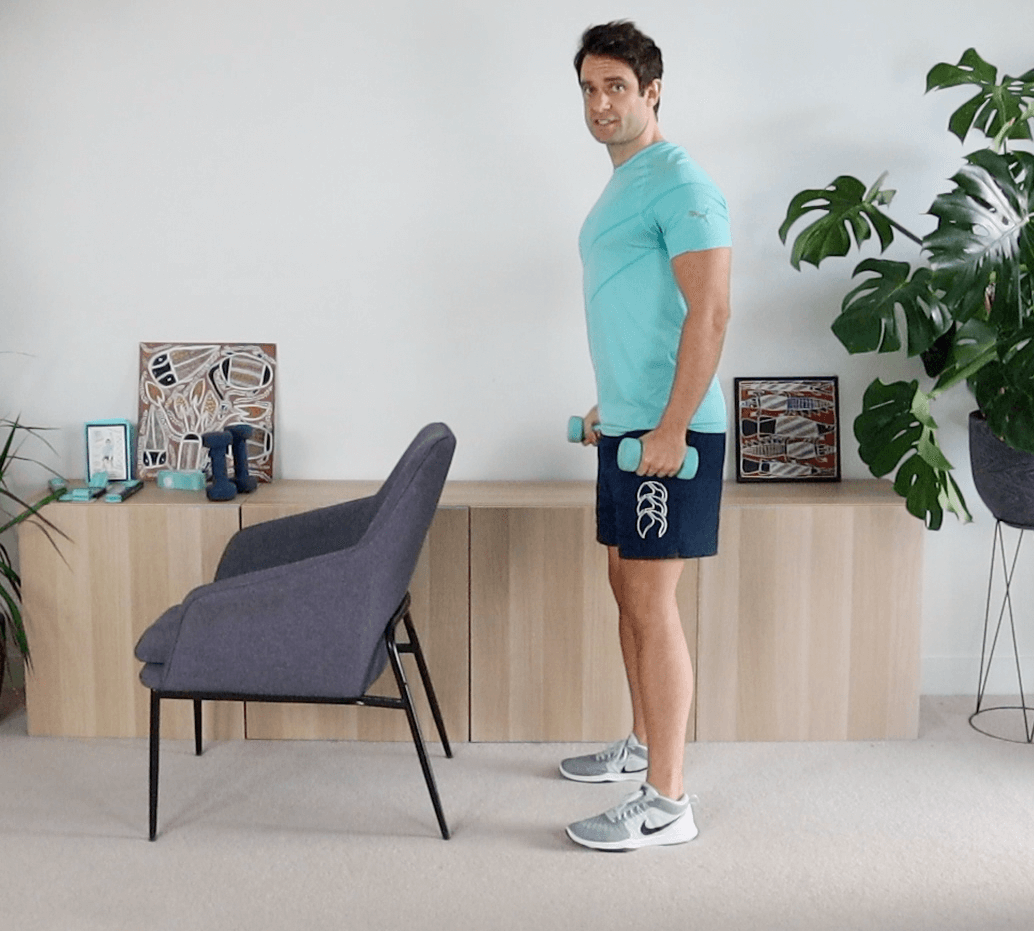
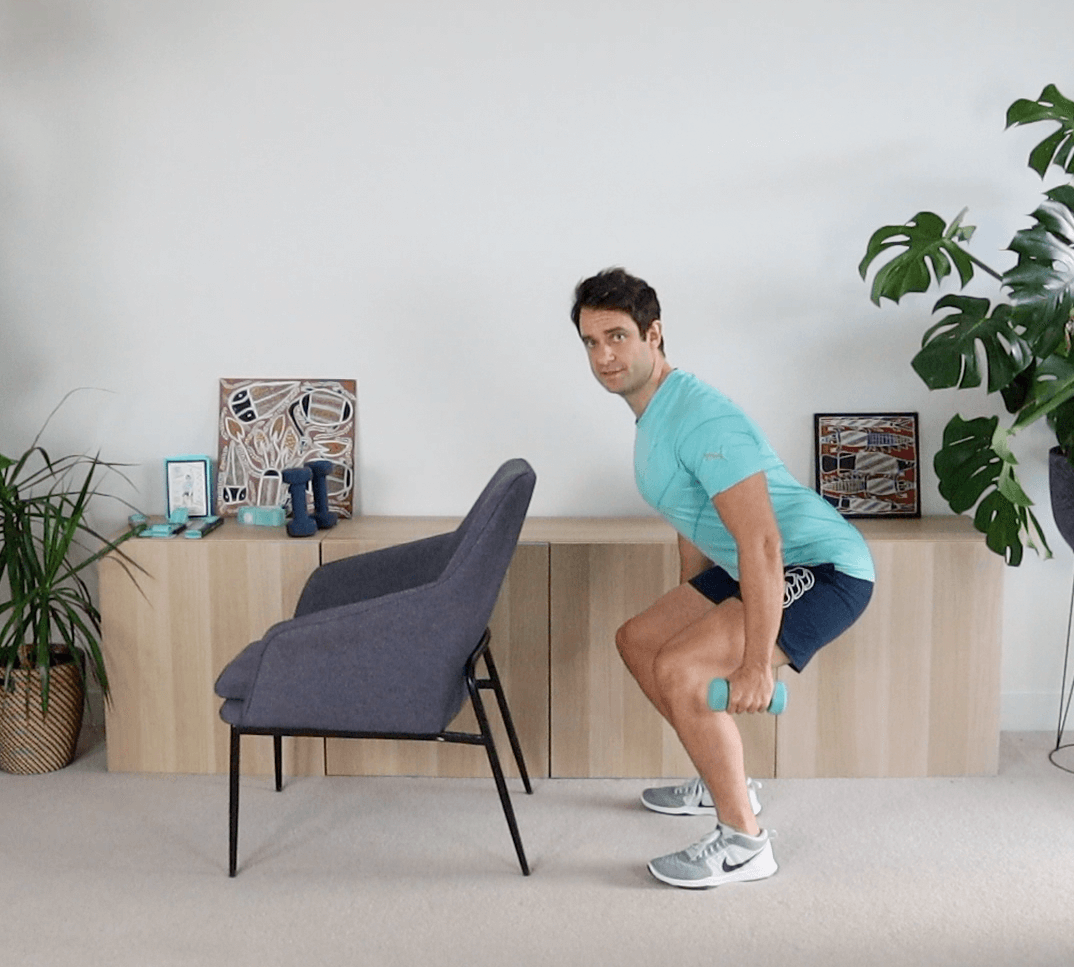
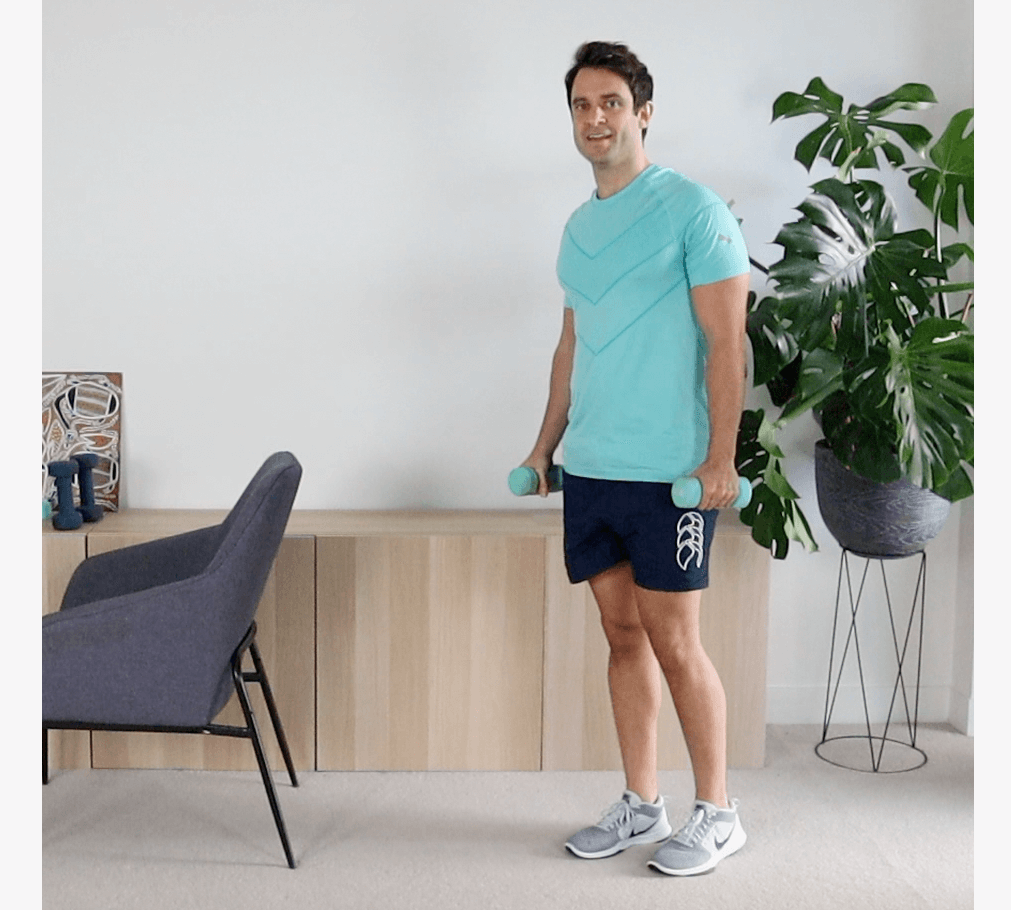

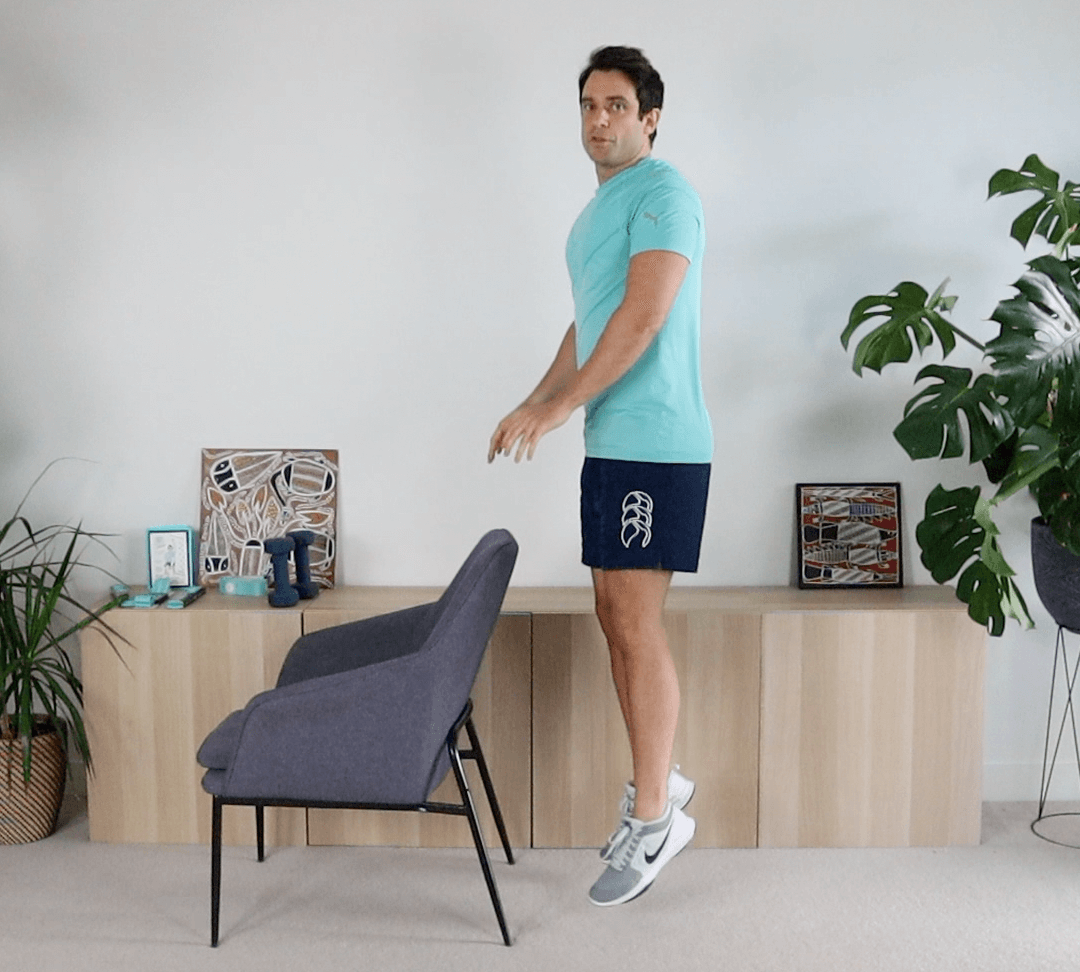
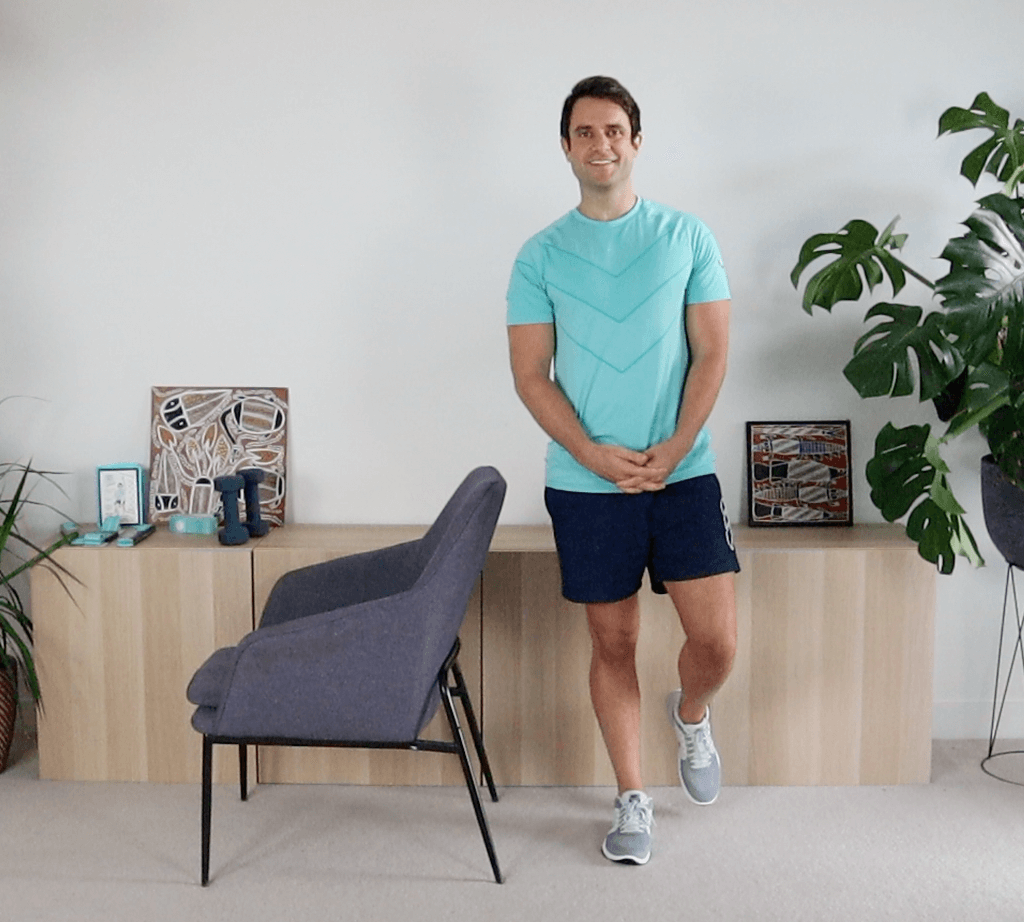



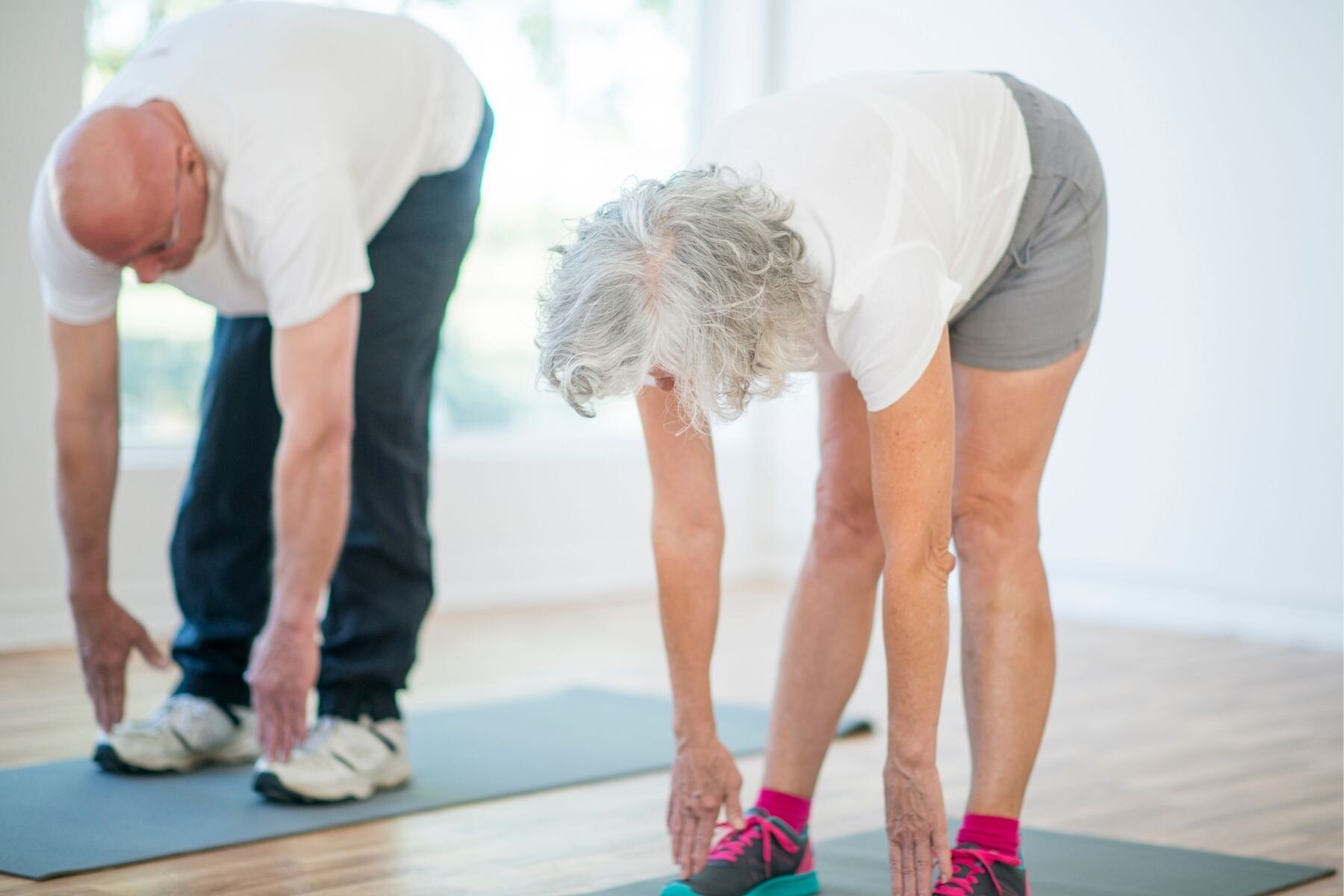

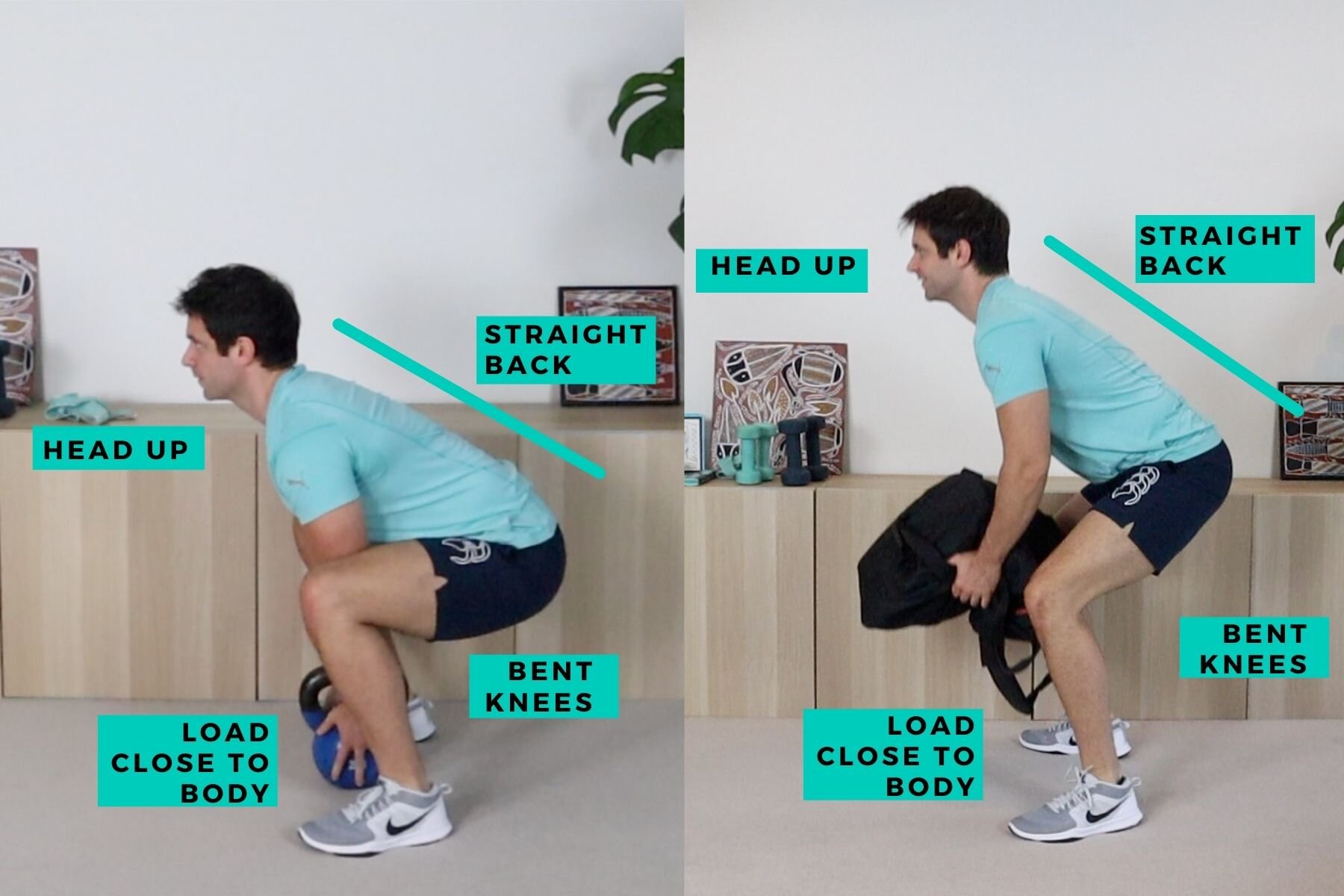

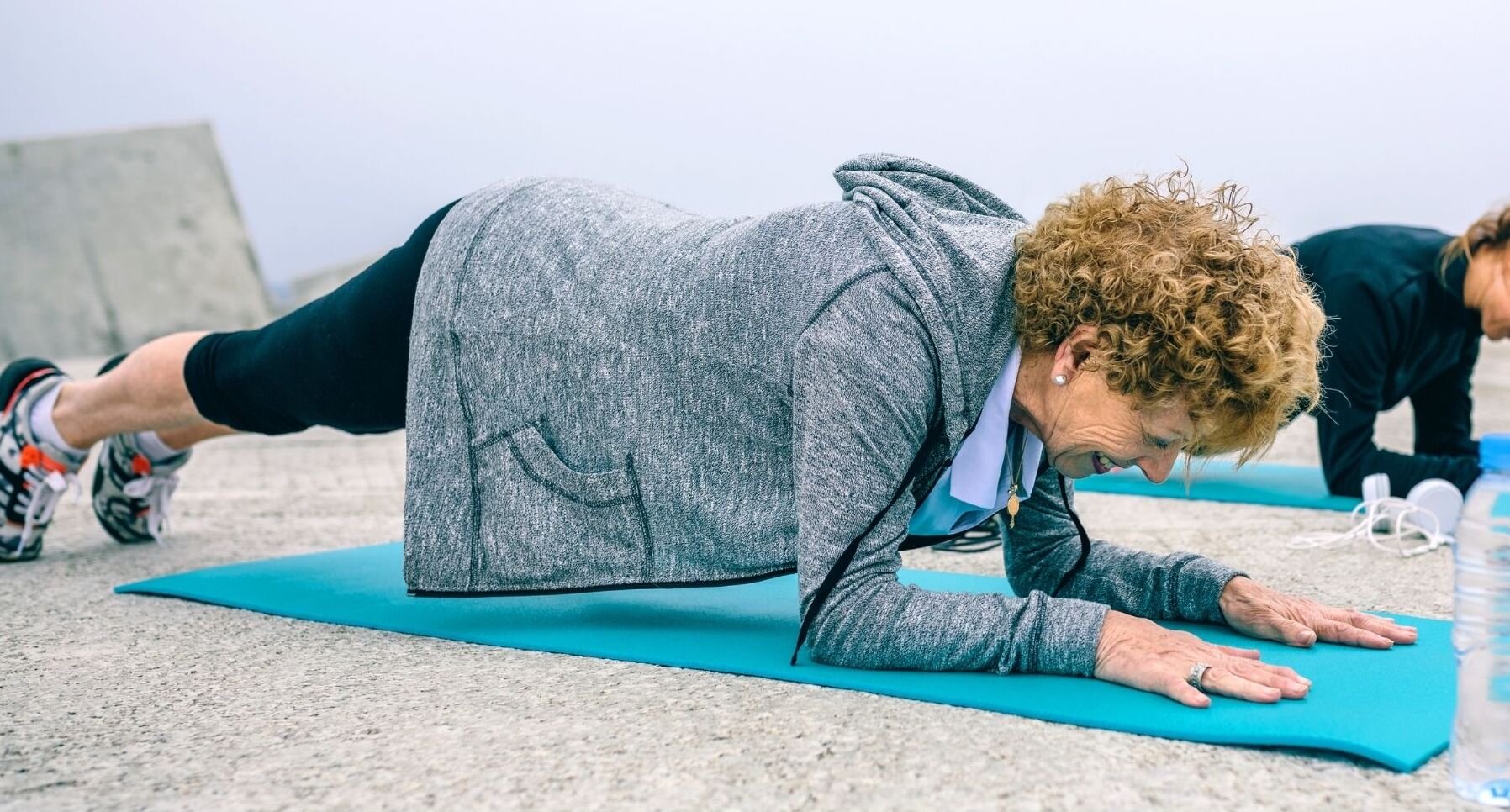

![The Complete Guide To Strong Bones Over 60 [Part 2]](https://images.squarespace-cdn.com/content/v1/5652f717e4b0070eb05c2f63/1623695191708-HYNL8UKSK15DBU8E6ZRJ/Bone+Health+Osteoporosis+Osteoarthritis.png)

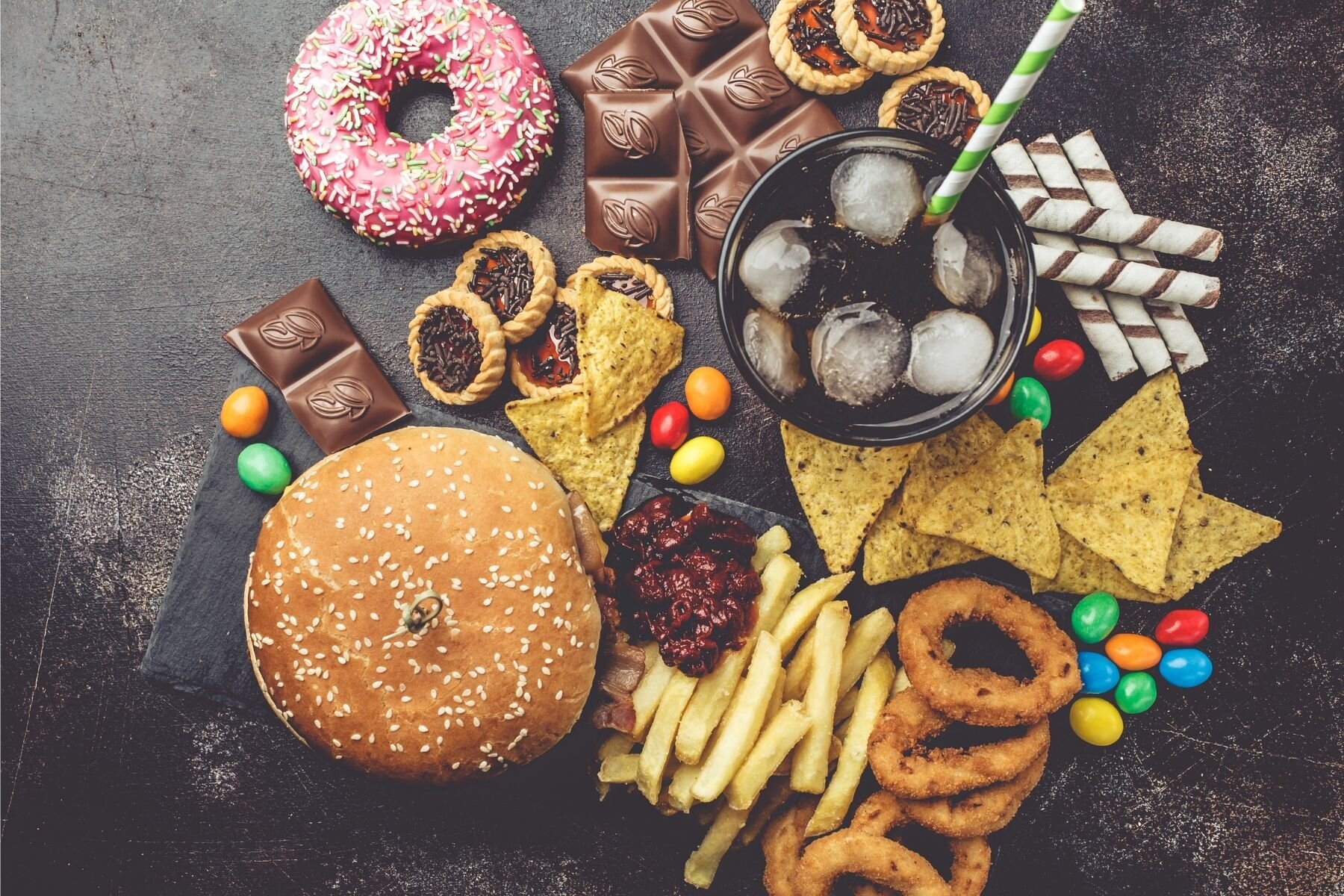

















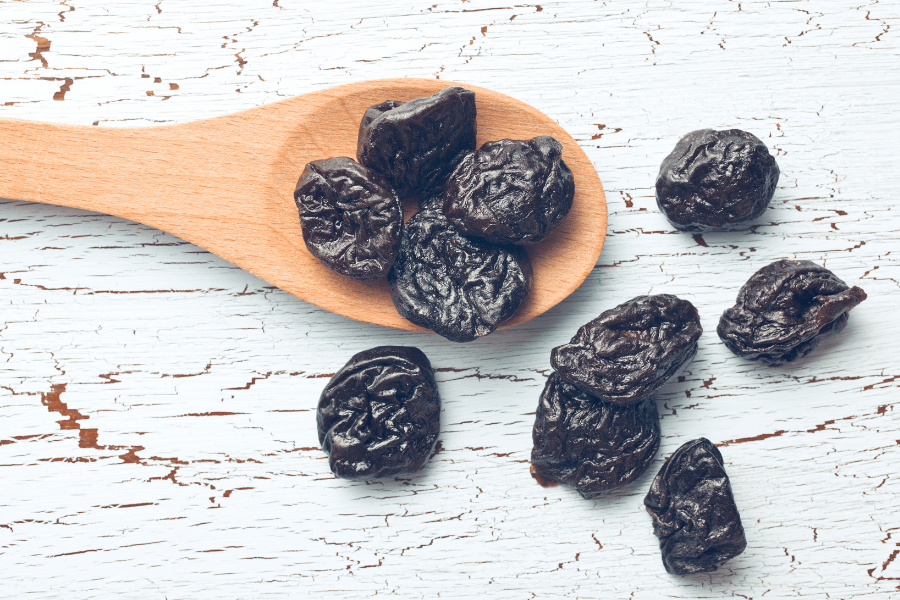





![The Complete Guide To Strong Bones Over 60 [Part 1]](https://images.squarespace-cdn.com/content/v1/5652f717e4b0070eb05c2f63/1623694989255-558WBGT4E3USETS22J47/Bone+Health+Osteoporosis+Osteoarthritis+1+%281%29.png)

